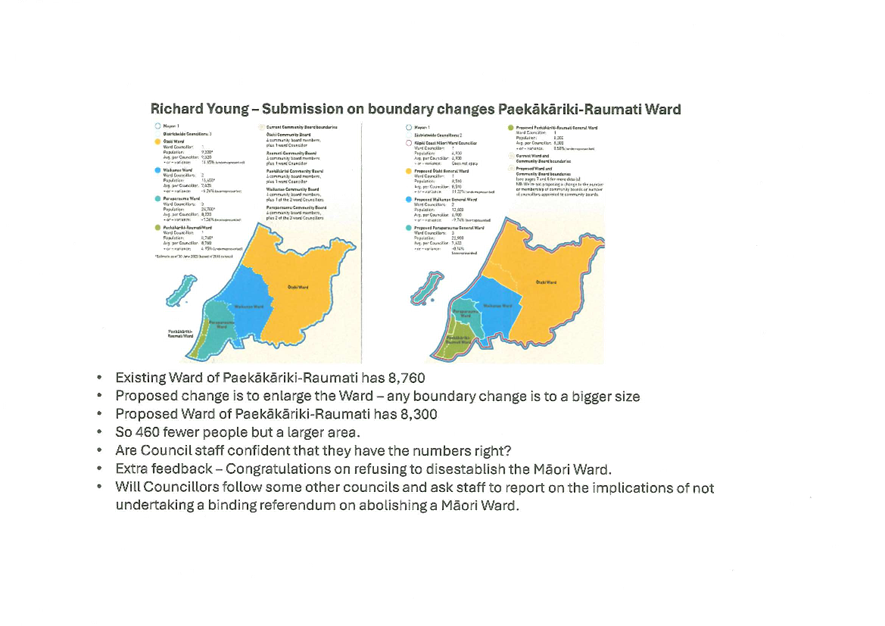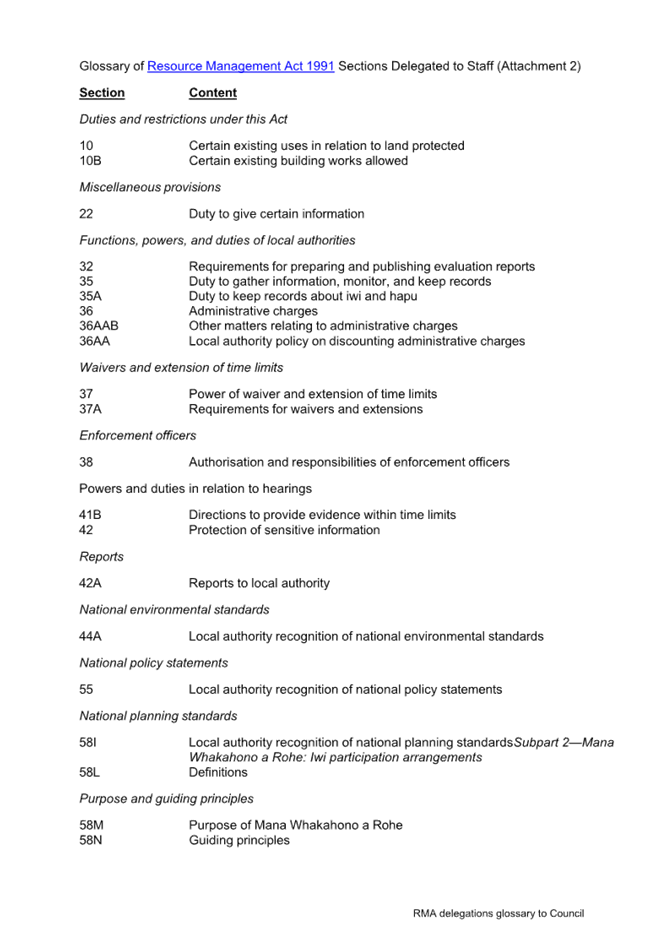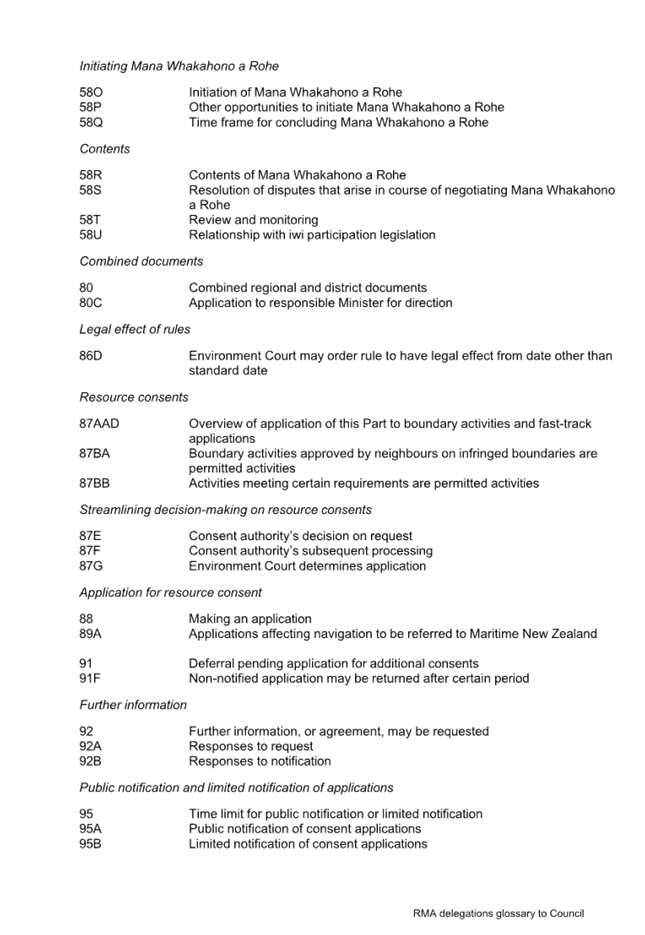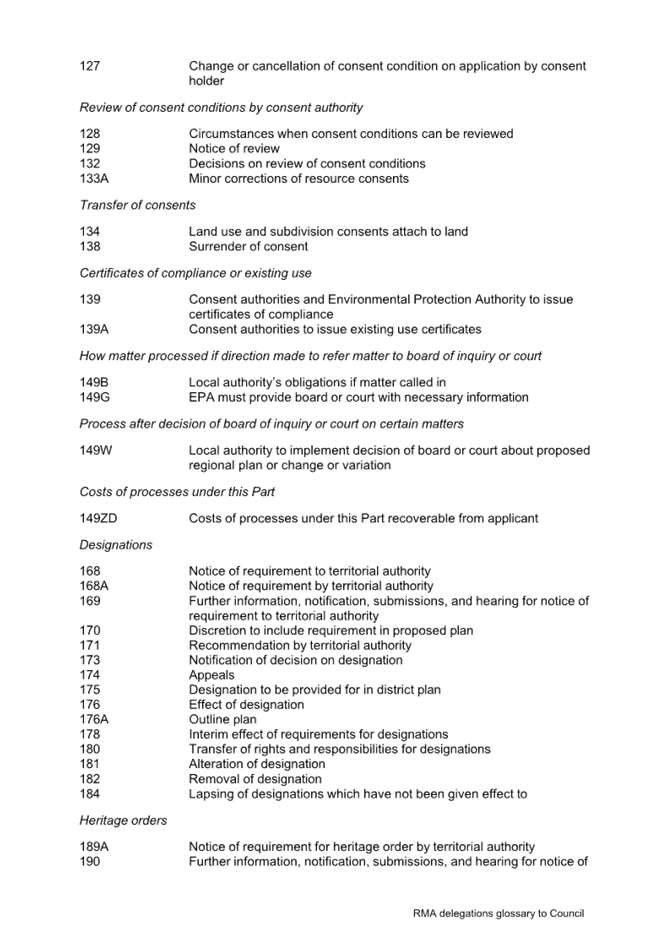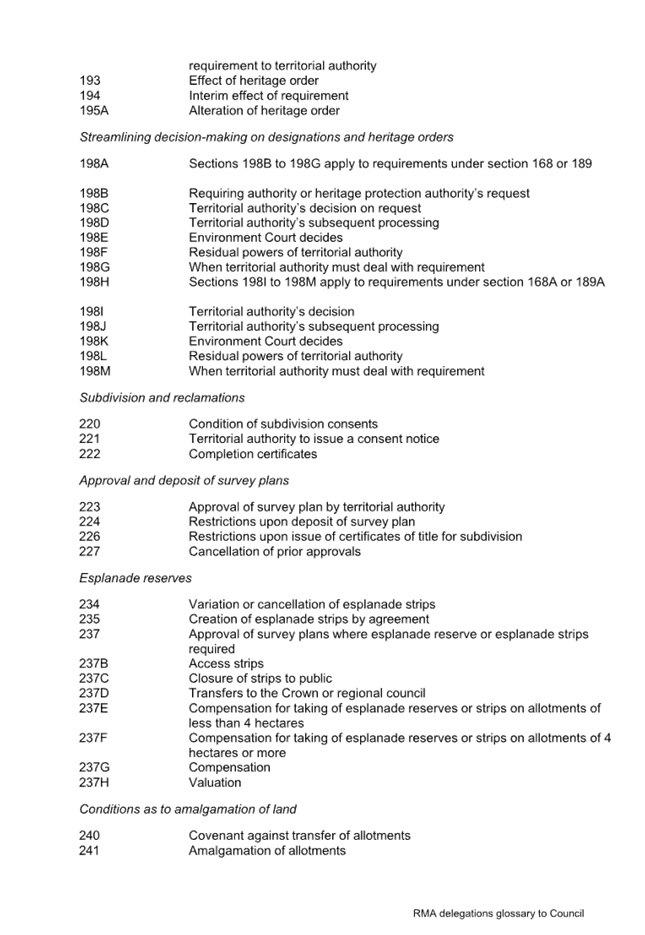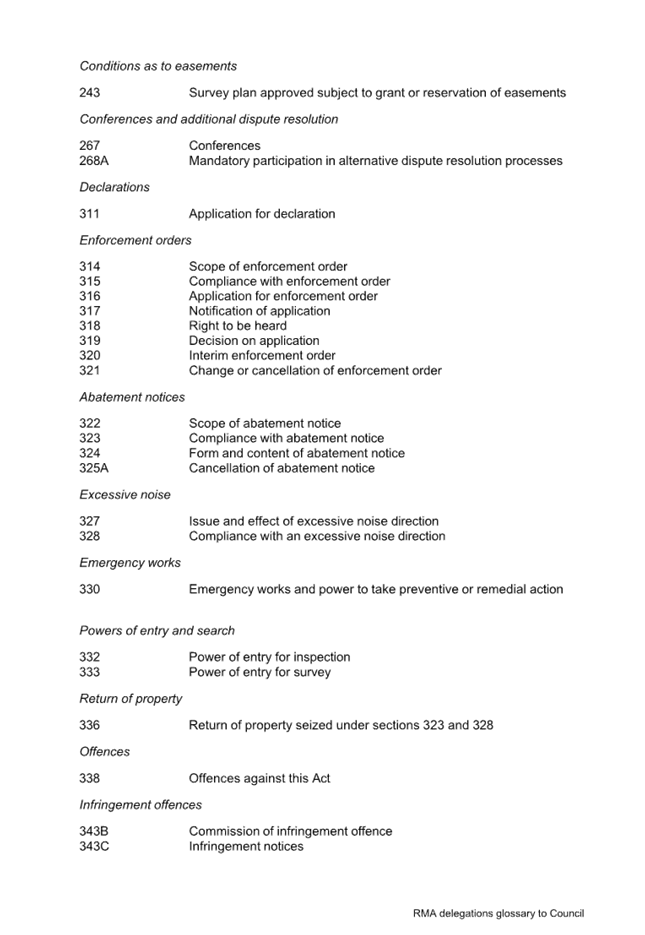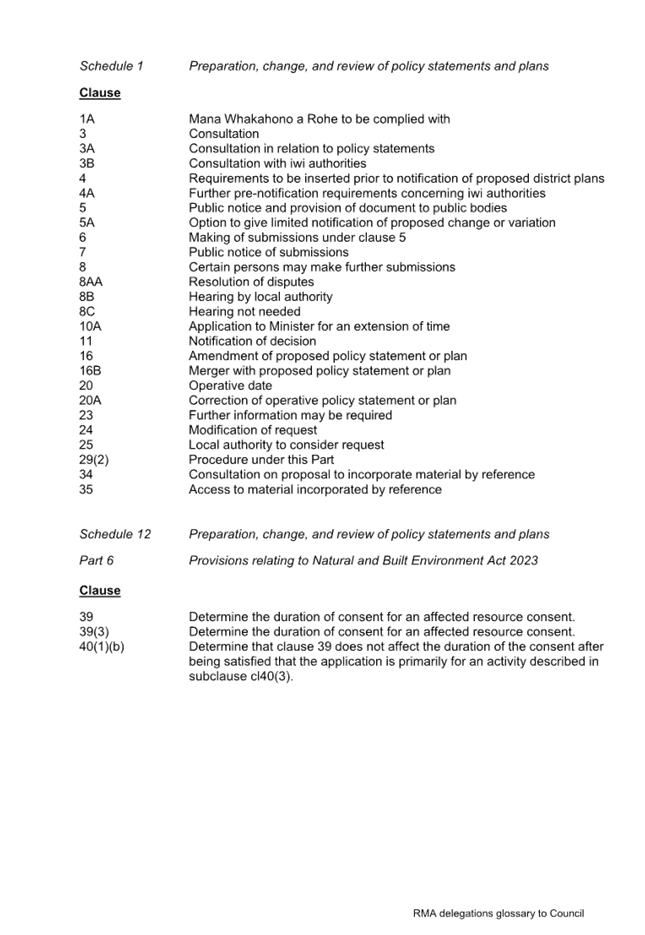|

|
|
RĀRANGI TAKE
AGENDA
Hui Kaunihera | Council Meeting
|
|
I hereby give notice that a Meeting of the Kāpiti
Coast District Council will be held on:
|
|
Te Rā | Date:
|
Thursday, 31 October
2024
|
|
Te Wā | Time:
|
9.30am
|
|
Te Wāhi | Location:
|
Council
Chamber
Ground
Floor, 175 Rimu Road
Paraparaumu
|
|
Darren Edwards
Chief Executive
|
|
Council Meeting Agenda
|
31 October 2024
|
Kāpiti Coast District Council
Notice is hereby given
that a meeting of the Kāpiti Coast District Council will be held in the Council Chamber, Ground Floor, 175 Rimu Road,
Paraparaumu, on Thursday 31 October 2024, 9.30am.
Kaunihera | Council
Members
|
Mayor
Janet Holborow
|
Chair
|
|
Deputy
Mayor Lawrence Kirby
|
Deputy
|
|
Cr
Glen Cooper
|
Member
|
|
Cr
Martin Halliday
|
Member
|
|
Cr
Sophie Handford
|
Member
|
|
Cr
Rob Kofoed
|
Member
|
|
Cr
Liz Koh
|
Member
|
|
Cr
Jocelyn Prvanov
|
Member
|
|
Cr
Kathy Spiers
|
Member
|
|
Cr
Shelly Warwick
|
Member
|
|
Cr
Nigel Wilson
|
Member
|
1 Nau
Mai | Welcome
2 Karakia
a te Kaunihera | Council Blessing
|
I a mātou e whiriwhiri ana i
ngā take kei mua i ō mātou aroaro
E pono ana mātou ka kaha tonu ki te whakapau mahara
huapai mō ngā hapori e mahi nei mātou.
Me kaha hoki mātou katoa kia whaihua, kia
tōtika tā mātou mahi,
Ā, mā te māia, te tiro whakamua me te
hihiri
Ka taea te arahi i roto i te kotahitanga me te aroha.
|
As we deliberate on the issues before
us,
We trust that we will reflect
positively on the
communities we serve.
Let us all seek to be effective and
just,
So that with courage, vision and
energy,
We provide positive
leadership in a spirit of harmony and compassion.
|
3 Whakapāha
| Apologies
4 Te
Tauākī o Te Whaitake ki ngā Mea o te Rārangi Take | Declarations
of Interest Relating to Items on the Agenda
Notification from Elected
Members of:
4.1 – any interests that
may create a conflict with their role as an elected member relating to the
items of business for this meeting, and
4.2 – any interests in
items in which they have a direct or indirect pecuniary interest as provided
for in the Local Authorities (Members’ Interests) Act 1968
5 Te
Whakatakoto Petihana | Presentation of Petition
Nil
|
Council Meeting Agenda
|
31 October 2024
|
6 Ngā
Whakawā | Hearings
6.1 Proposed
Dangerous, Affected, and Insanitary Buildings Policy Submissions Hearing
TE PŪTAKE | PURPOSE
1 This
hearing is for Council to hear from those who made submissions on the Proposed
Dangerous, Affected, and Insanitary Buildings Policy during the public
consultation period over September and October.
|
Council Meeting Agenda
|
31 October 2024
|
9 Te
Pūrongo a te Koromatua | Mayor's Report
9.1 Mayoral
Activities - 10 May to 23 October 2024
Author: Mayor
Janet Holborow
TE PŪTAKE | PURPOSE
1 To
provide an overview of activities undertaken by the Mayor from 10 May 2024 to
23 October 2024.
Ngā āpitihanga | Attachments
1. Mayoral
Activities - 10 May to 23 October 2024 ⇩ 
|
Council Meeting Agenda
|
31 October 2024
|




|
Council Meeting Agenda
|
31 October 2024
|
10 Pūrongo
| Reports
10.1 Adoption
of the Annual Report and Summary Annual Report for 2023/2024
Kaituhi |
Author: Sheryl
Gavin, Principal Advisor Corporate Services
Kaiwhakamana
| Authoriser: Mark de Haast, Group Manager Corporate Services
Te pūtake |
Purpose
1 This
report seeks adoption of the audited Annual Report and Summary Annual Report
for the year ended 30 June 2024.
He
whakarāpopoto | EXecutive summary
2 This
report does not require an executive summary.
Te tuku haepapa
| Delegation
3 Council
has delegated authority to consider this report under the Governance Structure,
Section A2 Council and Mayoral Powers which
includes adopting an Annual Report
Taunakitanga | RECOMMENDATIONS
A. That Council adopts the
Annual Report and the Summary Annual Report for the year ended 30 June 2024
attached as Appendix 1 and 2 to this report; and
B. That
Council delegates to the Mayor and the Chief Executive authority to approve
minor editorial changes as required by Council and/or Council’s auditors,
Ernst & Young (if any), to the Annual Report and Summary Annual Report for
the year ended 30 June 2024, prior to its publication.
Tūāpapa | Background
4 Council
is required under the Local Government Act 2002 to adopt an audited Annual
Report and audited Summary Annual Report for the preceding financial year
ending on 30 June no later than 31 October.
5 Drafts
of the Annual Report and Summary Annual Report were provided to the Risk and
Assurance Committee for endorsement on 15 October 2024. After due consideration
and agreed edits and additions, the Committee now recommends these reports be
adopted by the Council.
He
kōrerorero | Discussion
6 The
Annual Report compares the financial
and non-financial performance of Council with the performance forecast in the
2023/24 Annual Plan.
Financial performance
7 A
non-cash operating surplus of $85.2 million was recorded for 2023/24, including
$82 million non-cash revenue from the vesting of Old State Highway One roading
assets.
8 Council’s
net value on 30 June 2024 was $2.05 billion, with assets valued at $2.4
billion.
9 Capital
spend for the 2023/24 financial year was $81.7 million, $20.1 million higher
than the previous year, demonstrating the steady increase in recent years as we
invested for growth and resilience.
10 Net
debt (total borrowings less term deposits, borrower notes, and cash) on 30 June
2024 was $244.6 million, representing 215 percent of operating income against
the upper limit of 280 percent and preferred limit of 250 percent set out in
the financial strategy.
11 Council
retained its S&P Global AA credit rating. The rating again comes with a
‘negative outlook’, driven by rising infrastructure costs and
responsibilities, and uncertainty about central government water reform policy.
The negative outlook has no financial consequences on our borrowing costs.
12 The
Disclosure Statement for the year ending 30 June 2024 presents Council’s
financial performance in relation to eight prudence benchmarks set by the
Department of Internal Affairs to enable assessment of whether Council is
prudently managing its revenue, expenses, assets, liabilities, and general
financial dealings. Council met six of the benchmarks.
Non-financial service performance
13 79 percent of service performance targets
were achieved. This is an improvement of 3 percent on the 76 percent achieved
in 2022/23.
14 Residents’
satisfaction with Council’s performance was recorded at 63 percent, a
slight decrease of 1 percent from the 64 percent achieved in 2022/23. The
result is calculated using the results of quarterly Residents Opinion Surveys
gathering feedback from a total of 800 residents (considered to be a
statistically valid sample size) throughout the year.
Amendments following Risk and Assurance Committee meeting
15 October 2024
15 Following
the Risk and Assurance Committee meeting a range of requested minor wording
changes and error corrections were applied. In addition, it was agreed to
extend the Governance section to include Councillors and Appointed Members
attendance at Council and committee/subcommittee meetings. The added material
can be found on pages 169-171.
He
take | Issues
16 There
are no issues arising in addition to those already highlighted in this report
and attachments.
17 Subject
to adoption by Council, the Annual Report and Summary Annual Report for the
year ended 30 June 2023 will receive an unqualified (clean) audit opinion from
Council’s auditors, Ernst & Young, on behalf of the Office of the
Auditor General (OAG).
Ngā kōwhiringa |
Options
18 There
are no options arising from this report.
Tangata whenua
19 The
Iwi Partnerships Group coordinated the development of the Mihimihi greeting
with iwi. The tangata whenua and governance activities in the report describe
progress against key pieces of work for the year and progress against
performance measures.
Panonitanga āhuarangi | Climate change
20 The
Annual Report provides an update on progress towards reducing carbon emissions
and coastal adaptation.
Ahumoni me ngā rawa | Financial
and resourcing
21 There
are no financial and resourcing considerations to note in addition to the
information included in the Annual Report and Summary Annual Report.
Ture me ngā Tūraru | Legal
and risk
22 The
report has been prepared in accordance with the Local Government Act 2002 and
all relevant financial reporting and accounting standards.
23 The
Council is required under the Local Government Act 2002 to adopt an audited
Annual Report and audited Summary Annual Report on or before the 31 October,
for the preceding financial year ending on 30 June.
Ngā pānga ki ngā kaupapa here | Policy impact
24 There
are no policy considerations arising from this report.
TE whakawhiti kōrero me te
tūhono | Communications &
engagement
Te mahere tūhono | Engagement
planning
25 The
Annual Report and Summary Annual Report have a low level of significance under
the Council’s Significance and Engagement Policy and do not require
community engagement.
Whakatairanga | Publicity
26 Following
Council adoption, the Annual Report and Summary Annual Report will be published
on the Council website, and physical copies will be available at Council
service centres and libraries within two weeks.
27 A
media release will be issued
Ngā āpitihanga | Attachments
1. Annual
Report for 2023/2024 (under separate cover) 
2. Summary
Annual Report for 2023/2024 ⇩ 
|
Council Meeting Agenda
|
31 October 2024
|







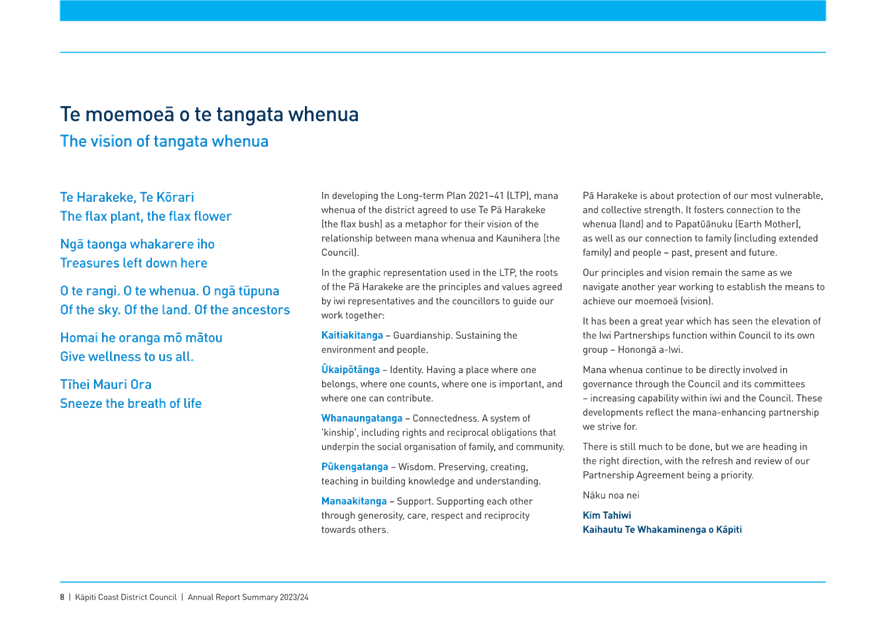
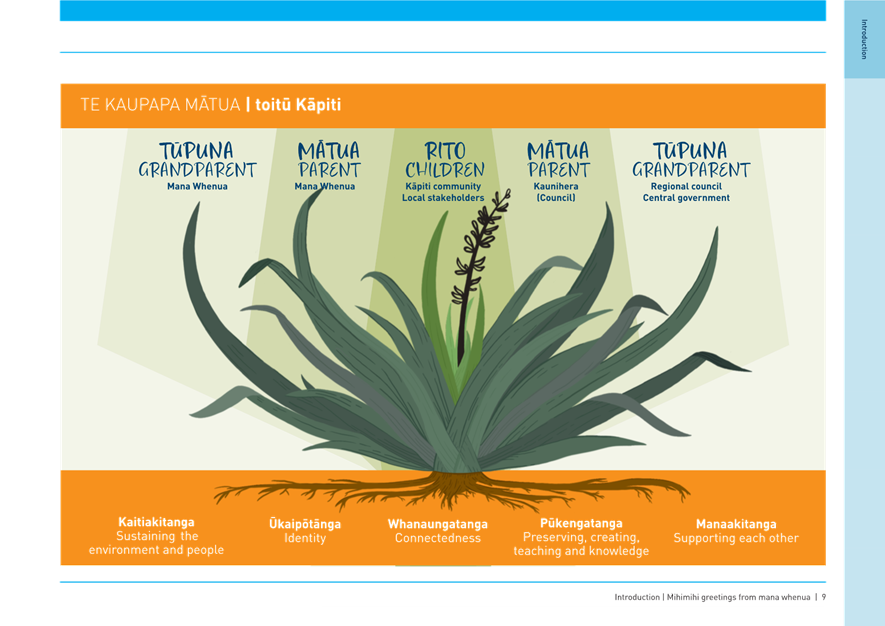
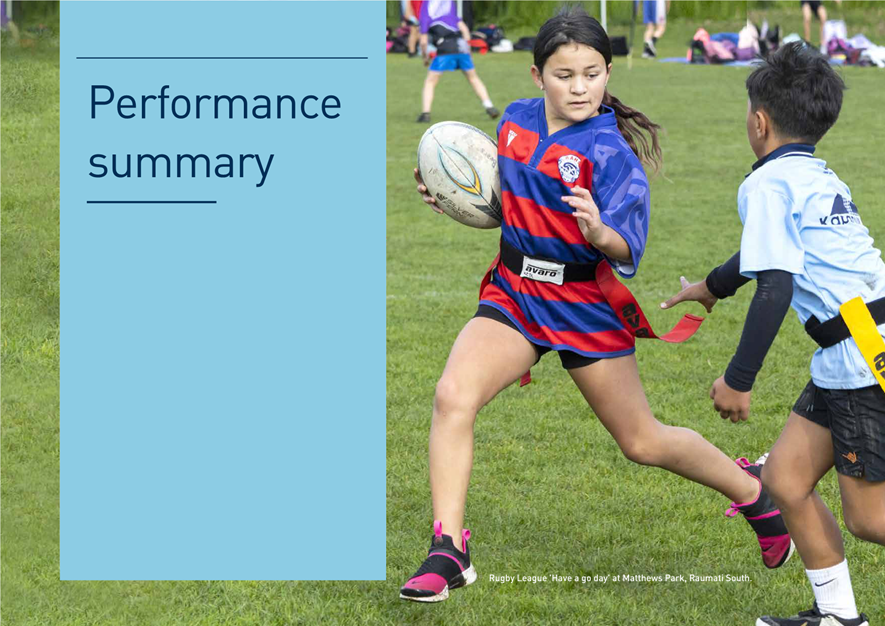
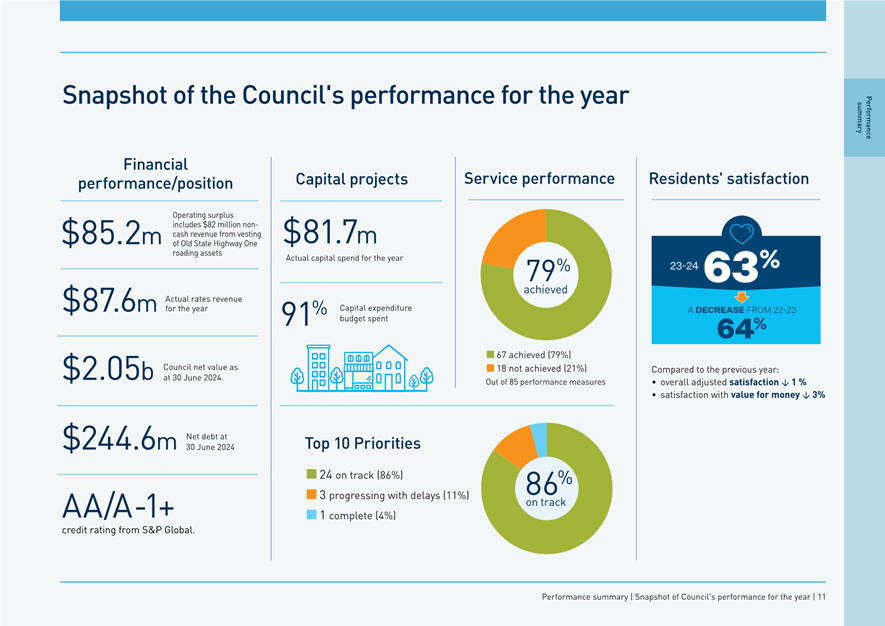
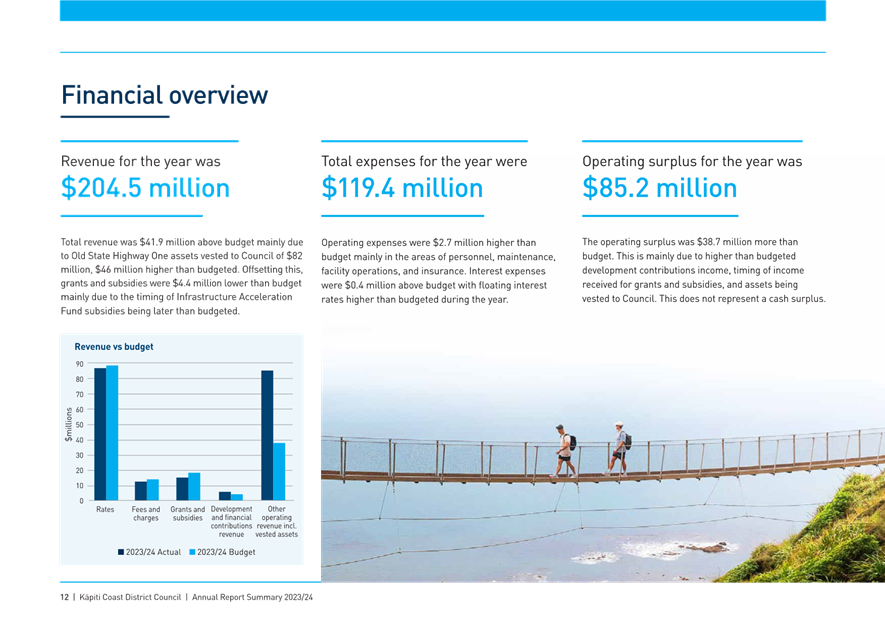
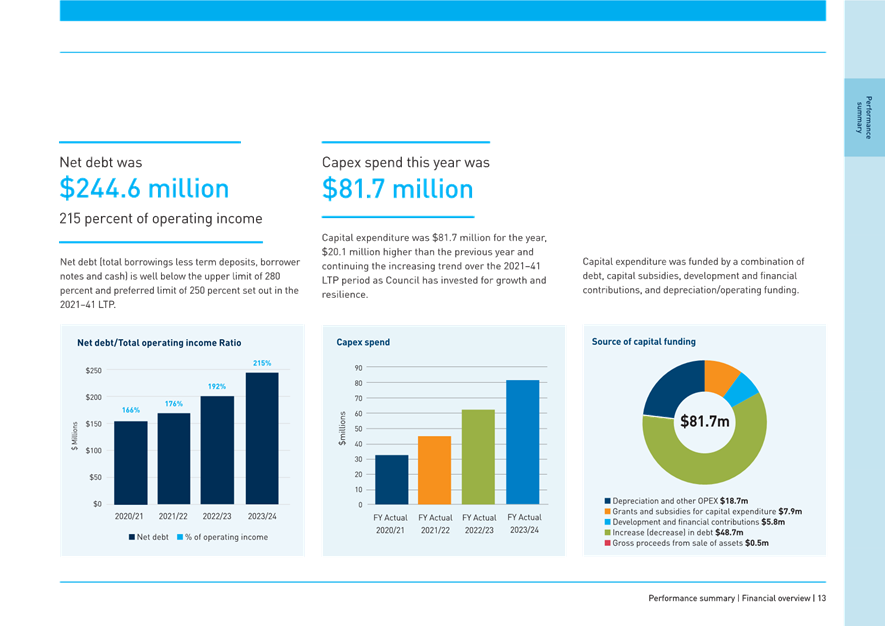
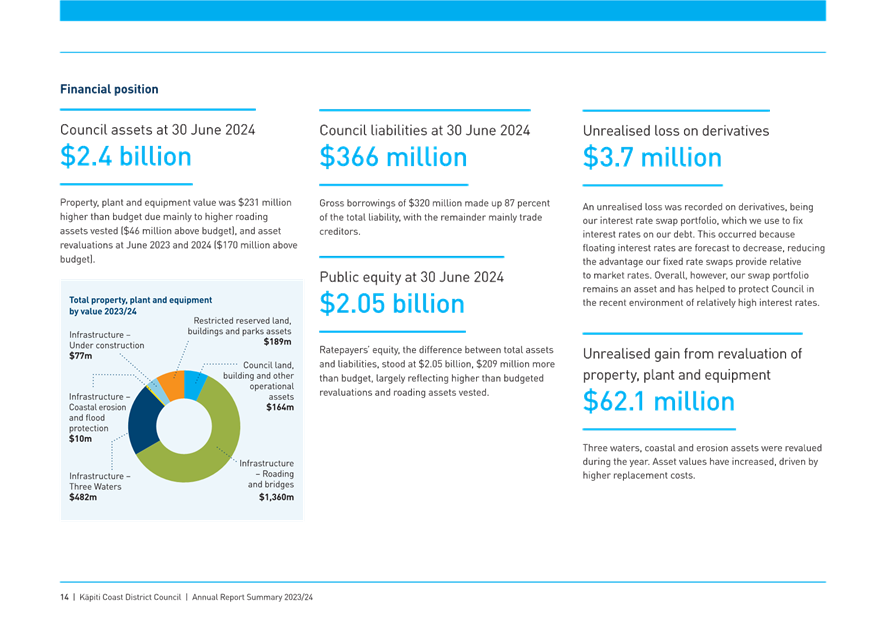

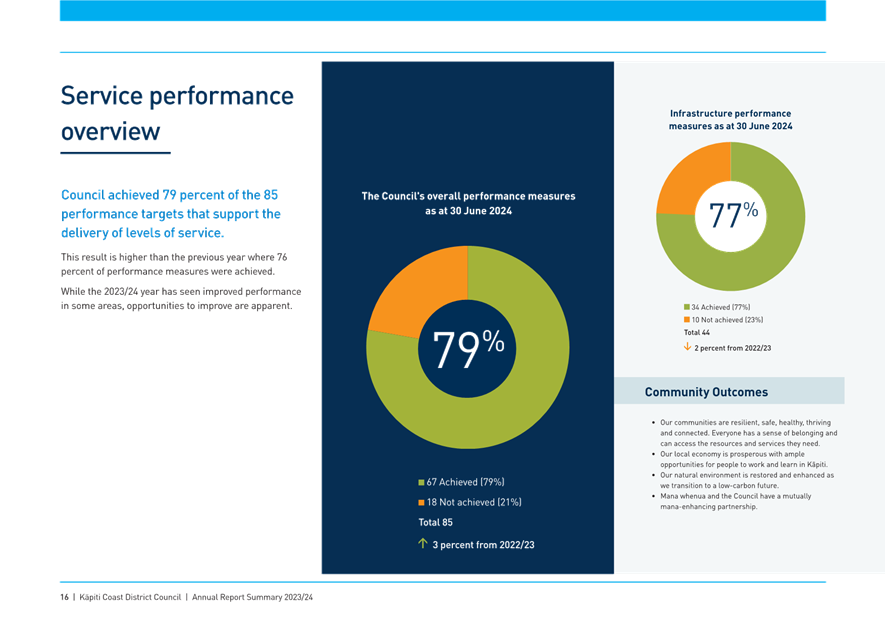
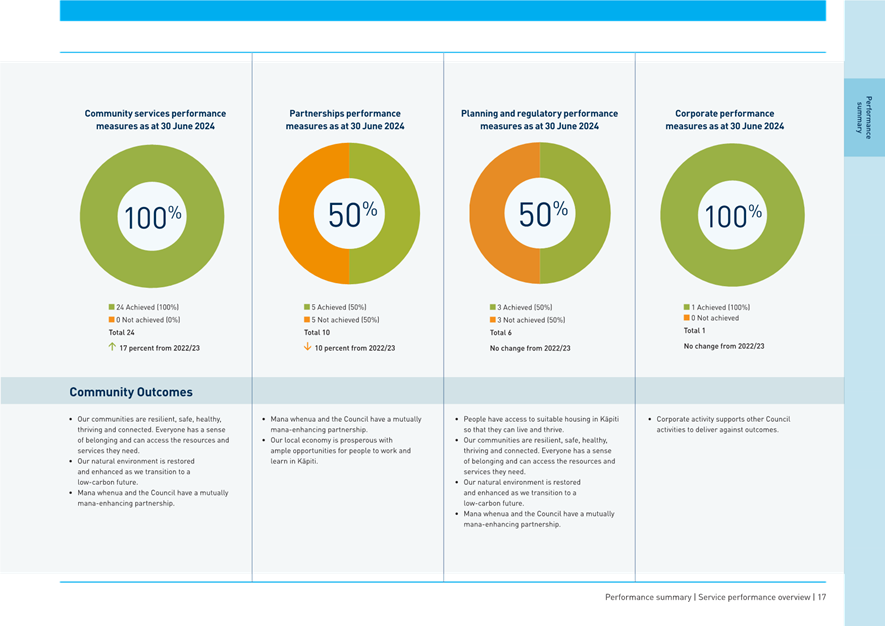
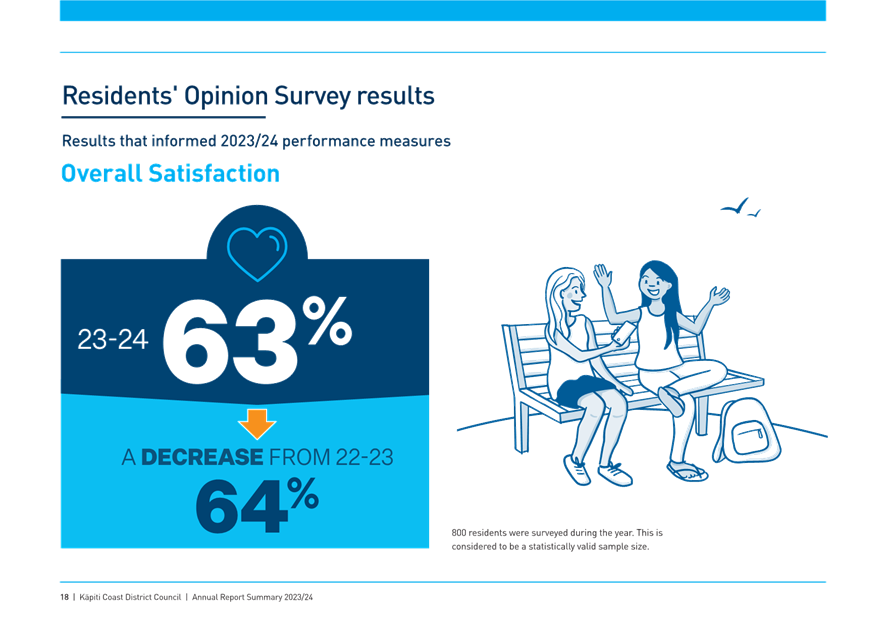
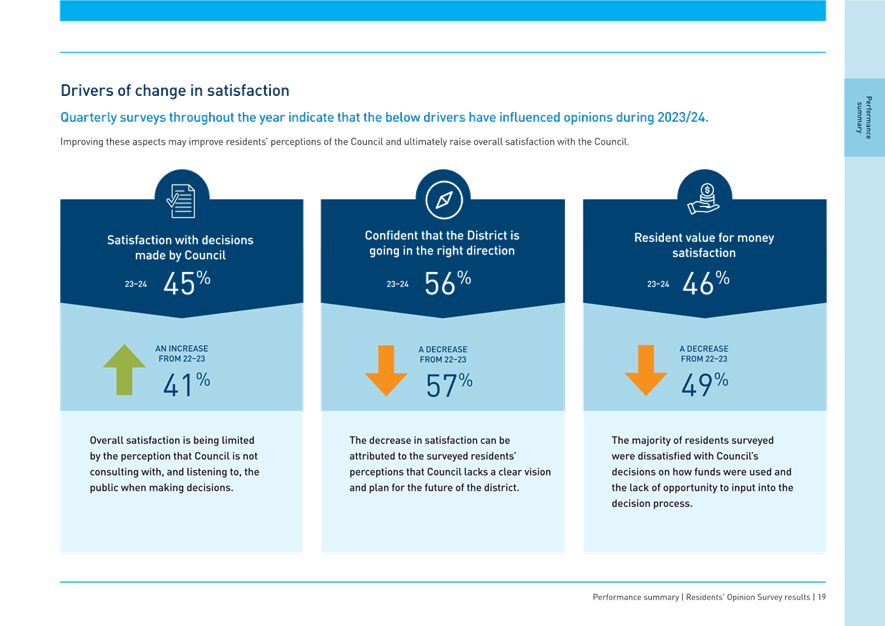
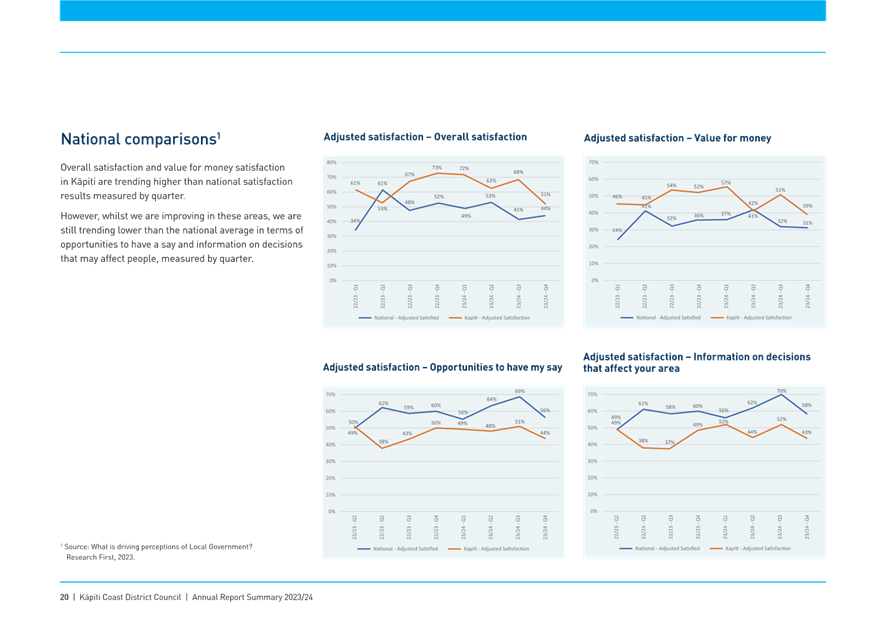

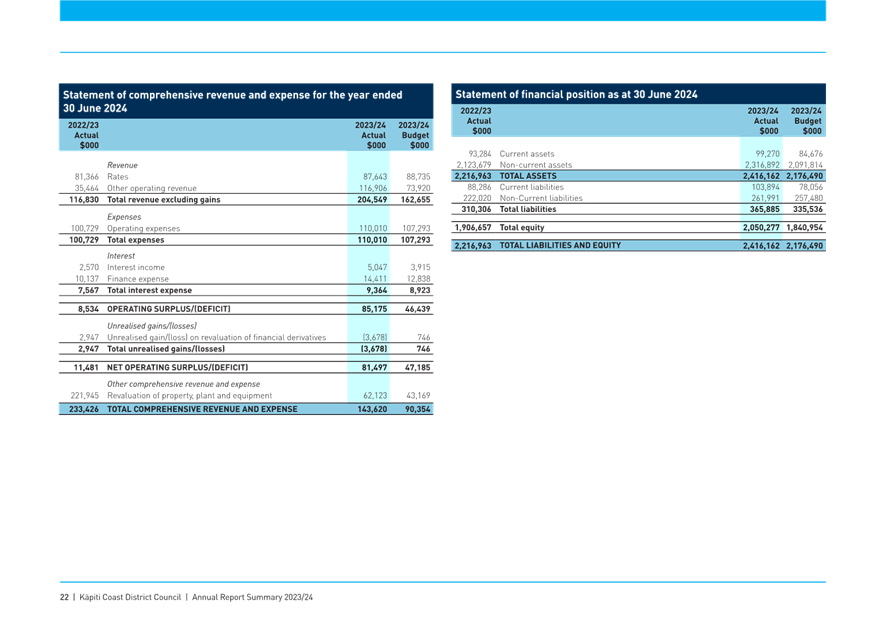
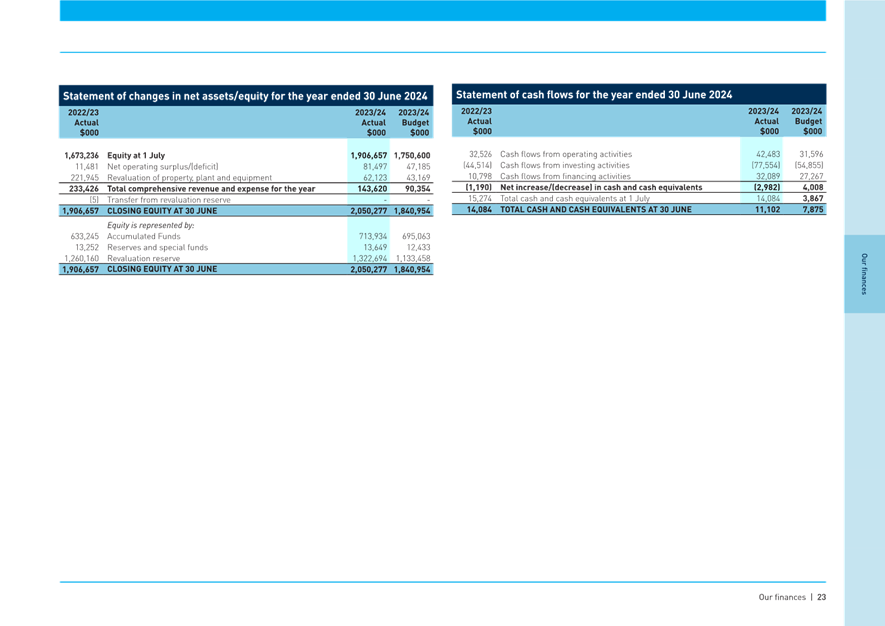
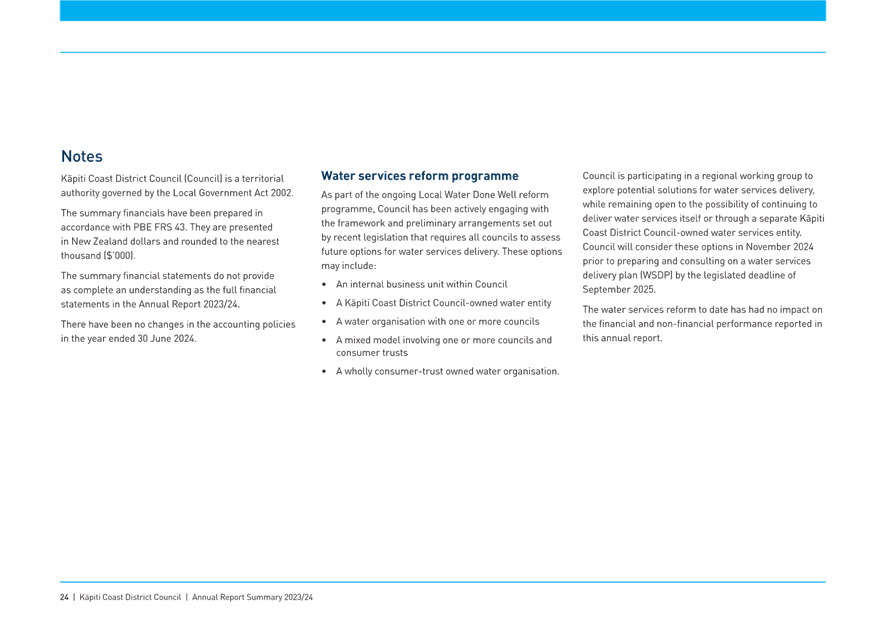


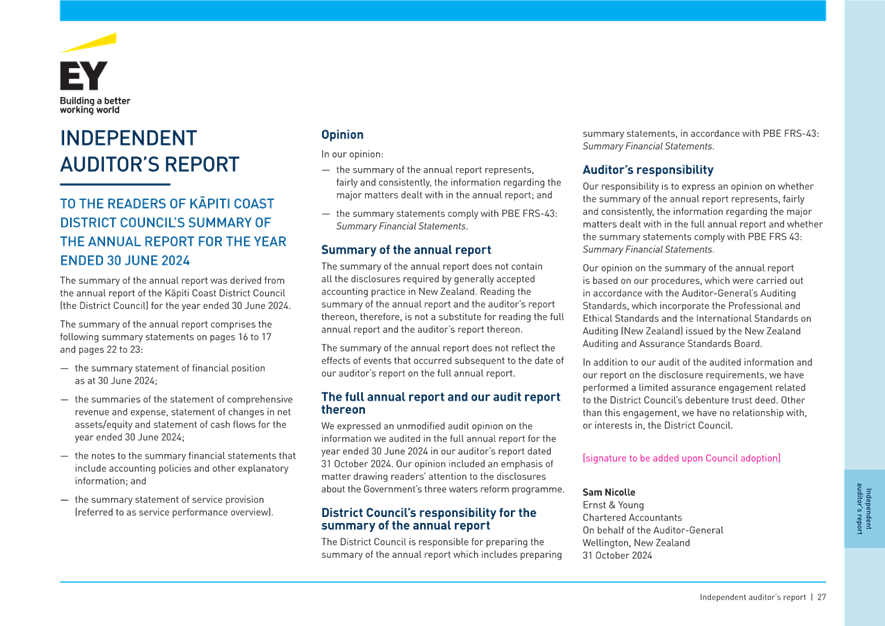

|
Council Meeting Agenda
|
31 October 2024
|
10.2 Representation Review
2024 - Final Proposal
Kaituhi |
Author: Steffi
Haefeli, Manager Governance
Kaiwhakamana
| Authoriser: Mark de Haast, Group Manager Corporate Services
Te pūtake |
Purpose
1 The
report asks Council to resolve its final proposal for the representation
arrangements for the 2025 local body elections in line with the provisions of
the Local Electoral Act 2001 (LEA).
He
whakarāpopoto | EXecutive summary
2 On
14 November 2023, Council resolved to establish a Māori ward for the 2025
local body elections which, under the provisions of the LEA, triggered a
representation review in 2024.
3 In
line with best practice, preliminary community engagement was undertaken in
March 2024 which asked the community how it would like to be represented. The
engagement highlighted that the majority of submitters supported retaining the
current representation arrangements and that Council should consider the
inclusion of the Māori ward with minimal alterations to other arrangements
in place.
4 On
30 July 2024, Council confirmed its initial proposal, which,
in line with the LEA must occur no later than 31 July 2024. The initial
proposal was publicly notified on 8 August 2024, which commenced a formal
consultation process seeking public submissions on the initial proposal.
5 This report summarises the submissions, both written and oral,
received in response to the initial proposal and provides Council with options
to consider for resolving a final proposal. The final proposal options
in this report have been prepared taking into account the submissions received
during the formal consultation period, the oral submissions presented to
councillors at the submission hearing on 24 September 2024 and discussions by
elected members during public briefings on 8 and 22 October 2024.
Te tuku haepapa
| Delegation
6 Council
has the authority to resolve a final representation proposal under the Local
Government Act 2002, section 19N of the Local Electoral Act 2001 and section
A.2 of Council’s Governance Structures and Delegation 2022 – 2025
document.
Taunakitanga | RECOMMENDATIONS
A. That
Council:
A.1 formally
receives the 442 submissions, written (attached in Appendix 1) and oral
(attached in Appendix 2, including the tabled documents presented at the
submission hearing) in response to the initial proposal for the representation
arrangements for the 2025 local body elections.
A.2 formally
receives the submissions analysis report summarising the written submissions
(attached in Appendix 3).
B. That
Council resolves, having reviewed its representation arrangements in accordance
with sections 19H of the Local Electoral Act 2001, to amend its initial
proposal and agrees to adopt its final proposal for the 2025 local body
elections as follows:
B.1 The
Kāpiti Coast District Council will comprise the Mayor elected at large and
ten councillors, two elected at large, seven elected from four general wards
and one elected from one Māori ward.
B.2 The
Kāpiti Coast District will be divided into five wards with the boundaries
as shown in Appendix 4:
B.2.1 Kapiti
Coast Māori Ward represented by one Māori ward councillor with the
ward boundaries aligning with the district’s boundaries.
B.2.2 Ōtaki
General Ward represented by one general ward councillor.
B.2.3 Waikanae
General Ward represented by two general ward councillors.
B.2.4 Paraparaumu
General Ward represented by three general ward councillors.
B.2.5 Paekākāriki-Raumati
General Ward represented by one general ward councillor.
B.2.6 In
addition, all electors of the Kāpiti Coast District (both
general electoral and Māori electoral voters) will elect two
councillors at large.
B.3 The
Kāpiti Coast District will be divided into five community board areas with
the boundaries as shown in Appendix 4 and the community board membership will
comprise four members elected from their community board areas and a specified
number of ward councillors appointed with voting rights as follows:
B.3.1 The Ōtaki Community Board will
comprise four members elected from the Ōtaki Community Board area, and one
appointed member of Council from either the Ōtaki General Ward or the
Kapiti Coast Māori Ward.
B.3.2 The
Waikanae Community Board will comprise four members elected from the Waikanae
Community Board area, and one appointed member of the Council from either the
Waikanae General Ward or the Kapiti Coast Māori Ward.
B.3.3 The
Paraparaumu Community Board will comprise four members elected from the
Paraparaumu Community Board area, and one appointed members of the Council from
either the Paraparaumu General Ward or the Kapiti Coast Māori Ward.
B.3.4 The
Raumati Community Board will comprise four members elected from the Raumati
Community Board area, and one appointed member of the Council from either the
Paekākāriki-Raumati General Ward or the Kapiti Coast Māori Ward.
B.3.5 The
Paekākāriki Community Board will comprise four members elected from
the Paekākāriki Community Board area, and one appointed member of the
Council from either the Paekākāriki-Raumati General Ward or the
Kapiti Coast Māori Ward.
C. That
Council notes that the total number of councillors will remain at 10 with a
mixed representation model, comprising eight ward councillors (seven general
ward and one Māori ward) and two councillors elected at-large, plus the
mayor elected at-large, to provide effective and fair representation for the
Kāpiti Coast District Council.
D. That the Council notes
the following in relation to the final proposal:
D.1 that
the boundary between the Ōtaki Ward and the Waikanae Ward is not adjusted
as proposed in the initial proposal as this aligns with the feedback received
from residents directly affected by the proposal who preferred that the
boundary remain where it is.
D.2 that
the boundary between the Paraparaumu Ward and Paekākāriki-Raumati
Ward is to move further inland as proposed in the initial proposal to include
meshblocks 2010100, 4013496, 4013497, 1997802 and 1997902 to better reflect
that the Emerald Glen and Valley Road communities of interest are incorporated
into the Paekākāriki-Raumati Ward and the Paekākāriki
Community Board area which aligns with the feedback received during the formal
consultation period.
D.3 that
the name of the Māori ward is amended to Kapiti Coast Māori Ward
without the macron which aligns with feedback received from Council’s
mana whenua partners.
D.4 That
the Councillor appointments to community boards be adjusted to one appointed
representative to the Paraparaumu Community Board from either the Paraparaumu
General Ward or the Kapiti Coast Māori Ward.
E. That
Council notes that public notice of its final proposal must be given within 8
weeks of close of submissions and no later than 3 November 2024.
F. That
Council notes that if any objections are received on the final proposal,
Council must forward the objections and the final proposal to the Local
Government Commission for determination in accordance with section 19Q of the
Local Electoral Act 2001.
G. That
Council notes that in adopting its final proposal, in accordance with section
19N of the Local Electoral Act 2001, it accepts and rejects the following
submissions received during the consultation on the initial proposal:
|
Treatment
|
Reason
|
|
Accept the majority of submissions who agree with
retaining 10 councillors and the Mayor and reject the minority of submissions
who disagree with this view.
|
The minority view is rejected in favour of the majority
view who consider 10 councillors plus the Mayor a number of representatives
that is working as it provides fair representation and
diversity but does not create inefficiencies and bureaucracy.
|
|
Reject the majority of submissions who disagree with the
Council structure of two at-large (districtwide), seven general ward and one
Māori ward councillor and accept the minority view of those who agree
with the structure.
|
The majority view is rejected in favour of the minority
view who consider the structure to be fair and representative. This view is
reflected in the submissions from the preliminary community engagement
conducted in March 2024 that highlighted the community’s overall
support of the existing arrangements and a majority support for including the
Māori ward councillor by replacing a at-large (districtwide) councillor.
The majority view is also rejected as a greater number of
those submissions disagreed with the proposed Council structure due to the
addition of the Māori ward which Council affirmed in August 2024 and can
no longer decide to rescind at this point in time.
|
|
Accept the majority of submissions who agree with the
community board structure and membership and reject the minority view who
disagree with this view.
Council also decides to amend the councillor to community
board appointment structure and reduces the number of appointees to the
Paraparaumu Community Board to one from either the Paraparaumu General Ward
or the Kapiti Coast Māori Ward.
|
The minority view is rejected in favour of the majority
view who consider the community board structure and membership is working as
it provides fair representation and is valuable to local democracy.
Council accepts the submissions recommending that the
discrepancy of councillor appointments to community boards be considered. The
number of appointees to the Paraparaumu Community Board is reduced to one so
it is consistent with all other community boards.
|
|
Accept the majority of submissions who agree with the ward
and community board area boundary changes resulting in the Emerald
Glen/Valley Road meshblocks (2010100, 4013496, 4013497, 1997802 and 1997902)
being included in the Paekākāriki-Raumati Ward and the
Paekākāriki Community Board area.
Council rejects the minority of submissions who disagree.
|
The minority view is rejected in favour of the majority
view who consider the changes appropriate considering the affected
communities feel more strongly aligned with Paekākāriki.
|
|
Reject the majority of submissions who agree with the ward
and community board area boundary changes resulting in the Te Horo meshblocks
being included in the Waikanae Ward and Community Board area.
Council will instead accept the minority of submissions
disagreeing with the changes and suggest retaining the current ward and
community board boundaries in place between Waikanae and Ōtaki.
|
The majority view is rejected in favour of the minority
view who consider the boundary changes unnecessary and prefer to retain the
status quo. This decision is giving special consideration to the responses
from residents that are directly affected by the boundary changes who support
retaining the boundaries as they are.
|
|
Accept the submission made by Council’s mana whenua
partners to change the name of the Māori ward to Kapiti Coast Māori
Ward.
|
The submission is accepted as the views of Council’s
mana whenua partners are considered valuable and appropriate when considering
the naming of the newly established Māori ward.
|
H. That
Council authorises the Chief Executive and delegated staff to make any minor,
necessary corrections in the documents prior to issuing the public notice of
the final proposal by 3 November 2024 to ensure clarity and legislative
compliance.
Tūāpapa | Background
What is a
representation review
7 The
LEA requires all councils to review their representation arrangements at least
once every six years to ensure the arrangements provide fair and effective
representation for their communities. The process, deliverables and timeframes
to carry out a representation review are mandated through the LEA (primarily
section 19 - attached in Appendix 5).
8 Best
practice guidance provided by the Local Government Commission (LGC)[1] suggests councils
consider the following in a representation review process:
8.1 What
the district’s communities of interest are and/or whether they have
changed since the last review.
8.2 Representation
arrangements need to be fair and effective and comply with the ‘fair
representation rule.’ The guidance suggests that effective and fair
representation is achieved if all elected members represent roughly the same
number of constituents. This is called the +/- 10% rule.
9 Council
carried out its last representation review in 2021 and under the standard
six-yearly cycle, another review was scheduled for 2027. However, the LEA also
sets out circumstances where a review may be required earlier, including where
a council resolves to establish a Māori ward. On 14 November 2023, Council
resolved to establish a Māori ward which triggered a representation review
for 2024. This is to determine how the Māori ward fits into the
district’s wider representation arrangements.
What is a Māori ward?
10 A
Māori ward is a distinct form of representation under the LEA which is
different to the appointment of mana whenua representatives to Council’s
governance structure. These two forms of representation are not mutually
exclusive and can co-exist.
11 A
Māori ward is a representation structure which allows Māori electors
enrolled on the Māori electoral roll to directly elect a councillor to
Council. The person standing for the Māori Ward vacancy does not have to
identify as mana whenua or tangata whenua; however, only those on the
Māori electoral roll can nominate that person and vote for the person to
be elected.
The Local Government (Electoral Legislation and
Māori Wards and Māori Constituencies) Amendment Act
12 The
Local Government (Electoral Legislation and Māori Wards and Māori
Constituencies) Amendment Act received royal assent on 30 July 2024 and made
the following amendments to the LEA:
12.1 Re-introducing
the ability for electors to demand polls for councils wishing to establish a
Māori ward and requiring all councils that have established a Māori
ward since 2020 without a poll to hold a poll at the next local body elections
in 2025.
12.2 Requiring
councils that have resolved to establish a Māori ward without a poll to
affirm or rescind this decision (or disestablish their Māori ward) before
6 September 2024.
13 On
6 August 2024, Council considered its options provided by the Act and affirmed
its decision from 14 November 2023 to establish a Māori ward for electoral
purposes ahead of the 2025 local body elections. This meant that the
representation review process already underway continued as planned and Council
will be required to conduct a poll of its electors on the future of the
Māori ward at the 2025 local body elections.[2]
Representation Review process
steps and timeline milestones
14 To
review and confirm the arrangements in place provide fair and effective
representation, the LGC recommends that councils engage with their community
early and conduct preliminary community engagement to inform Council’s
initial proposal rather than elected members considering the initial proposal
without insights into the views of the community. This preliminary engagement
process is not mandated by legislation and it takes place before beginning the
formal statutory process outlined in the LEA.
15 As Council undertook a comprehensive representation review in 2021,
reconsidering all possible representation arrangements so soon was not seen as
necessary and Council approved a staff-led, streamlined preliminary community
engagement approach that balanced the statutory requirements with limiting
staff time, budget and resources spent to facilitate the process. The
preliminary community engagement took place in March 2024 and formed the basis
for the initial proposal considered by Council.
16 In line with the LEA, Council resolved its initial proposal
on 30 July 2024 which was publicly notified on 8 August 2024. The public notice
of the initial proposal commenced a formal community consultation from 8 August
2024 to 12 September 2024 to provide the community with the opportunity to
submit on the proposal. The consultation involved a range of consultation
activities such as media advisories, newspaper and radio advertising, webinar
and face-to-face drop-in sessions, a consultation questionnaire available
online and in hardcopy (at our service centres and libraries), a frequently
asked questions document, website updates, and targeted letter drops for
residents affected by the boundary changes.
17 Following
this, Council provided those submitters that indicated they wished to present
their submission to councillors the opportunity to do so at a formal and public
submission hearing held on 24 September 2024.
18 In
line with the LEA, Council is now required to approve a final proposal, within
8 weeks of submissions closing, that reflects the community’s views on
fair and effective representation by considering all submissions received
during the formal consultation period. Once Council has resolved its final
proposal, the proposal will again be publicly notified. If there are any
changes to the initial proposal, any person or organisation may object to the
final proposal. If the initial proposal is adopted as the final proposal, only
those persons or organisations who made a submission on the initial proposal
may appeal the final proposal. If an objection or appeal is received, or the
approved final proposal arrangements do not comply with the fair representation
criteria (the +/-10% rule), the final proposal must be referred to the LGC, who
will determine the final representation arrangements by 10 April 2025.
19 The
table below sets out key milestones and timeframes in the representation review
process which are mandated through the LEA.
|
Key
Milestones (as per the provisions of the LEA)
|
Delivery
dates (including statutory timeframes)
|
|
Council
resolution on initial proposal
|
30 July 2024 (no later than
31 July 2024)
|
|
Public
notice of initial proposal (within 14 days of resolution)
|
8 August 2024 (no later
than 8 August)
|
|
Community
consultation period (minimum 1 month)
|
8 August to 12 September
2024
|
|
Community
consultation close
|
12 September 2024
|
|
Analysis of
submissions (maximum 8 weeks)
|
September/October 2024
|
|
Council
resolution on final proposal (within 8 weeks of consultation closing)
|
31 October 2024
|
|
Public
notice of final proposal (within 8 weeks of consultation closing, and no
later than 3 November)
|
1 November 2024
|
|
Appeal/Objection
period (Council could set a different closing date but must not give less
than 1 month)
|
1 November to 6 December
2024
|
|
Latest date
for Council to forward objections/appeals to LGC (if required)
|
By 20 December 2024
|
|
LGC
considers proposals and determines representation arrangements (if required)
|
By 10 April 2025
|
Approach and timeline for Kāpiti Coast District
Council representation review (from preliminary engagement to initial proposal
and development of final proposal)
Preliminary
Community Engagement
20 To conduct preliminary community engagement, a survey questionnaire
was available to members of the public from 4 March to 2 April (5pm) 2024. The
survey and the accompanying frequently asked questions document were available
in both Te Reo Māori and English in hard copy at our libraries and service
centres as well as online on Council’s website. Further to that, drop-in
sessions were held in each of the community board areas to provide the
community with an opportunity to ask questions and get clarification ahead of
responding to the survey questions.
21 The
survey aimed to understand the community’s views on how it would like to
be represented by asking whether they community thought that the existing
arrangements provided fair and effective representation, how the Māori
ward should be included in the representation arrangements and what the
community thought about the current community board structure and membership
arrangements.
22 In
response to the preliminary engagement, Council received 285 responses which
highlighted that the majority of respondents supported the status quo and did
not believe that adjustments to the representation arrangements set in 2022 are
required and would prefer minimal adjustments for the inclusion of the
Māori ward. The majority of respondents also supported the existing
community board structure and councillor to community board appointment
arrangements.
Initial Proposal Options
23 Using
the insights gained from the preliminary community engagement, the following
practicable and lawful Council structure options were provided for
consideration by councillors on 30 July 2024:
|
Option
|
Details
|
|
Based on existing ward
structure
|
|
1
|
Retain the same number of councillors - 10 councillors (2
at-large (districtwide) councillors, 7 general ward councillors and 1
Māori ward councillor) plus the Mayor
|
|
2
|
Increase the number of councillors - 11 councillors (3
at-large (districtwide) councillors, 7 general ward councillors and 1
Māori ward councillor) plus the Mayor
|
|
New structure presented to
Council by a member of the community
|
|
3
|
10
councillors (1 general ward with 9 general ward councillors (ward boundaries
to match with district’s boundaries) and 1 Māori ward councillor)
plus the Mayor
|
24 All
three options included retaining the existing community board structure of five
community boards consisting of four elected representatives plus the existing
councillor appointment arrangements.
25 In
addition to the above, for options 1 and 2, it was further proposed that the
ward boundaries at Te Horo and Emerald Glen/Valley Road be adjusted to
incorporate Te Horo into the Ōtaki Ward and Emerald Glen/Valley Road into
the Paekākākriki-Raumati Ward as follows:
25.1 The
boundary between the Ōtaki Ward and the Waikanae Ward (and the respective
community boards) was proposed to be moved south past Te Hapua Road and
therefore include all of Te Horo in the Ōtaki Ward and Community Board
area to provide more appropriate representation for Te Horo within the ward
structures considering this community of interest has traditionally identified
more strongly with Ōtaki.
25.2 The
boundary between the Paekākāriki-Raumati Ward and the Paraparaumu
Ward was proposed to move inland (east) to include Emerald Glen and Valley Road
in the Paekākāriki-Raumati Ward and the Paekākāriki
Community Board area to reflect that the community of interest has
traditionally identified more strongly with Paekākāriki.
26 For
option 3, the suggestion included removing all existing ward boundaries but
also adjust the community board boundaries in the same manner as proposed for
options 1 and 2 to reflect that the distinct communities of interest would be
represented through the five community boards.
27 The
proposed boundary changes to include Emerald Glen/Valley Road in the
Paekākāriki-Raumati Ward are legislatively compliant with the
effective and fair representation requirements. However, the boundary changes
proposed to include Te Horo in the Ōtaki Ward are not compliant with the
requirements.
28 Further
to the above, to achieve a fair and equitable councillor to community board
appointment structure, it was proposed that the current structure be retained,
and the Māori ward councillor be appointable to community boards as an
‘and/or’ option.[3]
The current structure consists of five community boards and the membership of
comprises four members directly elected from their relevant areas and a
specified number of ward councillors. The arrangement of appointing either the
general ward or Māori ward councillor back to community boards allows
flexibility that is not further set and restricted at this point by the
representation arrangement proposal. Council would be able to appoint the
Māori ward councillor to all or none of the community boards as it
considers most appropriate at the start of the triennium, and set its
Governance Structure arrangements as follows:
|
Community Board
|
Councillor Appointments[4]
|
|
Ōtaki Community
Board
|
one appointed member from either the Ōtaki
General Ward or the Kāpiti Coast Māori Ward
|
|
Waikanae Community Board[5]
|
one appointed member from either the Waikanae
General Ward or the Kāpiti Coast Māori Ward
|
|
Paraparaumu Community Board[6]
|
two appointed members from the Paraparaumu General
Ward and/or the Kāpiti Coast Māori Ward
|
|
Raumati Community Board
|
one appointed member from either the
Paekākāriki-Raumati General Ward or the Kāpiti Coast
Māori Ward
|
|
Paekākāriki
Community Board
|
one appointed member from either the
Paekākāriki-Raumati General Ward or the Kāpiti Coast
Māori Ward
|
Initial
Proposal Resolution
29 On
30 July 2024, Council resolved its initial proposal to be option 1 and for the
Kāpiti Coast District Council:
29.1 to
comprise of the Mayor (elected at large), ten councillors with two elected at
large and seven elected from four general wards and one Māori ward
councillor elected by the district’s Māori electoral roll voters.
29.2 to
be divided into five wards:
29.2.1 Kāpiti
Coast Māori Ward represented by the Māori ward councillor,
29.2.2 Ōtaki
General Ward represented by one general ward councillor
29.2.3 Waikanae
General Ward represented by two general ward councillors
29.2.4 Paraparaumu
General Ward represented by three general ward councillors
29.2.5 Paekākāriki-Raumati
General Ward represented by one general ward councillor
29.3 to
be divided into five community board areas and the community board membership
to comprise four members elected from their relevant areas and a specified
number of ward councillors as follows:
29.3.1 The
Ōtaki Community Board will comprise four members elected from the
Ōtaki Community Board area, and one appointed member of Council from
either the Ōtaki General Ward or Kāpiti Coast Māori Ward.
29.3.2 The
Waikanae Community Board will comprise four members elected from the Waikanae
Community Board area, and one appointed member of the Council from either the
Waikanae General Ward or Kāpiti Coast Māori Ward.
29.3.3 The
Paraparaumu Community Board will comprise four members elected from the
Paraparaumu Community Board area, and two appointed members of the Council from
either the Paraparaumu General Ward or Kāpiti Coast Māori Ward.
29.3.4 The
Raumati Community Board will comprise four members elected from the Raumati
Community Board area, and one appointed member of the Council from either the
Paekākāriki-Raumati General Ward or Kāpiti Coast Māori
Ward.
29.3.5 The
Paekākāriki Community Board will comprise four members elected from
the Paekākāriki Community Board area, and one appointed member of the
Council from either the Paekākāriki-Raumati General Ward or
Kāpiti Coast Māori Ward.
29.4 Further
to the above, Council resolved that the ward and community board boundaries be
adjusted at Te Horo and Emerald Glen/Valley Road to include all of Te Horo in
the Ōtaki Ward and community board area and all of Emerald Glen/Valley
Road in the Paekākāriki-Raumati Ward and the Paekākāriki
Community Board area (Initial Proposal attached in Appendix 6).
Consultation Period and Final Proposal Development
30 After
Council resolved its initial proposal, a public notice was issued on 8 August
2024 (latest date under LEA to do so) which commenced a formal submission
period between 8 August and 12 September 2024. During this period, the public
had an opportunity to consider and make submissions on the initial proposal.
31 The
consultation involved a range of consultation activities such as media
advisories, newspaper and radio advertising, webinar and face-to-face drop-in
sessions, a consultation questionnaire available online and in hardcopy (at our
service centres and libraries), a frequently asked questions document, website
updates and a targeted letter drop for residents affected by the proposed
boundary changes.
32 The
formal consultation (by way of the consultation questionnaire attached in
Appendix 7) aimed to understand the community’s views on the initial
proposal and specifically asked:
32.1 Whether
the community agreed with the number of councillors remaining at 10 which
includes seven general ward councillors, two districtwide councillors and one
Māori ward councillor plus the Mayor.
32.2 What
changes the community would like to make to the initial proposal.
32.3 Whether
the community agreed with keeping the number of community boards to five
(represented by four elected members each and including a specified number of
appointed councillors).
32.4 Whether
the community agreed with the boundary adjustments at Te Horo (Ōtaki and
Waikanae Ward and community board boundary) and Emerald Glen/Valley Road
(Paraparumu and Paekākāriki-Raumati Ward and Paraparaumu and
Paekākāriki Community Board boundary).
33 After
close of submissions (5pm on 12 September 2024) the responses (attached in
Appendix 1) were collated, analysed by Public Voice and summarised in an
analysis report (attached in Appendix 3).
34 In
line with the LEA, Council was required to provide reasonable opportunity for
those who made submissions on the initial proposal to be heard. Submitters were
provided the opportunity to speak to their submission at a submission hearing
on 24 September 2024.
35 All
submissions received (written and oral) have been taken into account to shape
the final proposal outlined in this report. On 8 and 22 October 2024, public
briefings were held to summarise the submissions received and provide
councillors with an opportunity to discuss the submissions and indicate which
submissions should be accepted and which will be rejected, including reasons
for these decisions.
Next
steps – Final Proposal and Local Government Commission
36 This
report contains a final proposal for Council to consider and resolve in
accordance with the provisions of the LEA. Once Council has resolved its final
proposal, public notice of this must be issued within 8 weeks of the submission
period closing (which was 5pm on 12 September 2024) and no later than 3
November 2024. A direct notice (via email or post) will be sent to all
submitters on the initial proposal (if they have supplied contact emails or
postal addresses), so they are aware of the content of the final proposal. The
notice will be made available on the website and will contain details on how
the public can object to the decision. Any objections can be sent to
Council’s governance inbox governance@kapiticoast.govt.nz.
The objections period will be open for approximately one month until 6 December
2024.
37 Under
the provisions of the LEA, if any objections are received, Council is required
to refer these and all information on its final proposal to the LGC by 20
December 2024 for consideration and determination. Council is also required to
refer the proposal to the LGC if it does not comply with the fair
representation criteria (the +/-10% rule). If the decision is referred to the
LGC, the commission may rectify any element of Council’s final proposal
that it does not consider complies with the statutory provisions.
38 The
LGC may hold a hearing for members of the community to speak to the commission
before it makes a determination on the representation structure, however, this
is at the commission’s discretion. To enable good diary management, the
LGC has notified Council officers that it has tentatively held the 6 March 2025
to hold a hearing on the representation arrangements for the Kāpiti Coast
District Council. A final and binding determination by the LGC, expected
by 10 April 2025, may only be appealed on a point of law or on matters of
process.
39 If
the final proposal complies with the fair representation criteria and no
objections are received the final proposal will become the basis for election
at the 2025 local body elections.
He
kōrerorero | Discussion
He
take | Issues
40 This report
seeks Council to:
40.1 formally receive the submissions made
in response to Council’s initial proposal (both written and oral),
40.2 deliberate on which submissions to
accept or decline, and
40.3 resolve its final proposal, which will
be publicly notified on 1 November 2024 ahead of the legislated last date of 3
November 2024.
What needs to be considered in a representation
review?
41 The representation review
process is mandated by legislation (primarily section 19 of the LEA). Under section 19T, when reviewing its representation arrangements, Council must provide for
‘effective representation of its communities of interest’[7]
and ‘fair representation of electors’.
42 If the
district is divided into wards[8],
the membership of the general wards is required to provide approximate
population equality per member, which means each elected member representing a
general ward should represent about the same number of people. This is referred
to as the fair representation ‘+/-10% rule’. To calculate this each
general ward’s general electoral population is divided by the number of
general ward councillors elected in each general ward, which should produce a
figure no more than 10% greater or smaller (+/-10%) than the total general
electoral population of the district divided by the total number of general
ward councillors (the quota). The quota requirement does not apply to the
Māori ward and the LEA provides the calculation to determine whether a
Council can establish a Māori ward based on its Māori electoral
population compared to its general electoral population. The quota also does
not apply to the Mayor, districtwide councillors and community boards.
43 Under the
LEA, there are grounds for not complying with the ‘+/-10% rule’ if
there are good reasons such as:
43.1 to provide effective representation of
communities of interest within island communities or isolated communities
43.2 where compliance would limit effective
representation by either dividing a community of interest or grouping together
communities of interest with few commonalities.
44 Further to
the above, under the provisions of the LEA, councils must also determine
whether there should be community boards in the district and, if so, the
nature, structure and memberships of the community boards.
45 Ward
boundaries and community board boundaries must coincide with current
statistical meshblock areas determined by Statistics New Zealand.
Summary of Submissions
46 Council
received 442 (433 written and 9 oral) submissions on the initial proposal. On
Tuesday 24 September 2024, Council heard from submitters who, in their written
submission, indicated that they wished to speak to elected members.
47 Public
Voice was engaged to analyse all written submissions received and a summary of
both quantitative and qualitative results are set out in a submission analysis
report.
48 All
written submissions received, the analysis of the written submission as well as
the minutes and the tabled documents from the submission hearing have been
appended to the report:
48.1 Written
submissions – in Appendix 1.
48.2 Unconfirmed
Council Minutes and tabled documents from submission hearing – in
Appendix 2.
48.3 Analysis
report – in Appendix 3.
Council
and Community Board Structure Feedback
49 The consultation feedback indicates that the majority of respondents
(76%) support keeping the number of councillors at 10 and support the proposed
number and membership of community boards (80%). However, over half of
respondents (55%) disagree with the proposed structure of having two
districtwide, seven general ward and one Māori ward councillors. 39 % of
those that disagreed with the proposed structure, disagreed with it because of
the addition of the Māori ward, which was affirmed by Council and can no
longer be rescinded.
50 The figure below shows a breakdown of responses to the question
‘Do you agree with having seven ward councillors, two
districtwide councillors and one Māori ward councillor?’

Ward and Community Board Boundary
Feedback
51 In relation to the proposed ward boundary adjustments, overall the
majority of respondents support the alterations at both Te Horo (70%) and
Emerald Glen/Valley Road (79%).
52 Of those directly affected by the changes, the majority also support
the proposed alterations at Emerald Glen/Valley Road (67%), but the majority
oppose the propsed changes at Te Horo (71%).
Mana Whenua Feeback on Māori
Ward Name
53 In response to the initial proposal, Council’s mana whenua
partners submitted a letter dated 12 September 2024 (attached in Appendix 9) confirming
that they:
53.1 are
supportive of the name proposed for the Māori Ward subject to removing the
macron from Kapiti so the ward’s name is changed to Kapiti Coast
Māori Ward, and
53.2 are
supportive of the proposed boundary changes for the Ōtaki and Waikanae
Wards and Community Boards, moving the boundary south to Te Hapua Road.
Submission Hearing Feedback
54 During the submissions hearing on 24 September 2024, presenters
expressed the following views to councillors and community board members in
attendance:
54.1 In relation to the proposed boundary adjustment at Te Horo, two
submitters expressed a preference for the status quo or giving consideration to
moving the boundary north to Ōtaki River instead. One submitter also
highlighted that the view of the residents directly affected by the boundary
adjustment should be weighted more when considering this matter;
54.2 In relation to community boards, multiple submitters expressed
support for the role they play in local democracy and one submitter suggested
aligining community board boundaries (specifically at Raumati) with ward
boundaries and considering combining the Paeākākriki and Raumati
boards to strengthen their influence on Council decison-making;
54.3 In
relation to the proposed Council structure, one submitter presented an
alternative structure which included more councillors and more wards and
different ward boundaries as a result. They expressed that when Council was
first formed in 1989, it was represented by more elected members that
represented fewer constituents. They suggested that the number of councillors
should increase to reflect adequate representation for a growing population. To
accommodate that, they suggested that the districtwide positions should be
removed and more wards with new boundaries should be established.
54.4 Two
submitters spoke in support of the establishment of the Māori ward and two
in opposition. All four submitters either raised concerns with the legislative
changes enacted by the Government in relation to Māori wards or the costs
associated with holding a poll with some submitters suggesting Council explore
a refusal to hold a referendum.
Consideration
of Submissions
55 In
line with legislative provisions, Council is required to consider all
submissions received on its initial proposal and decide whether to accept or
reject the submissions and either to confirm or amend its earlier proposal by
way of giving public notice of its final proposal within 8 weeks of the closing
date of submissions (and no later than 3 November 2024).
56 At
public briefings held on 8 and 22 October 2024, elected members and mana whenua
representatives discussed the submissions and possible amendments to the
initial proposal. Elected members considered the different options to respond
to oral and written submissions and provided staff with direction to reject
aspects of the initial proposal and retain other aspects of the proposal.
57 Elected
members specially discussed the following submission topics and provided
guidance to officers on a preferred approach.
|
Submission Topics
|
Discussion and Preferred
Approach
|
|
Majority support for number
of councillors
|
Retain proposed number of councillors at 10 plus the
Mayor.
|
|
Majority disagreement with
the proposed Council structure of two at-large (districtwide), seven general
ward and one Māori ward councillor
|
Retain proposed Council structure of two
at-large (districtwide), seven general ward and one Māori ward
councillors.
|
|
Majority support for proposed
community board arrangements
|
Retain the proposed community board
structure of five community boards (at Ōtaki, Waikanae, Paraparaumu,
Raumati and Paekākāriki) comprising four elected representatives
but amend the councillor to community board appointment
structure and reduce the number of appointees to the Paraparaumu Community
Board to one from either the Paraparaumu General Ward or the Kapiti Coast
Māori Ward.
|
|
Majority support for boundary
alterations at Emerald Glen/Valley Road to move the five meshblocks back into
the Paekākāriki-Raumati Ward and the Paekākāriki
Community Board area
|
Retain proposed
boundary alterations at Emeral Glen/Valley Road.
|
|
Majority support for the
boundary alterations at Te Horo to move the fifteen meshblocks south to Te
Hapua Road into the Ōtaki Ward and Community Board area, but majority
disagreement with the proposal by residents directly affected by the
alterations
|
Adjust proposal and revert back to the
existing ward and community borad boundaries down School Road and Te Horo
Beach Road.
|
|
Support by mana whenua to
rename the Māori Ward Kapiti Coast Māori Ward, without the proposed
macron
|
Receive the name gifted by mana whenua
for the Māori ward and rename the ward Kapiti Coast Māori Ward
without the macron.
This will mean the name of the Māori
ward is not in line with Council’s current Macron Usage Policy. Council
committs to reviewing the policy in 2025.
|
Ngā
kōwhiringa | Options
58 When
determining whether to amend the initial proposal and resolve a final proposal,
Council is required to do so in accordance with the provision in the LEA and
the consultation and decision-making provisions of the LGA. As noted above,
this includes considering all submissions received and clearly stating which
submissions are accepted and which are rejected and the reasons for the
acceptance or rejection. Each acceptance and rejection decision must be
specified in Council’s public notice of the final proposal. Council is
also required to provide reasons for any amendments to its initial proposal and
amendments may only be made to reflect feedback from submissions. If Council
wishes to amend other aspects of its initial proposal it must do so based on submissions
received through the formal consultation process.
59 In
addition to the general decision-making provisions in the LGA, Council must
also give effect to the provision relating to engagement with iwi/Māori[9] and give effect to
the principles of Te Tiriti o Waitangi (the Treaty of Waitangi).[10]
Consideration
of options
60 The
discussions by elected members at the 8 and 22 October 2024 public briefings
centred around largely retaining the initial proposal but re-considering the
name of the Māori ward, the placement of the boundary between the Waikanae
and Ōtaki Wards and the councillor to community board appointment
structure to achieve consistency across all community boards.
Māori
Ward Name
61 In
response to the formal consultation on the initial proposal, Council’s
mana whenua partners submitted that they support the name of the Māori
ward subject to the removal of the macron on ‘Kāpiti’. Council
must consider the submission and decide whether to accept or reject the
submission. In line with the provisions of the LGA, considering the views of
Council’s mana whenua partners, is seen as appropriate when deciding the
name of the Māori ward.
62 Council
can consider the following options in relation to the name of the Māori
ward:
|
Name of Māori Ward
|
Advantages
|
Disadvantages
|
|
Kāpiti Coast Māori
Ward
|
As per the initial proposal and in line with
Council’s current macron usage policy[11].
|
Not in line with the submission of Council’s mana
whenua partners (A.R.T confederation members).
|
|
Kapiti Coast Māori Ward
|
As per the submission of mana whenua.
Under the provisions of the LGA, and the memorandum of
partnership, it is considered appropriate for councillors to consider the
views of mana whenua when deciding a name for the Māori ward (and any
other decisions in relation to the final proposal).
|
Not in line with Council’s current macron usage
policy. The policy is overdue for a review, which is considered timely and
necessary in line with ongoing discussions with Council’s mana whenua
partners.
|
Ōtaki-Waikanae
Ward and Community Board boundary
63 The
analysis of the submissions received in response to the formal consultation on
the initial proposal highlighted that the majority of submitters support the
proposed boundary alteration between the Waikanae and Ōtaki Wards.
However, the majority of respondents (71%) directly affected by the change
(those that are identified as owning property or residing in the area) disagree
with the boundary alteration and would prefer the status quo or for the
boundary to be moved north to Ōtaki river instead.
64 As
a result of the feedback received, the following lawful and practicable
boundary options are provided in this report for consideration by councillors:
|
Option
|
Advantages
|
Disadvantages
|
|
Option A - Move boundary
south to Te Hapua Road
(as per Initial Proposal)
|
This option ensures the community of interest at Te Horo
is not split between two wards and community boards.
This option aligns the representation boundaries more
closely with iwi boundaries.
This option was considered during the last representation
review and presented to the LGC during the hearing held to determine
Council’s final representation arrangements.
70% of all submitters supported this option but only 29%
of those residents directly affected by the change are in favour of this
option.
|
This option does not comply with the fair representation
requirements (+/-10% rule) prescribed in the LEA.
30% submitters are not in favour of this option.
71% of residents directly affected by the proposed changes
are not in favour of this option
|
|
Option B - Retain current
boundary
|
This option complies with the fair representation
requirements (+/-10% rule) prescribed in the LEA.
This option was determined by the LGC, in 2022, to provide
fair and effective representation for the Kāpiti Coast District.
9.6% of submitters in favour of this option.[12]
|
This option splits the community of interest at Te Horo
with the residents south of School Road and Te Horo Beach Road voting in the
Waikanae Ward and community board and the residents north of these roads
voting in the Ōtaki Ward and community board.
|
|
Option C - Move boundary
north to Ōtaki River
|
This option ensures the community of interest at Te Horo
is not split between two wards and community boards.
2.5% of submitters in favour of this option.[13]
|
This option does not comply with the fair representation
requirements (+/-10% rule) prescribed in the LEA.
Ngā Hapū o Ōtaki do not agree with moving
the boundary north to Ōtaki river as it will separate one of the five
Ōtaki hapū, Ngāti Huia ki Katihiku, from the rohe of their iwi
Ngāti Raukawa ki Te Tonga.
|
65 The
relevant population data and statistics and maps showing the different boundary
options are appended in Appendix 8.
Councillors
to community board appointments
66 The
analysis of the responses received highlights that the majority of submitters
(80%) support the proposed community board structure and membership, including
the councillor appointments to community boards.
67 At
the briefings on 8 and 22 October 2024, councillors discussed the discrepancy
between the number of appointees to the community boards whereby two of the
three ward councillors are appointed to the Paraparaumu Community Board but
only one ward councillors is appointed to the other community boards.
68 Council
is able to amend its initial proposal if submissions have been received during
the formal consultation period. In total, five submissions commenting on
councillor appointments to community boards have been received.
68.1 Two
written submissions were received outside the system and both submissions state
the disparity between the appointment arrangements (both submissions use the
same wording but were counted twice as the submitters/signatories were
different):
“There is disparity in the appointment
process of councillors to community boards already – Paraparaumu has the
right for two whilst Waikanae can only have one. Change this inequity so both
councillors in both wards are seconded to the community board.”
68.2 Three
submissions were received commenting on removing councillors from community
boards:
‘Community Boards should
be realigned in sync with my suggestion to remove councillors.’
‘While the current
Community Board representation structure has worked well for the Kapiti Coast
District the process of appointing Councillors to Community Boards causes
friction.’
‘Councillors are not
elected and have a minimal role, if any. They diminish the role of elected
community board members.’
69 While the number of submissions on the subject is not significant,
aligning the number of appointees to only appoint one councillor to each
community board from either the General Ward or the Māori Ward creates a
more equitable and consistent appointment structure.
Treatment of submissions
70 At
the public briefings on 8 and 22 October 2024, councillors signalled an
intention to largely retain the initial proposal but alter three aspects of the
representation arrangements, in line with submissions received, as follows:
70.1 change
the name of the Māori ward to Kapiti Coast Māori Ward (without the
macron on Kapiti),
70.2 retain
the current boundary line at Te Horo, as per the determination of the LGC in
2022, and
70.3 adjust
the councillor appointment to community board structure to appoint one
councillor to the Paraparaumu Community Board.
71 The
discussions by elected members result in the following treatment of
submissions:
|
Treatment
|
Reason
|
|
Accept the majority of
submissions who agree with retaining 10 councillors and the Mayor and reject
the minority of submissions who disagree with this view.
|
The minority view is rejected in favour of the majority
view who consider 10 councillors plus the Mayor a number of representatives
that is working as it provides fair representation and
diversity but does not create inefficiencies and bureaucracy.
|
|
Reject the majority of
submissions who disagree with the Council structure of two at-large
(districtwide), seven general ward and one Māori ward councillor and
accept the minority view of those who agree with the structure.
|
The majority view is rejected in favour of the minority
view who consider the structure to be fair and representative. This view is
reflected in the submissions from the preliminary community engagement
conducted in March 2024 that highlighted the community’s overall
support of the existing arrangements and a majority support for including the
Māori ward councillor by replacing a at-large (districtwide) councillor.
The majority view is also rejected as a greater number of
those submissions disagreed with the proposed Council structure due to the
addition of the Māori ward which Council affirmed in August 2024 and can
no longer decide to rescind at this point in time.
|
|
Accept the majority of
submissions who agree with the community board structure and membership and
reject the minority view who disagree with this view.
Council also decides to amend
the councillor to community board appointment structure and reduces the
number of appointees to the Paraparaumu Community Board to one from either
the Paraparaumu General Ward or the Kapiti Coast Māori Ward.
|
The minority view is rejected in favour of the majority
view who consider the community board structure and membership is working as
it provides fair representation and is valuable to local democracy.
Council accepts the submissions recommending that the
discrepancy of councillors appointments to community boards be considered.
The number of appointees to the Paraparaumu Community Board is reduced to one
so it is consistent with all other community boards.
|
|
Accept the majority of
submissions who agree with the ward and community board area boundary changes
resulting in the Emerald Glen/Valley Road meshblocks (2010100, 4013496,
4013497, 1997802 and 1997902) being included in the
Paekākāriki-Raumati Ward and the Paekākāriki Community
Board area. Council will also reject the minority of submissions who
disagree.
|
The minority view is rejected in favour of the majority
view who consider the changes appropriate considering the affected
communities feel more strongly aligned with Paekākāriki.
|
|
Reject the majority of
submissions who agree with the ward and community board area boundary changes
resulting in the Te Horo meshblocks being included in the Waikanae Ward and
Community Board area.
Council will instead accept
the minority of submissions disagreeing with the changes and suggest
retaining the current ward and community board boundaries in place between
Waikanae and Ōtaki.
|
The majority view is rejected in favour of the minority
view who consider the boundary changes unnecessary and prefer to retain the
status quo. This decision is giving special consideration to the responses
from residents that are directly affected by the boundary changes who support
retaining the boundaries as they are.
|
|
Accept the submission made by
Council’s mana whenua partners to change the name of the Māori
Ward to Kapiti Coast Māori Ward.
|
The submission is accepted as the views of Council’s
mana whenua partners are considered valuable and appropriate when considering
the naming of the newly established Māori ward.
|
Mana whenua
72 To consider the views of tāngata whenua, Council is guided by
the partnership between elected members and mana whenua of the Kāpiti
Coast District, namely, the iwi and hāpu of Te Āti Awa ki
Whakarongotai Charitable Trust, Ngā Hapū o Ōtaki (Ngāti
Raukawa ki Te Tonga) and Ngāti Toa Rangatira (the A.R.T
Confederation).
73 As
part of the representation review process, to understand what fair and
effective representation arrangements for the Kāpiti Coast district look
like, the project team sought advice from Council’s iwi
partners to understand their views. Apart from engaging
with mana whenua on the same questions posed to the wider community around
representation, Council’s iwi partners have been specifically consulted
on two key aspects of representation in the Kāpiti Coast district:
73.1 what
the Māori Ward’s name should be, and
73.2 where
the boundary lines between the Ōtaki General Ward and Waikanae General
Ward (at Te Horo) should lie.
74 During
the formal consultation period between 8 August and 12 September 2024, mana
whenua provided a written submission (attached in Appendix 9), and confirmed
that they:
74.1 are
supportive of the name proposed for the Māori ward with the condition that
the macron be removed from Kapiti changing the ward’s name to Kapiti
Coast Māori Ward instead.
74.2 are
supportive of the proposed boundary changes for the Ōtaki and Waikanae
Wards and Community Boards which would entail moving the boundary south past Te
Hapua Road.
75 Separate
to the formal submission received from Council’s mana whenua partners,
Ngā Hapū o Ōtaki (Ngāti Raukawa ki Te Tonga) have verbally
confirmed that they do not agree with moving the boundary north to Ōtaki
river as it will separate one of the five Ōtaki hapū, Ngāti Huia
ki Katihiku, from the rohe of their iwi Ngāti Raukawa ki Te Tonga.
Panonitanga Āhuarangi me te Taiao | Climate change
and Environment
76 There
are no climate change and environment considerations relevant to this report.
Ahumoni me ngā rawa | Financial
and resourcing
77 Conducting
a representation review has an impact on the budget which has been factored
into the planning for the long-term plan. In November 2023, the total cost for
the representation review was estimated at $240,000 which included preliminary
and formal community engagement costs. Due to the streamlined approach to the
review process, savings have been realised throughout the process and it is
estimated that the total cost will be $160,000.
78 This
budget includes costs incurred for technical advice being sought from our
Electoral Officer (Election Services) as well as administration costs to cover
printing, advertising, community engagement sessions during the preliminary
community engagement and formal consultation phases. A referral of the final
proposal to the LGC does not incur significant additional costs for Council but
minor administrative costs that may be incurred have been included in the
budget.
79 A
poll on the future of the Māori ward will be included in the planning for
the 2025 Local Body Elections and is not included in the budget to finalise the
representation review. The poll is estimated to cost $13,500. The poll will be
held at the same time as the triennial elections which means it can be
completed at a significantly lower cost than a standalone poll (around $100,000
- $120,000) as certain processes such as running educational campaigns,
preparing electoral rolls, and organising the mail-out to electors occur
regardless of whether a poll is included or not. The estimated amount covers
extra printing costs and processing time required to calculate the poll
results.
Tūraru ā-Ture me te Whakahaere
| Legal and Organisational Risk
Legal
Considerations
80 The
parameters, deliverables and timeframes of the representation review are
mandated by legislation under the LGA and LEA (primarily section 19). The
review process has been planned and executed in accordance with these
legislative requirements.
81 Once
a local authority has resolved its final proposal, it must refer the proposal
to the LGC for a binding determination by 10 April 2025 if it does not comply
with the fair representation rule (+/-10% rule) or if any appeals or objections
are received after the proposal has been publicly notified.
82 Under
the amended provisions of the LEA[14],
Council will be required to hold a poll at the 2025 Local Body Elections to
determine the future of the Māori ward. During consultation, submitters
raised that Council should direct officers to seek legal advice on not
conducting the poll. Council has not sought legal advice itself but is aware of
legal advice that has been sought by Taituarā (New Zealand’s
membership network for local government professionals). The legal advice
received confirms that councils are not in a position to decide not to hold a
poll. The statutory requirement to hold a poll, once triggered, fully rests
with the Electoral Officer who is independent of Council to ensure elections
and polls are conducted in a politically neutral manner. Any decision not to
hold a poll would result in non-compliance with legislation.
Risk Management
83 The
representation review plan includes mitigations to ensure any risks to Council
are addressed. One of the main mitigations is for the communications and
engagement plan to contain the right information to ensure that constituents
understand how to participate in the review process and to provide for high
levels of engagement during the formal submission phase. This also aims to
decrease the likelihood of opposition and objection to the final proposal
agreed by Council.
Ngā pānga ki ngā kaupapa here | Policy impact
84 There
will be no direct impact on any existing or planned policies as a result of
this decision.
85 If
Council decides to change the name of the Māori ward to Kapiti Coast
Māori Ward without the macron on Kapiti, this decision will not be in line
with Council’s macron usage policy resulting in an inconsistency. This
can be addressed by considering a review of the policy.
TE whakawhiti kōrero me te
tūhono | Communications &
engagement
Te mahere tūhono | Engagement
planning
86 As per the provisions of the LEA, Council undertook a formal
consultation process on the initial proposal to inform the final proposal.
87 The
consultation period was open from 8 August to 5pm on 12 September 2024 and
involved a range of consultation activities including:
87.1 A
Statement of Proposal (explaining the submission process,
outlining the proposal and rationale including maps to show changes)
87.2 A formal submission consultation questionnaire
87.3 Media advisories, newspaper, radio and online advertising (including
Facebook)
87.4 A consultation website using Council’s Have Your Say platform
87.5 Everything Kāpiti e-newsletter
87.6 Webinar and face-to-face community drop-in sessions to ask questions
of staff and elected members
87.7 Targeted communications (email and letter-drop) for residents in
areas affected by the proposed boundary changes.
Whakatairanga |
Publicity
88 Community
interest in this decision is expected to be high. The decision will be
published through Council’s usual channels and notified publicly. The LEA
mandates that Council’s decision on its final representation proposal
must be publicly notified within 8 weeks of the submission period closing (and
no later than 3 November 2024).
89 The
final proposal decision will also be communicated by providing:
89.1 a
written response to all submitters that have provided email or postal addresses
to confirm Council’s final proposal, and to provide information on the
objections process;
89.2 a
media advisory from the Mayor outlining the final proposal and reasons for some
of the changes (promoted through our e-newsletter Everything Kāpiti and
other usual communications channels)
89.3 updates
to the website and digital channels (i.e. Facebook page).
90 Once
Council’s decision has been publicly notified, the community will have an
opportunity to object to the decision by emailing Council directly (governance@kapiticoast.govt.nz).
The objections process will be open for one month until 6 December 2024. After
this date, any objections will be forwarded to the LGC to consider. If the
final proposal complies with the fair representation criteria and no objections
are received the final proposal will become the basis for election at the 2025
local body elections.
Ngā āpitihanga | Attachments
1. Appendix
1 - Formal Consultation Submissions (under separate cover) 
2. Appendix
2 - Unconfirmed Council Minutes and Tabled Documents ⇩ 
3. Appendix
3 - Submissions Analysis Report ⇩ 
4. Appendix
4 - Ward and Community Board Boundaries ⇩ 
5. Appendix
5 - Section 19 Local Electoral Act 2001 ⇩ 
6. Appendix
6 - Initial Proposal ⇩ 
7. Appendix
7 - Consultation Questionnaire ⇩ 
8. Appendix
8 - Population Data Statistics ⇩ 
9. Appendix
9 - A.R.T Confederation Submission Letter ⇩ 
|
Council Meeting Agenda
|
31 October 2024
|
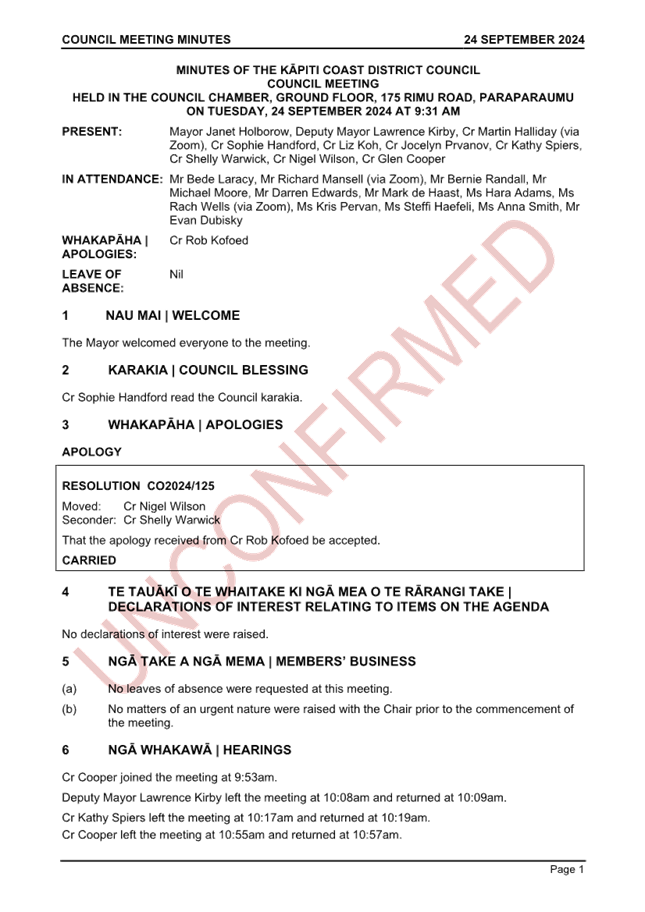


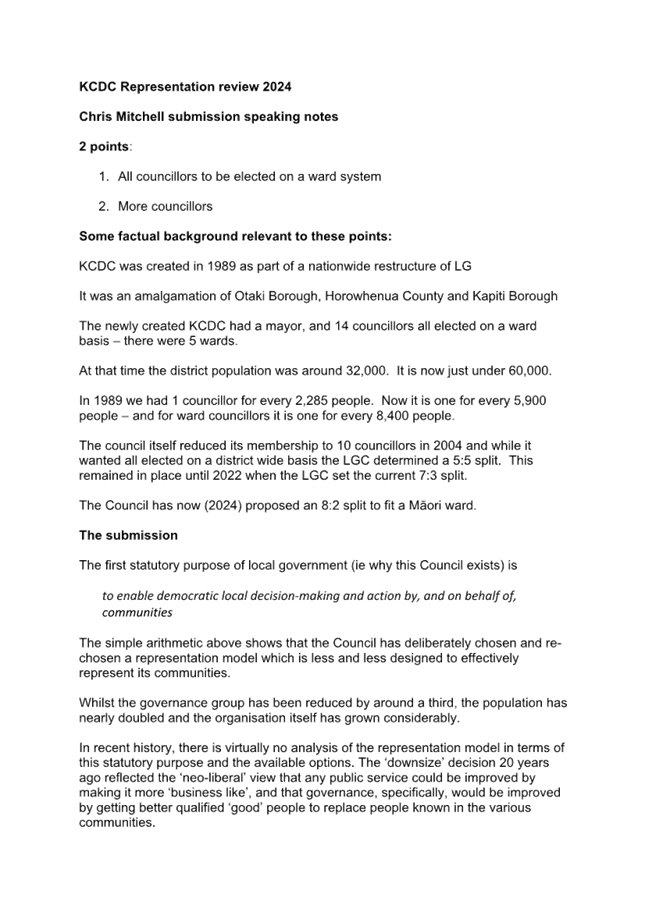



|
Council Meeting Agenda
|
31 October 2024
|
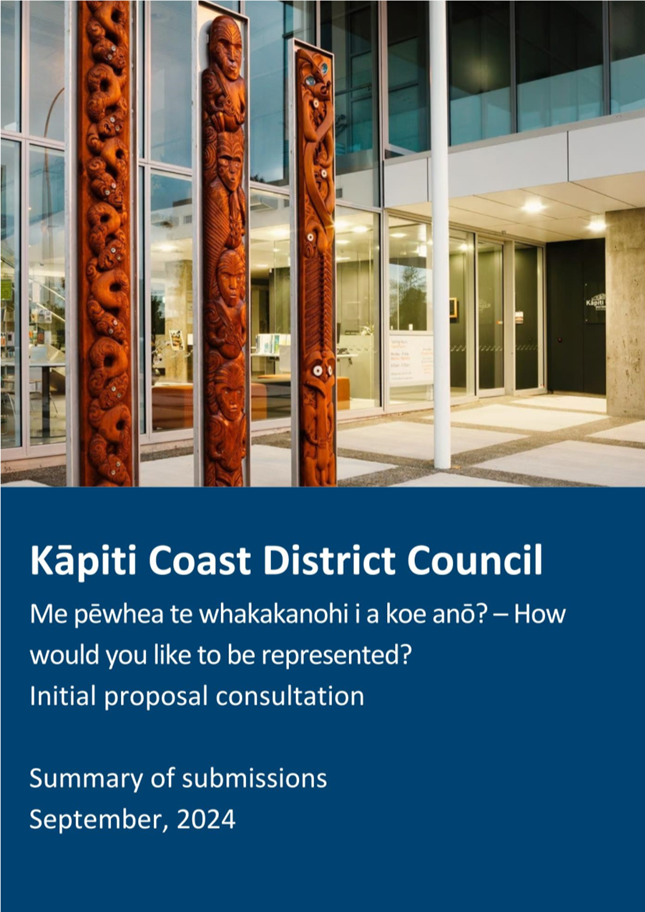
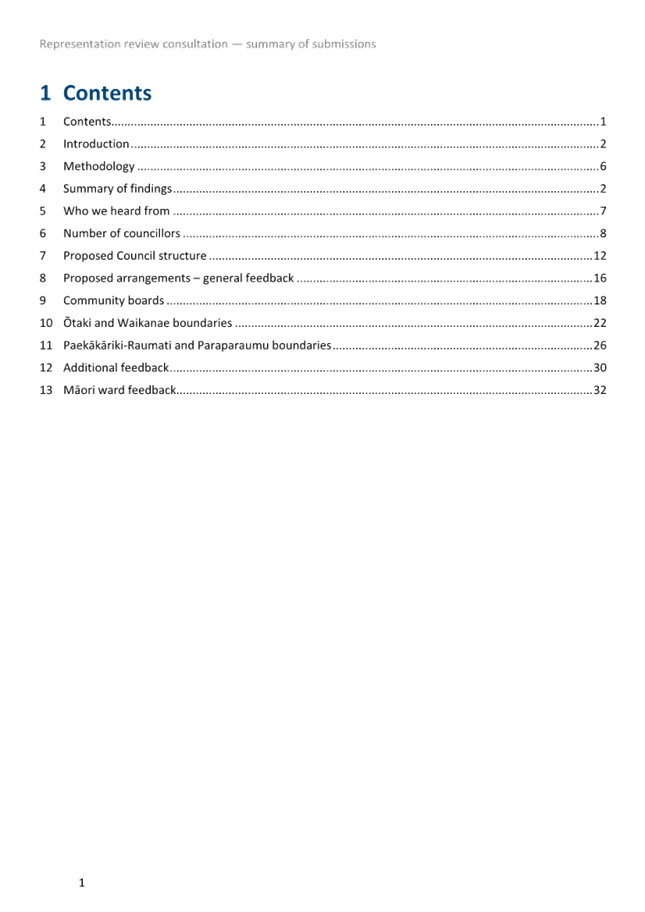
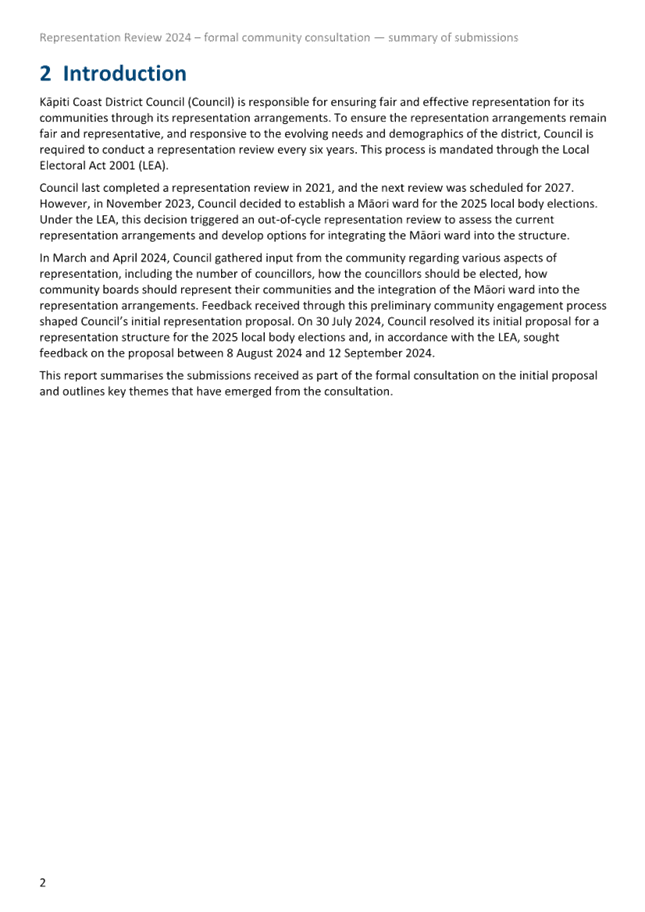
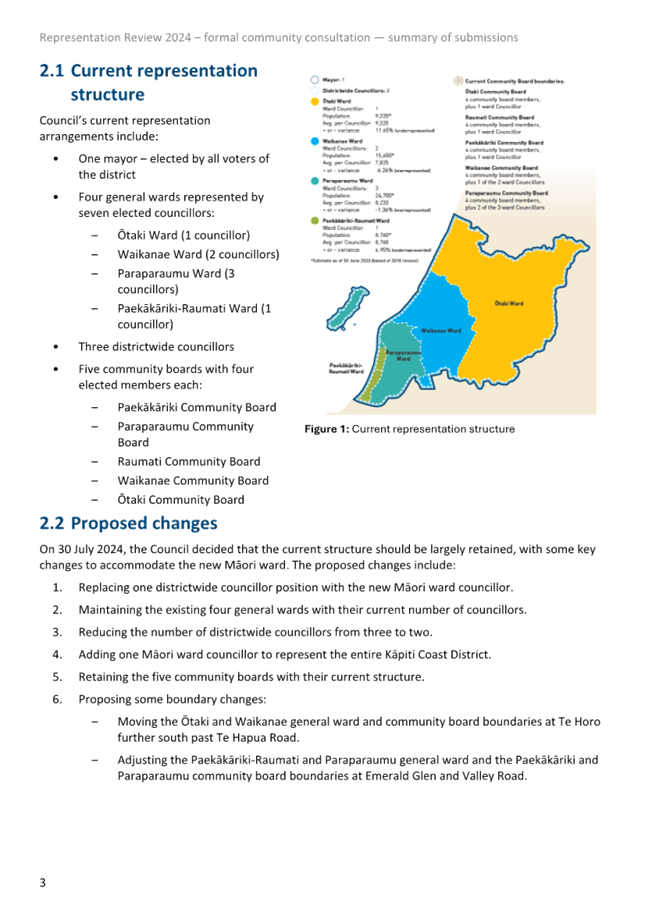

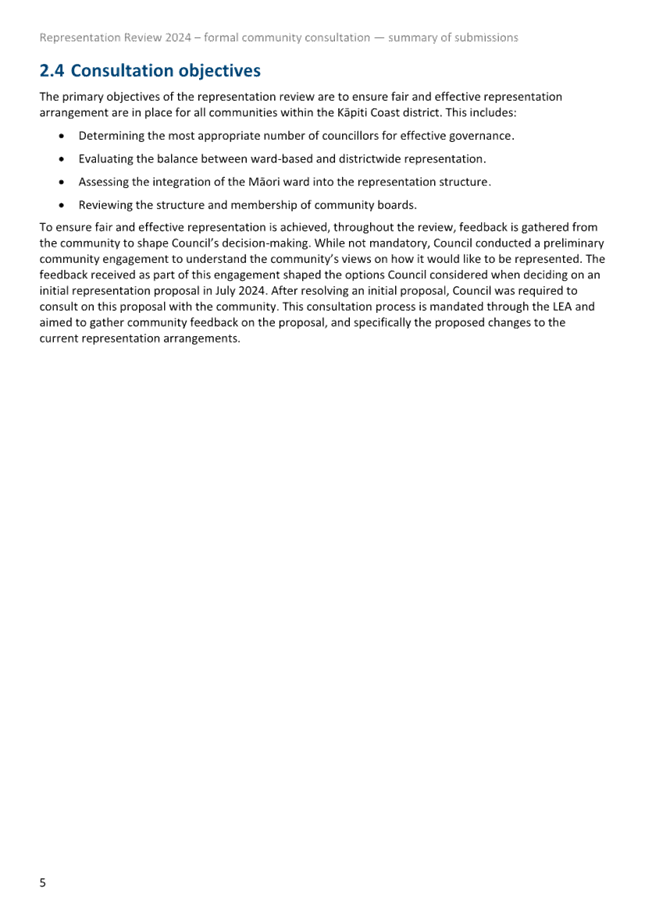
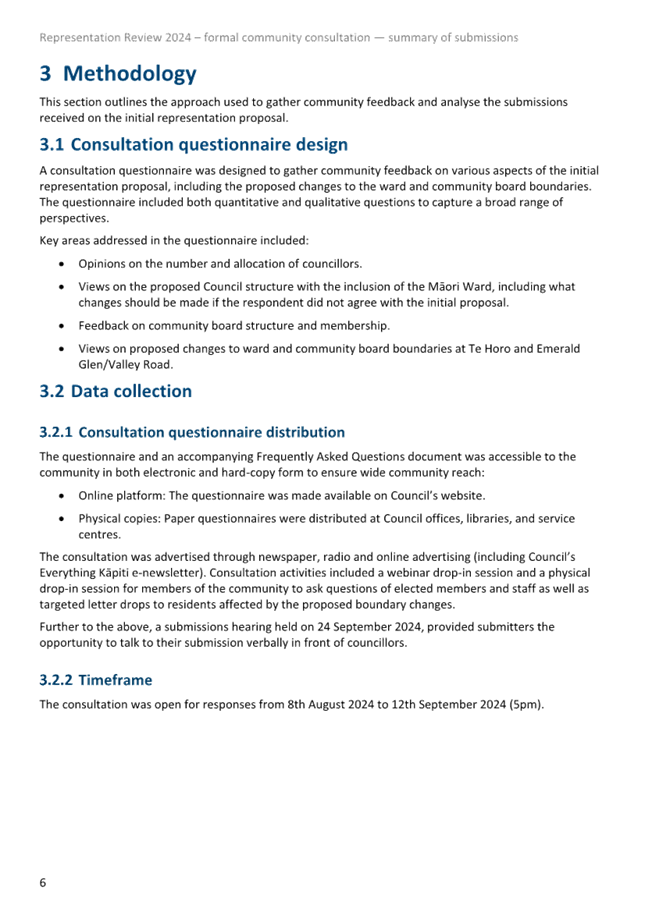
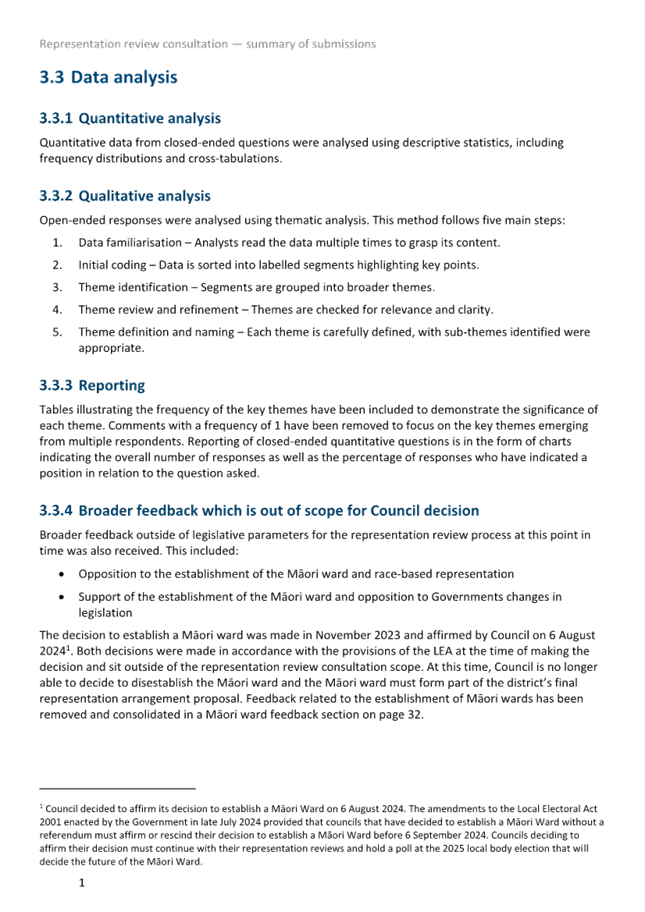
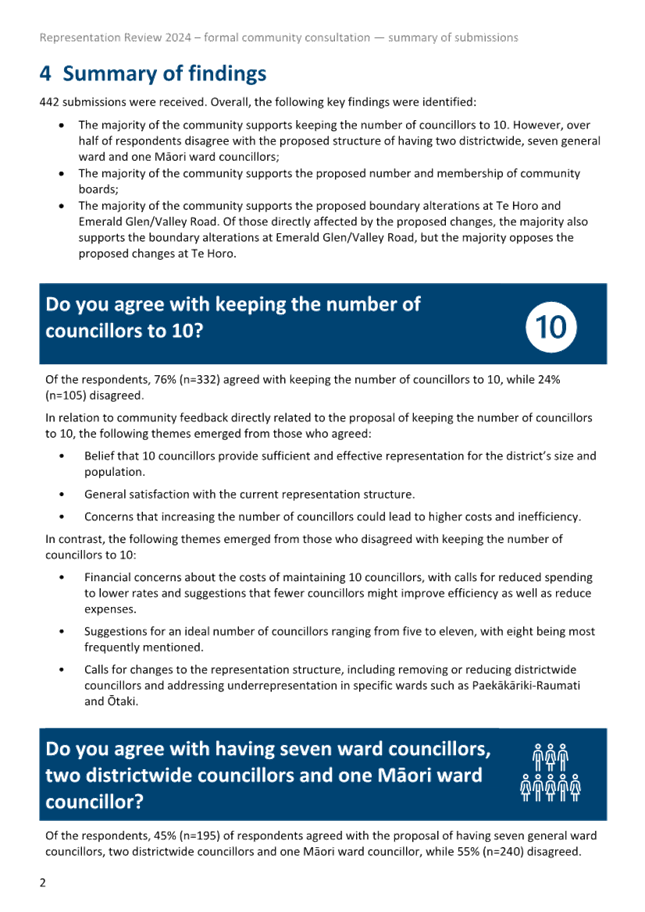

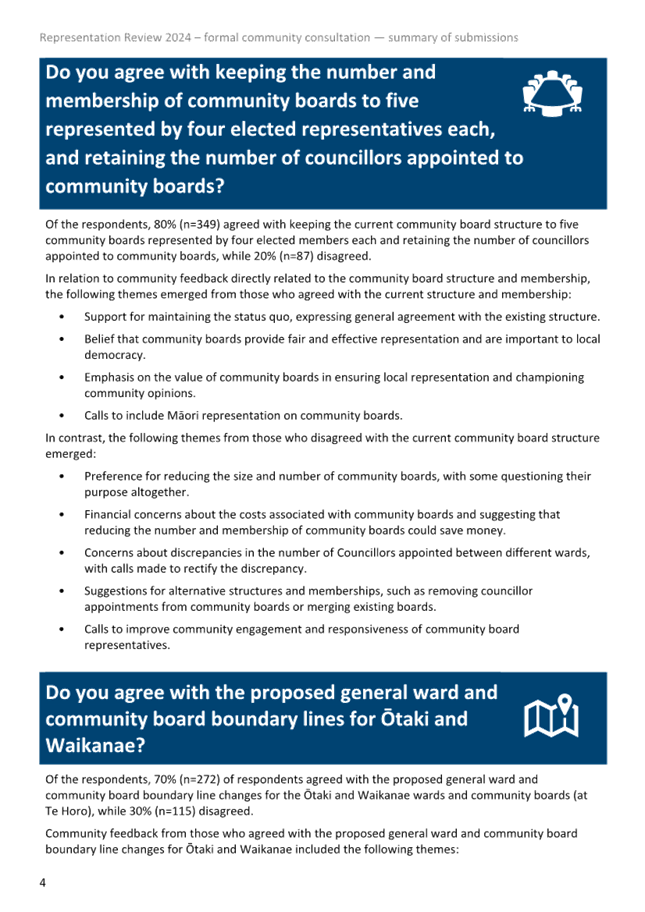

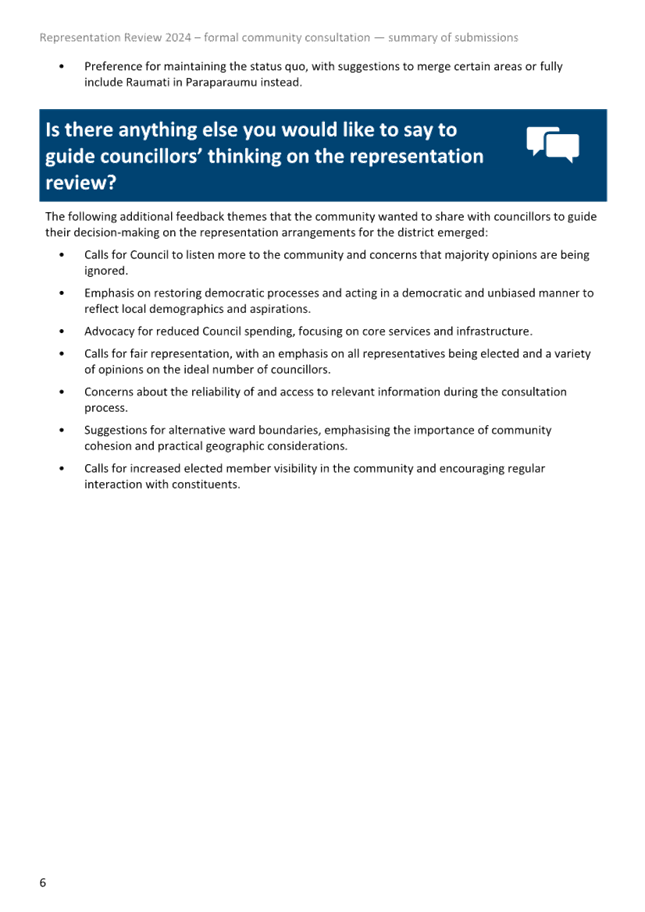
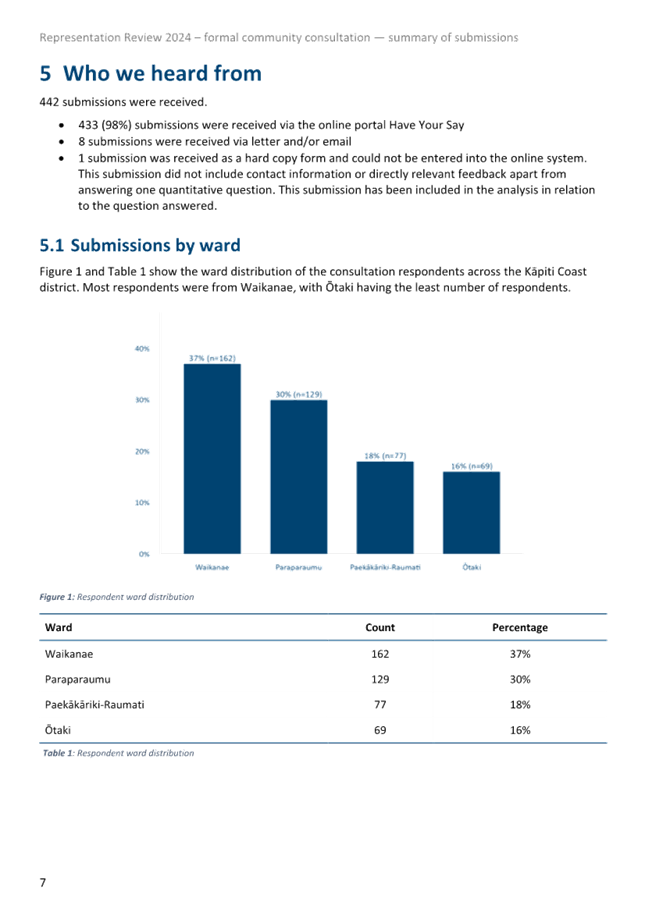
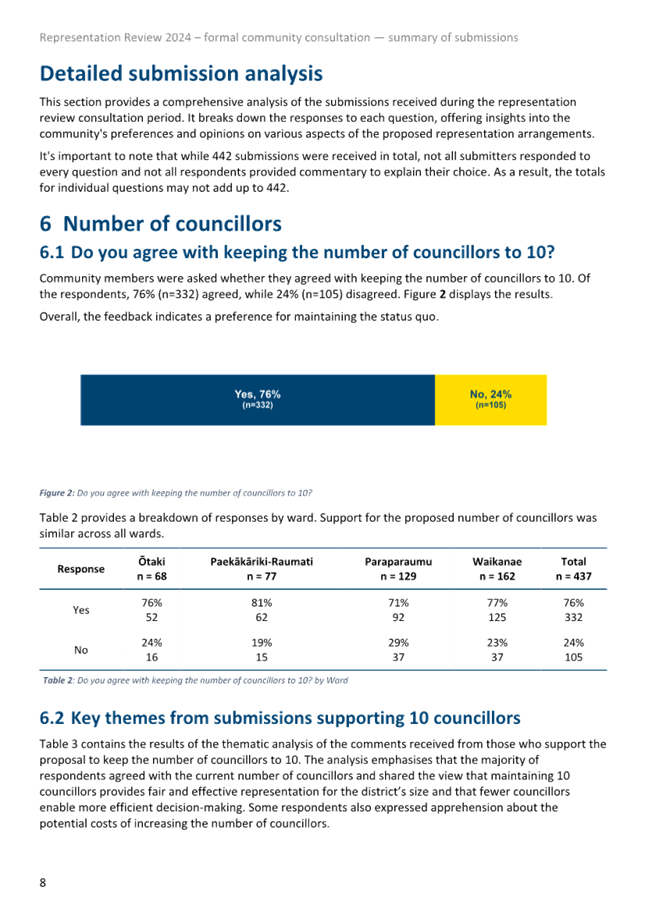
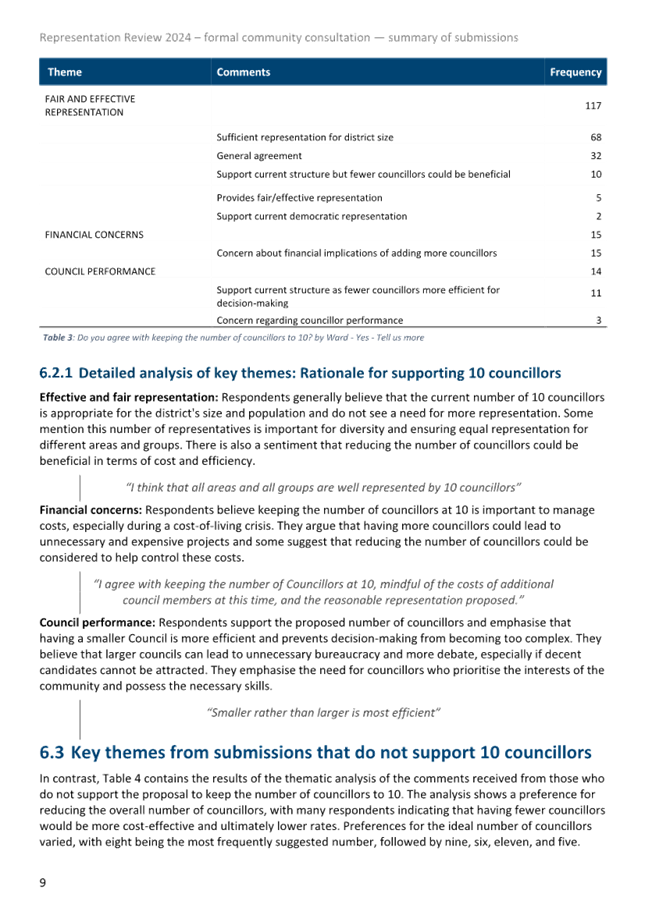

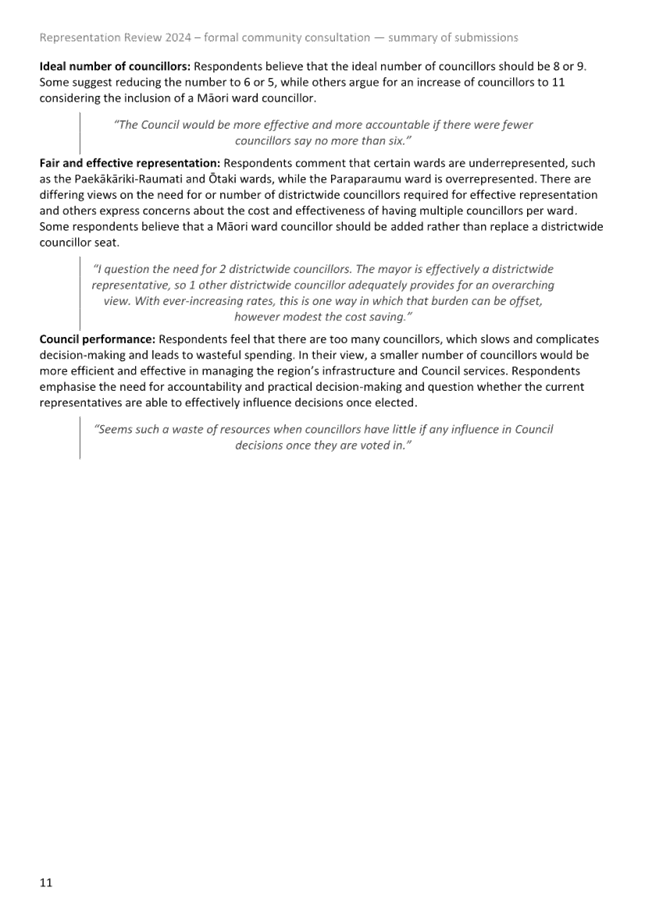
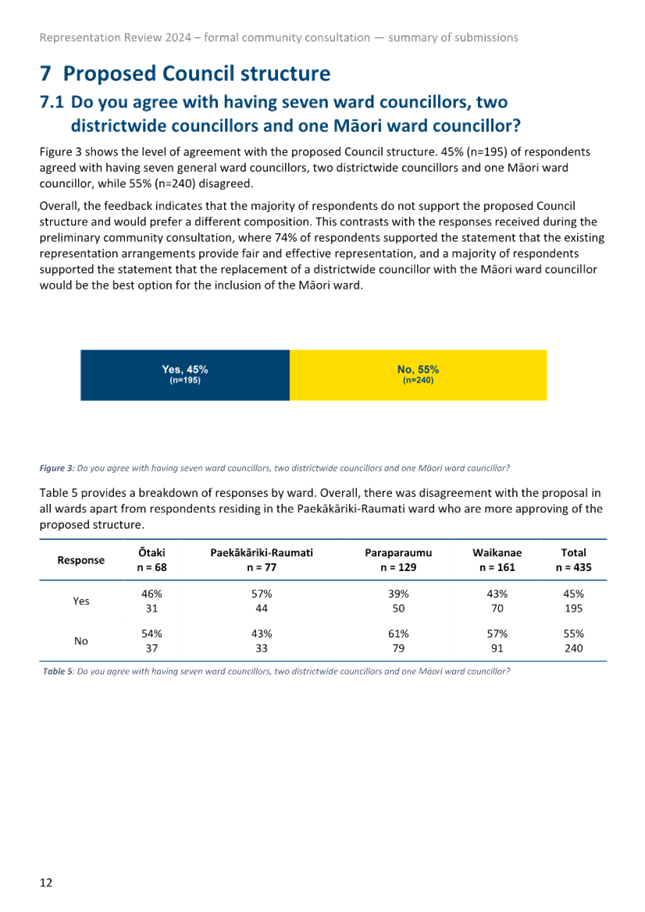

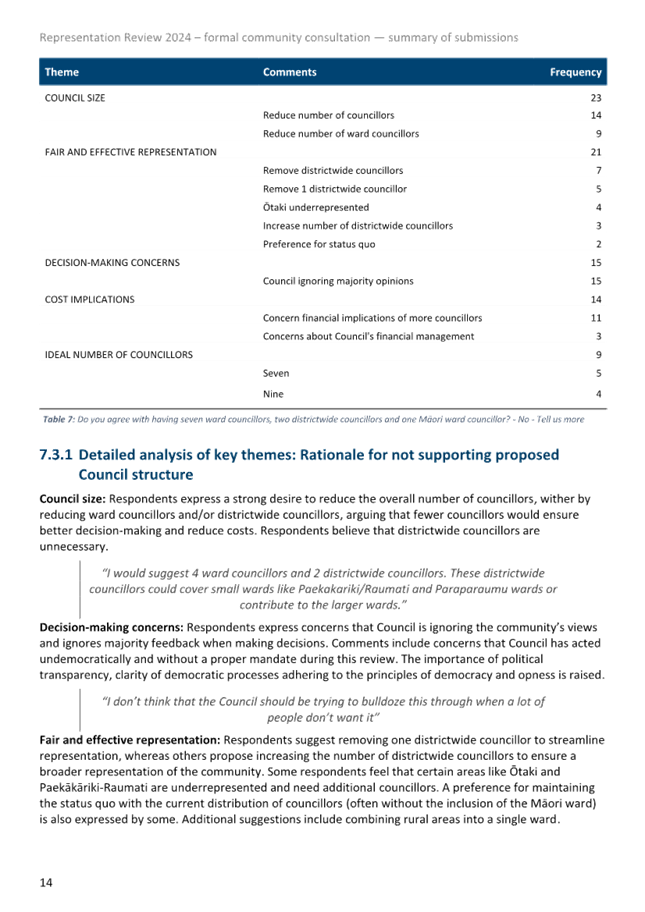
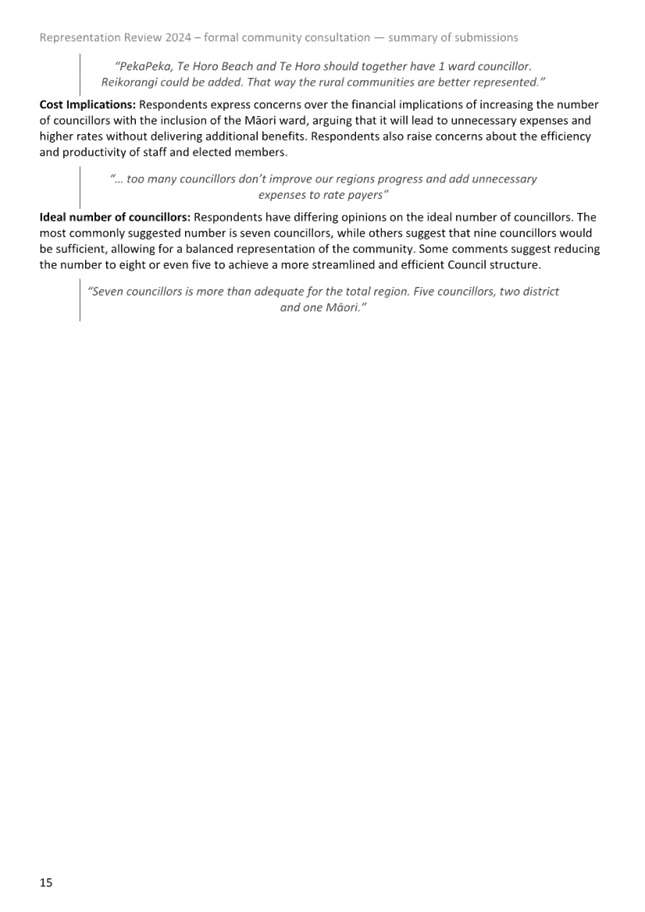
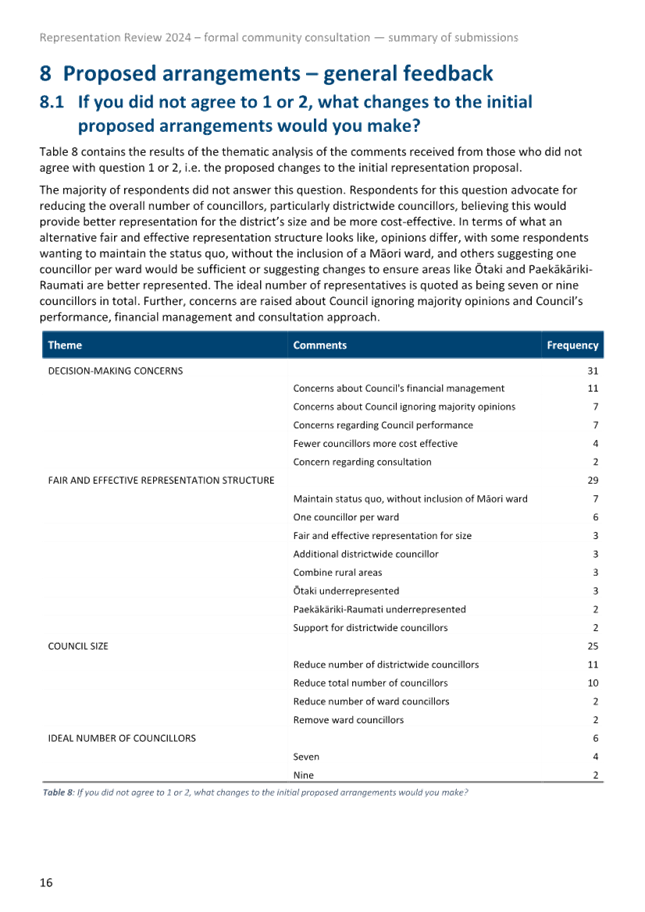

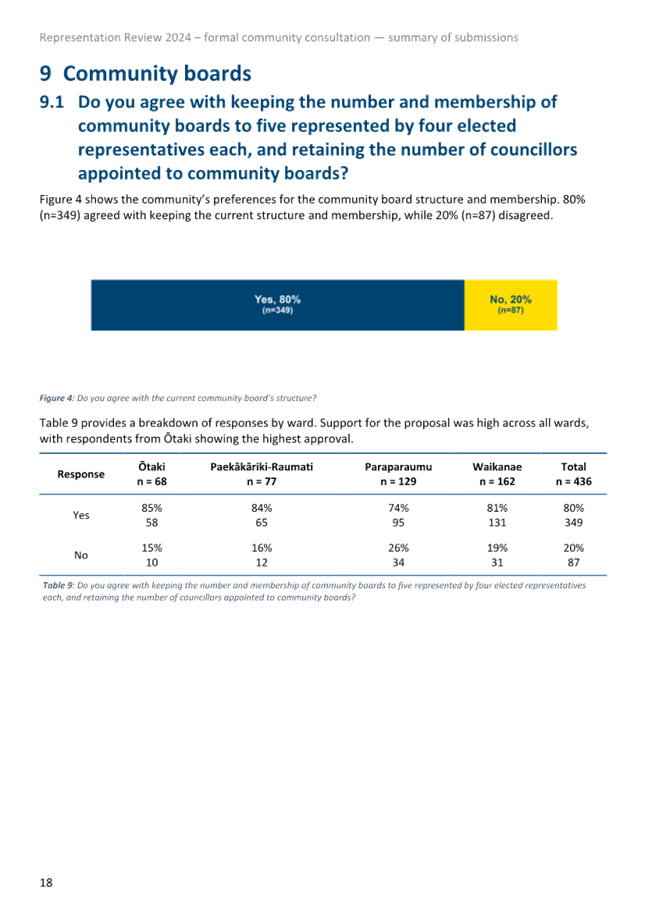

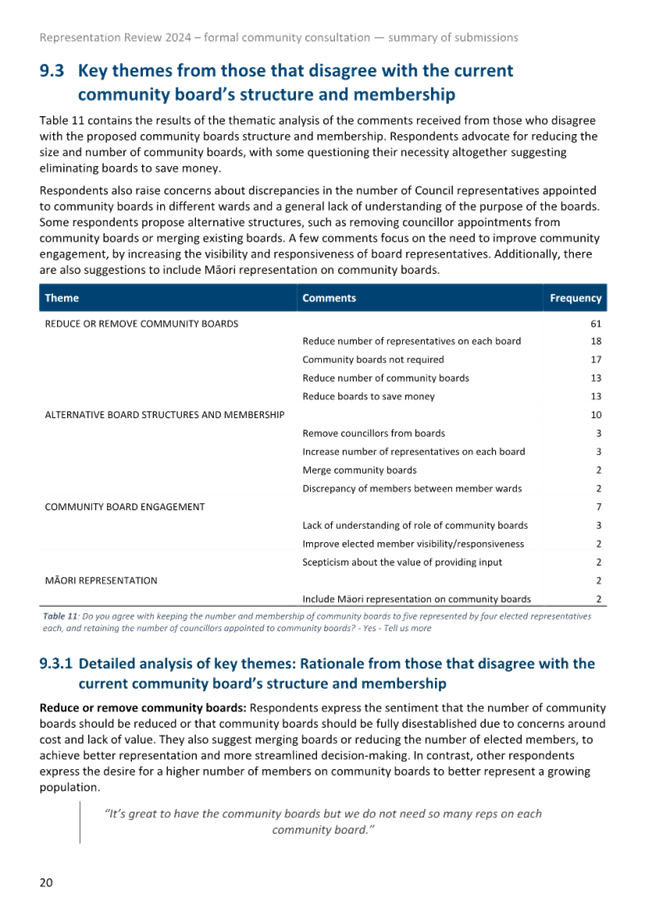
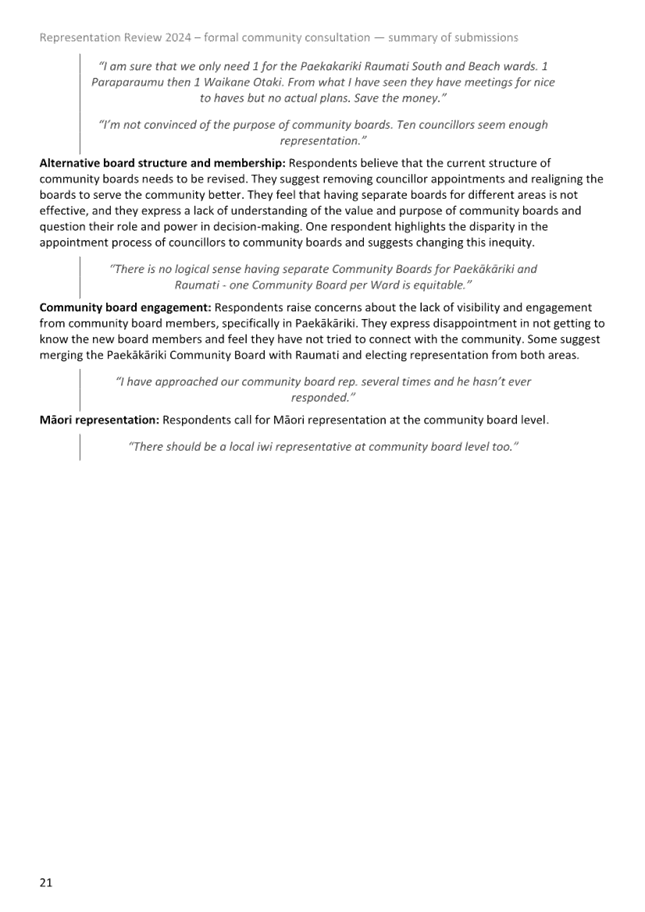
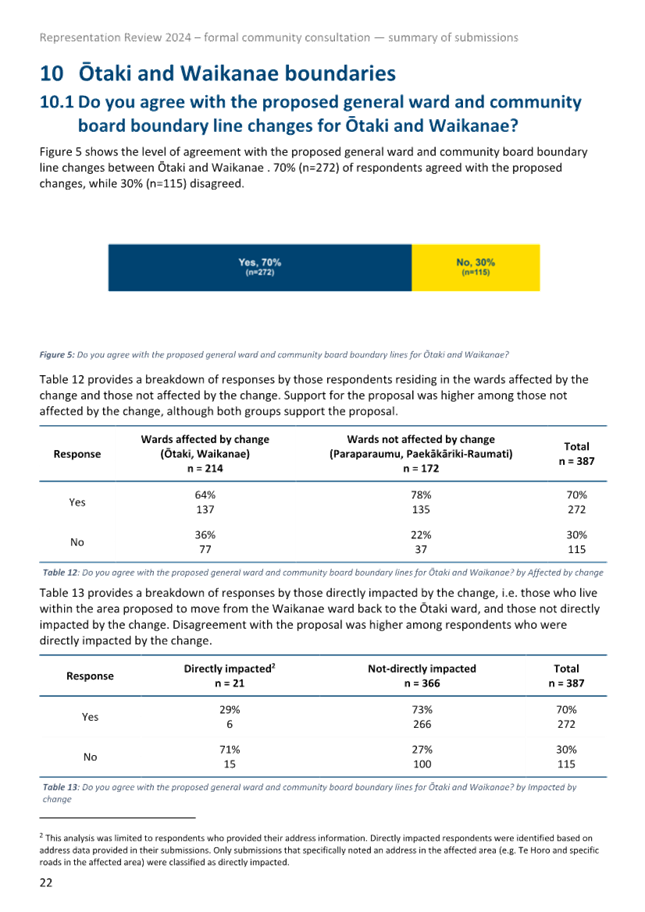
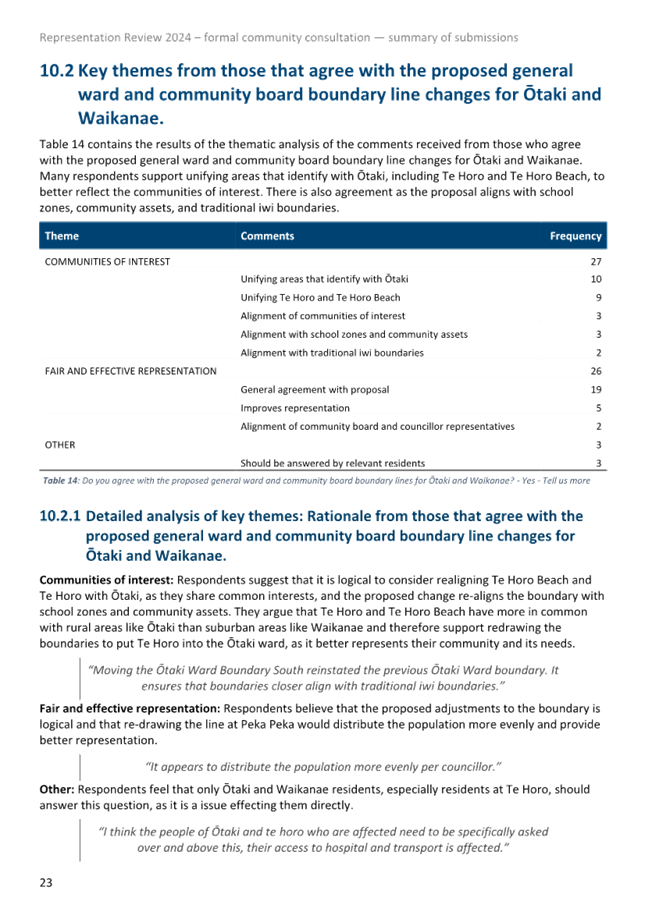
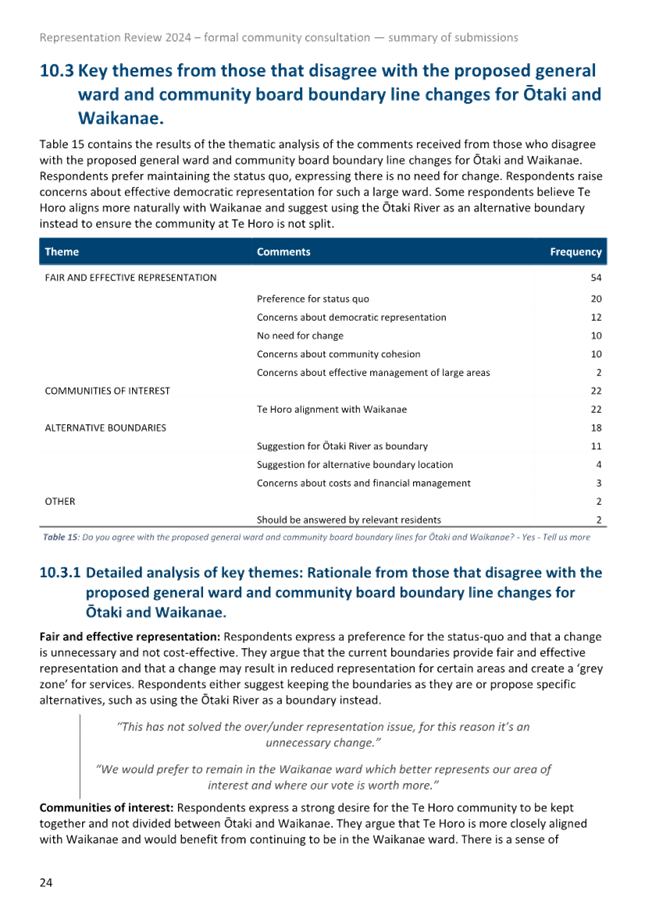
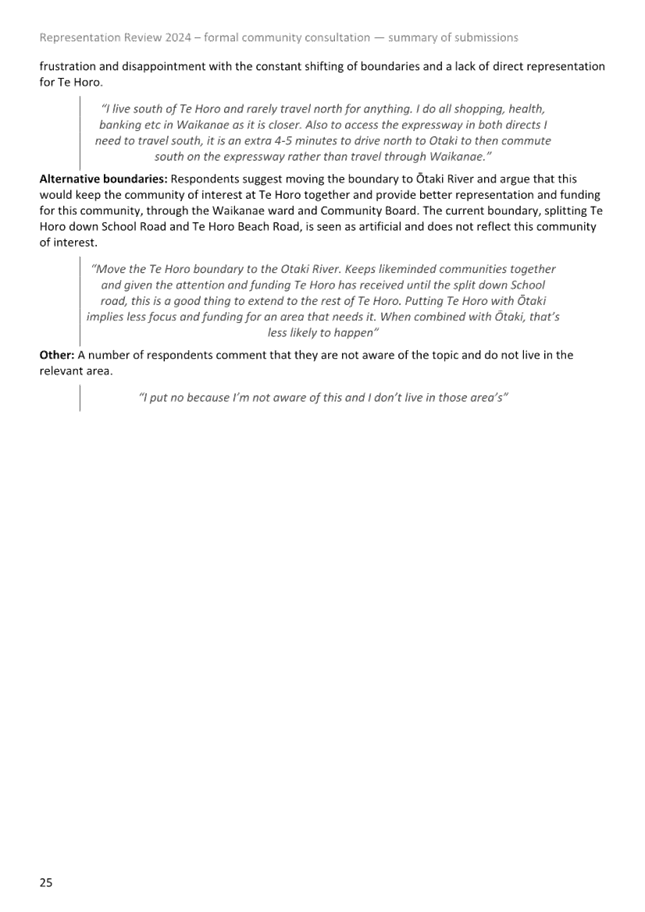
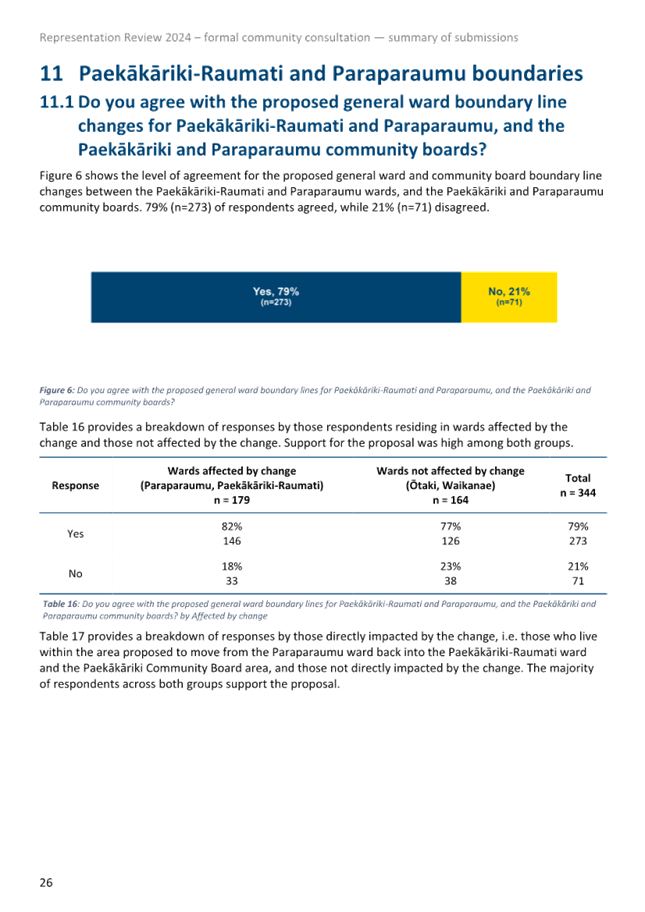
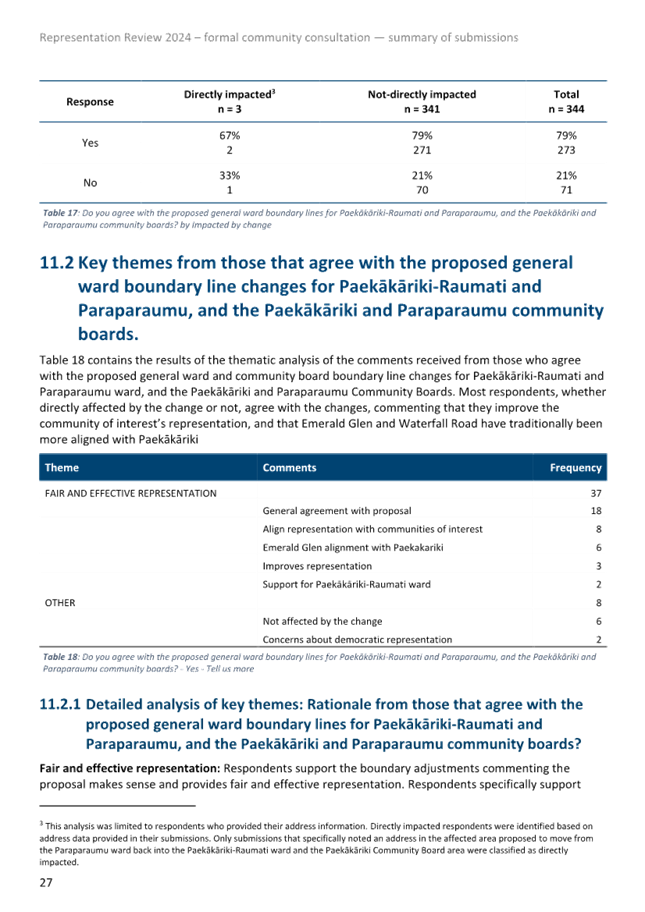
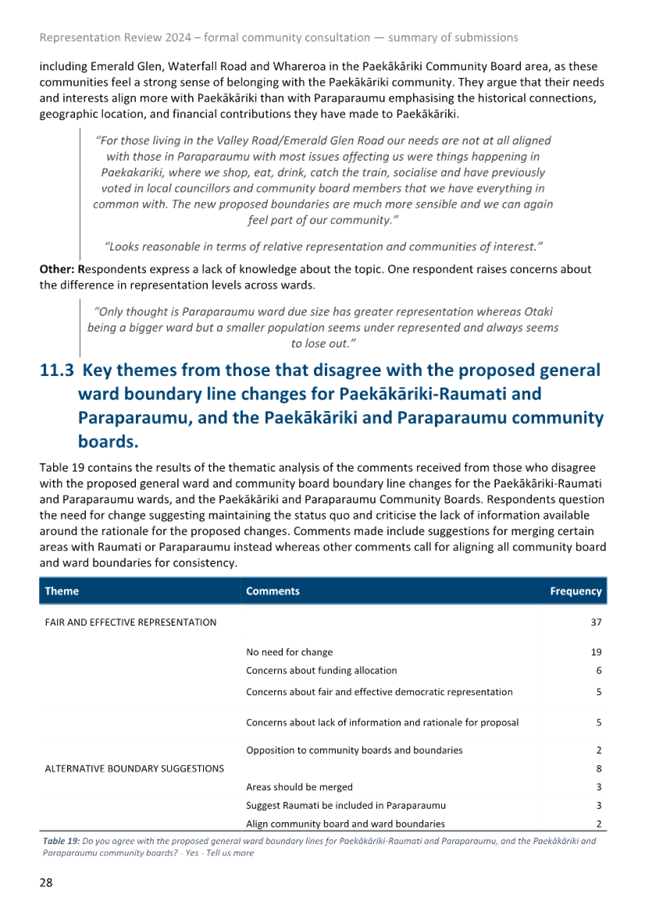
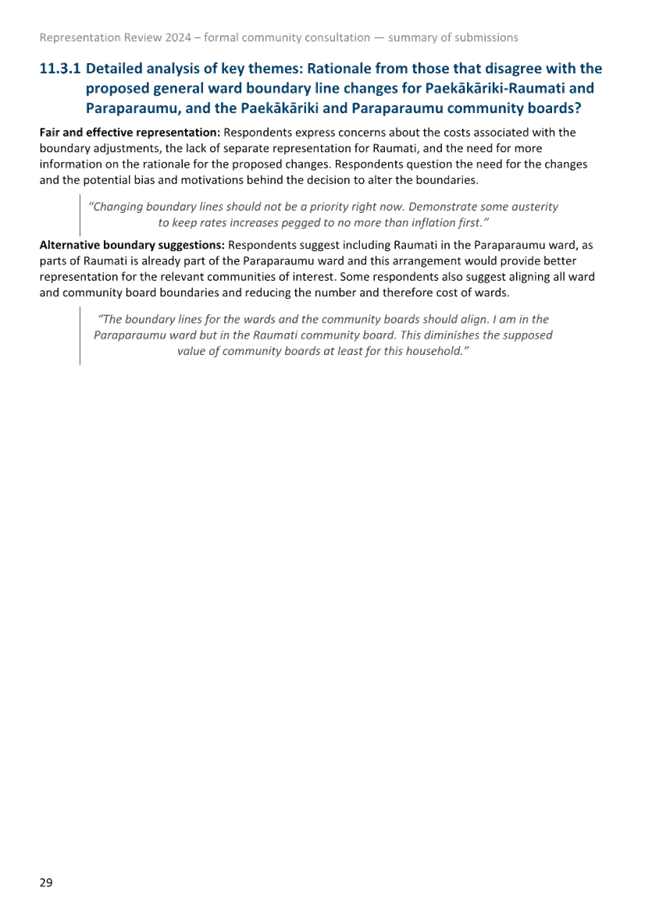
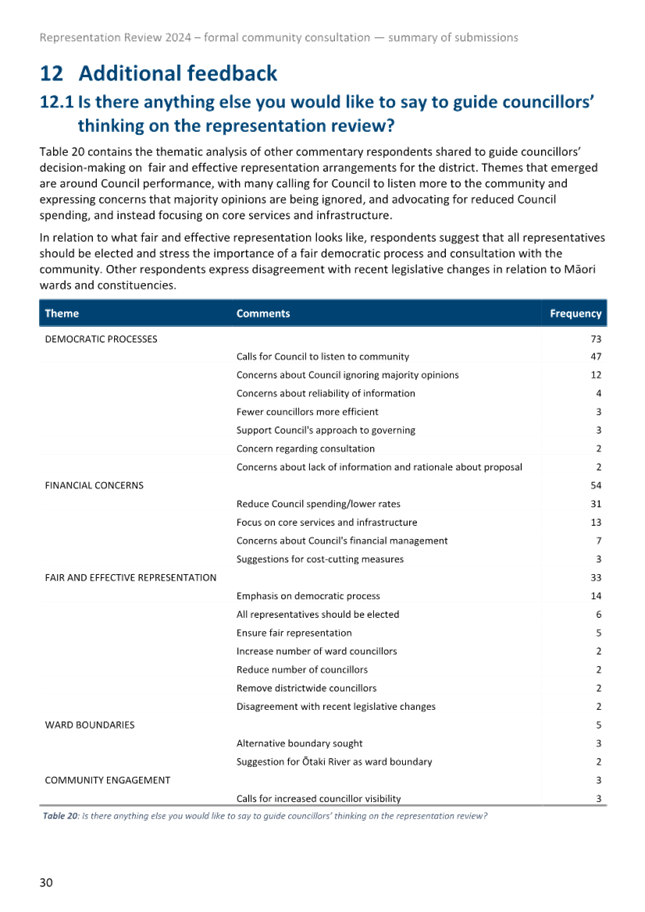
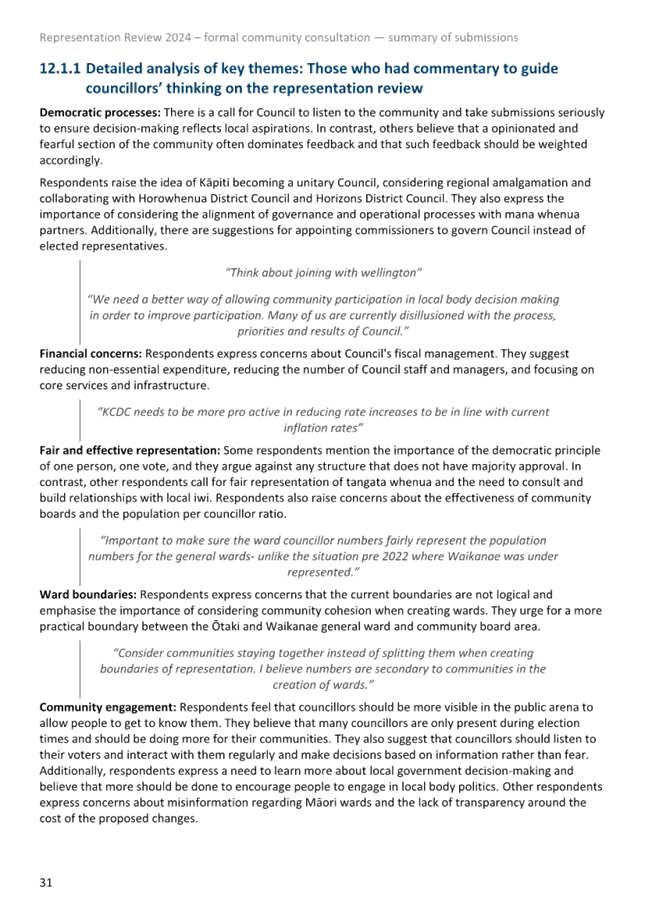
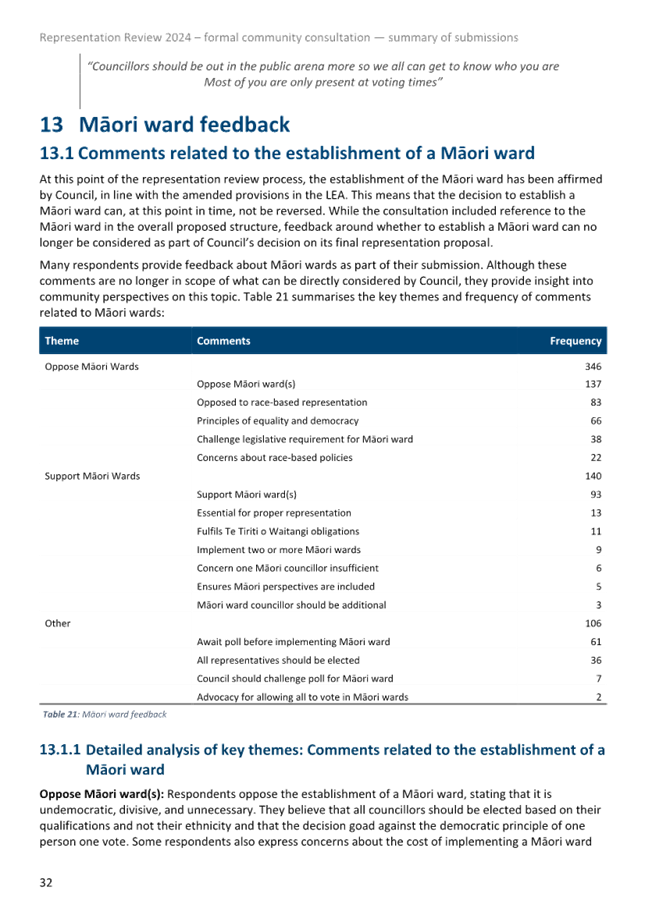
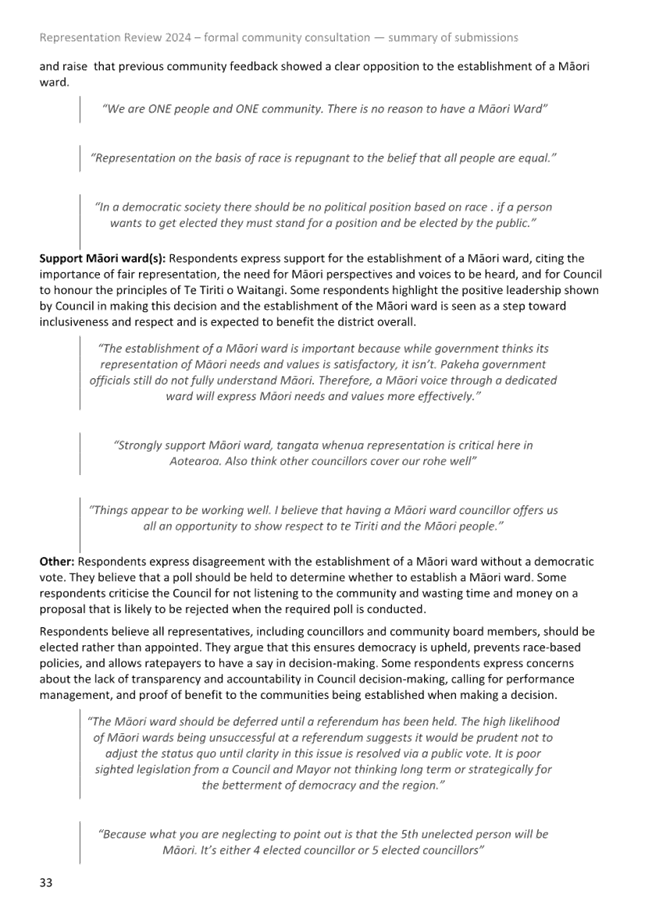

|
Council Meeting Agenda
|
31 October 2024
|
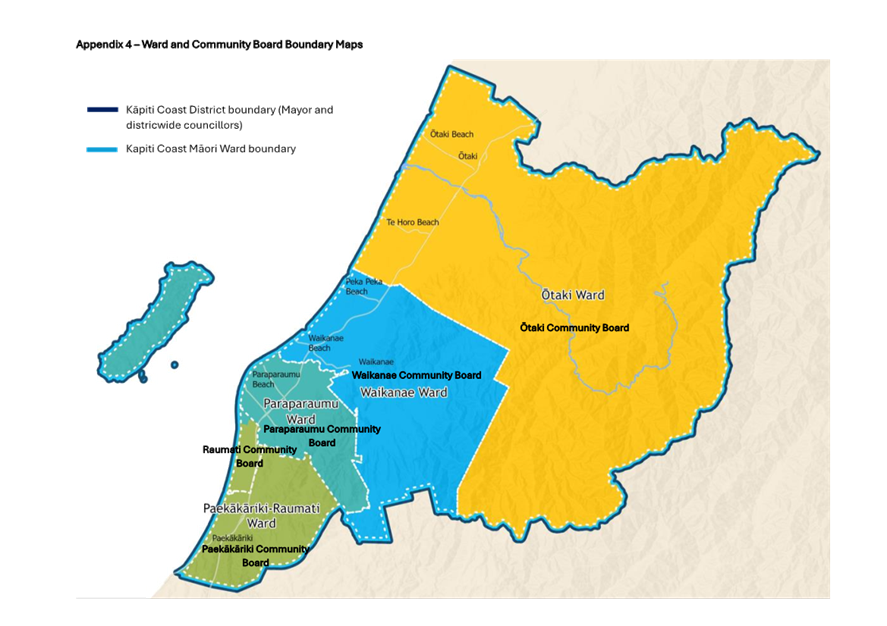
|
Council Meeting Agenda
|
31 October 2024
|
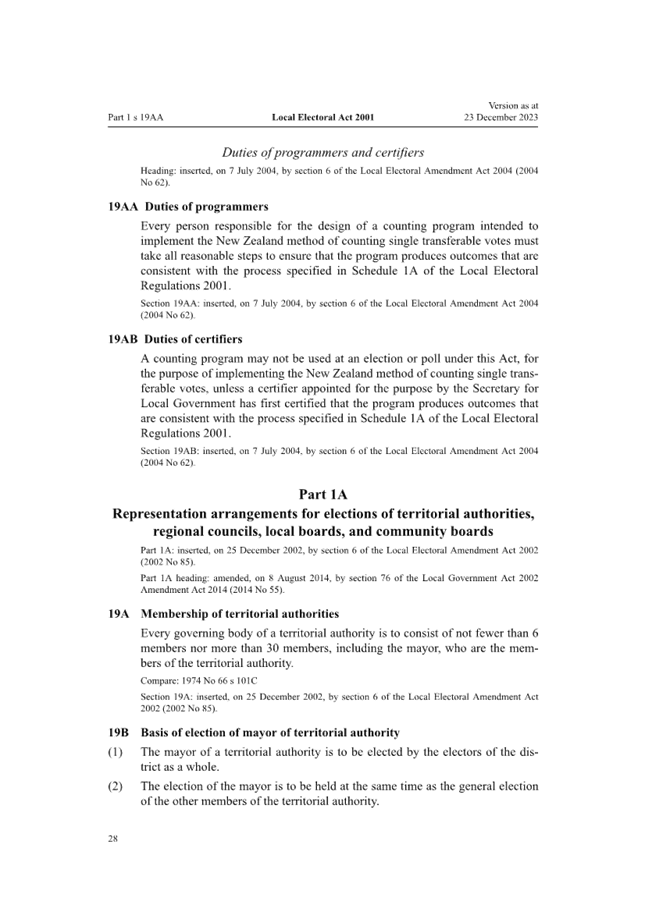
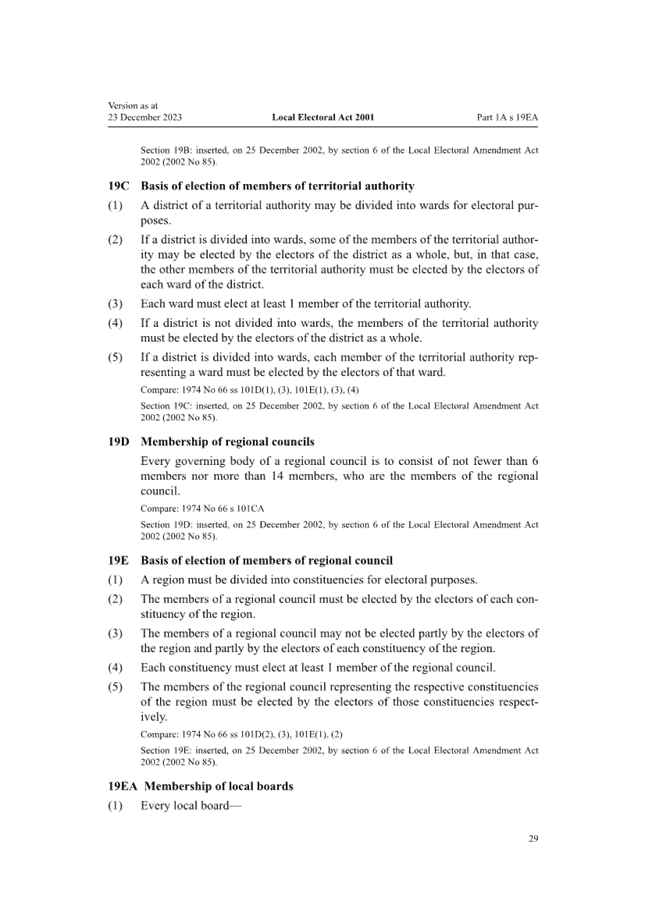
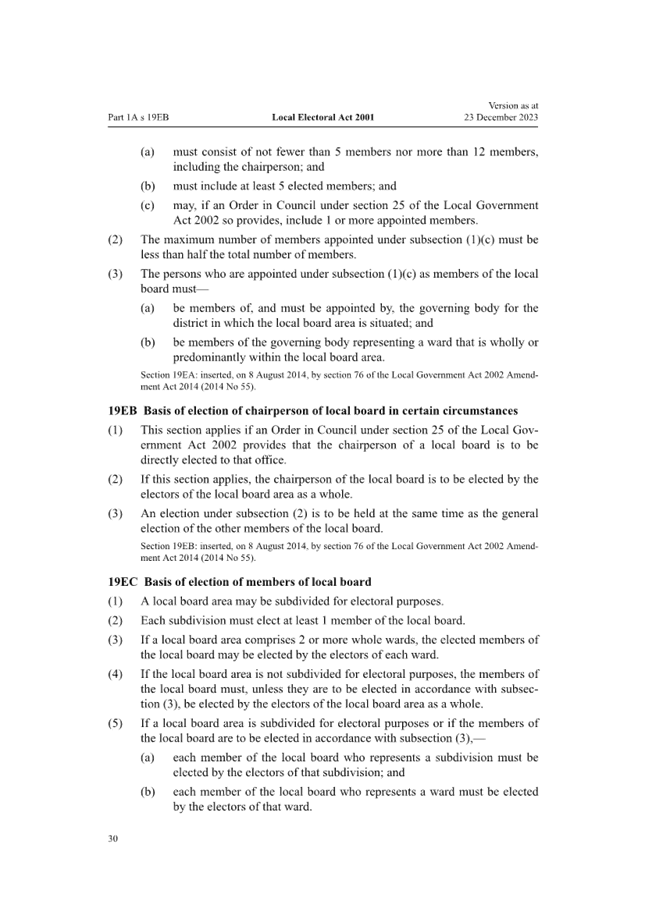
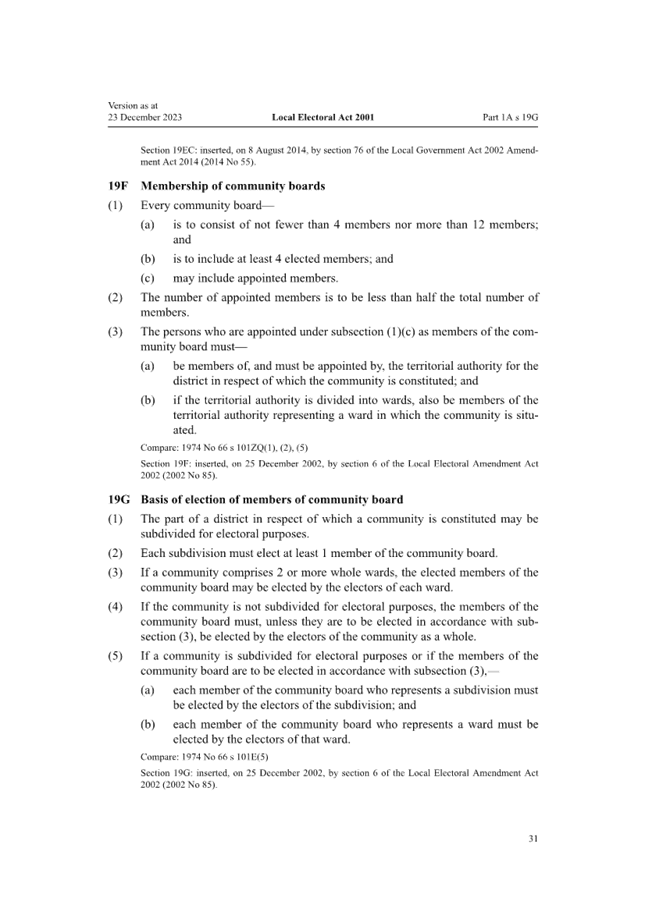
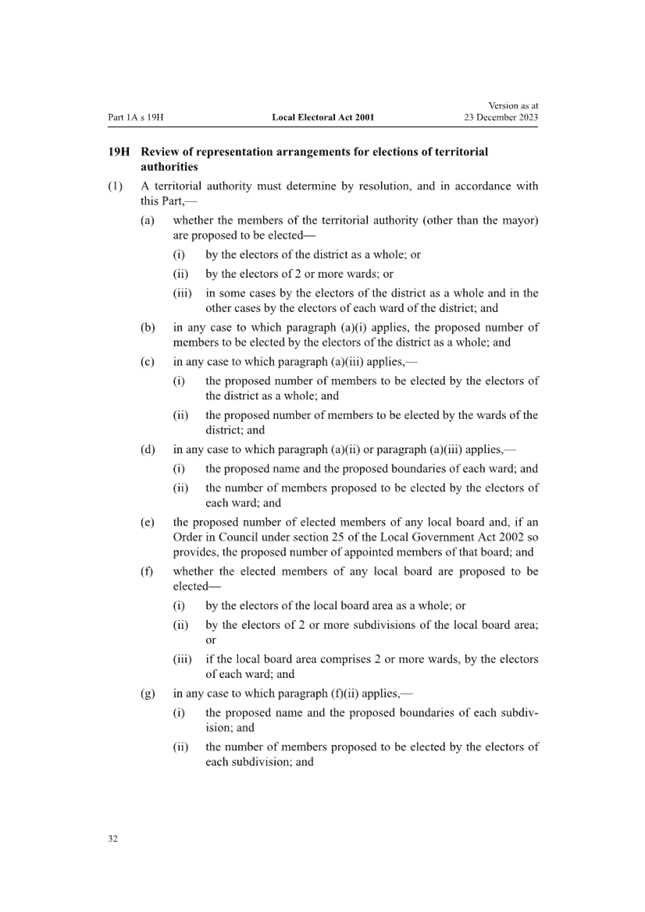
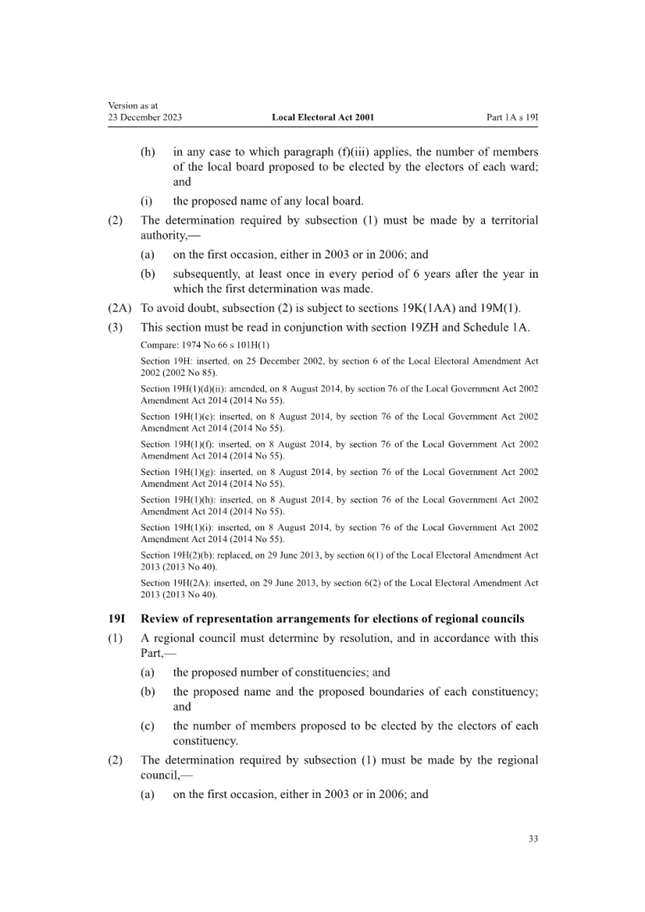
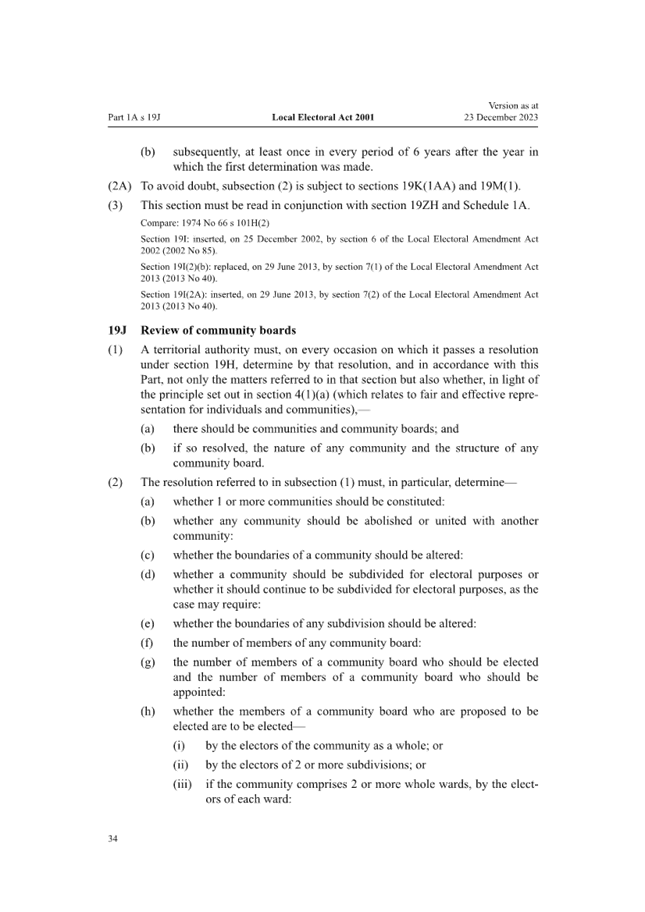

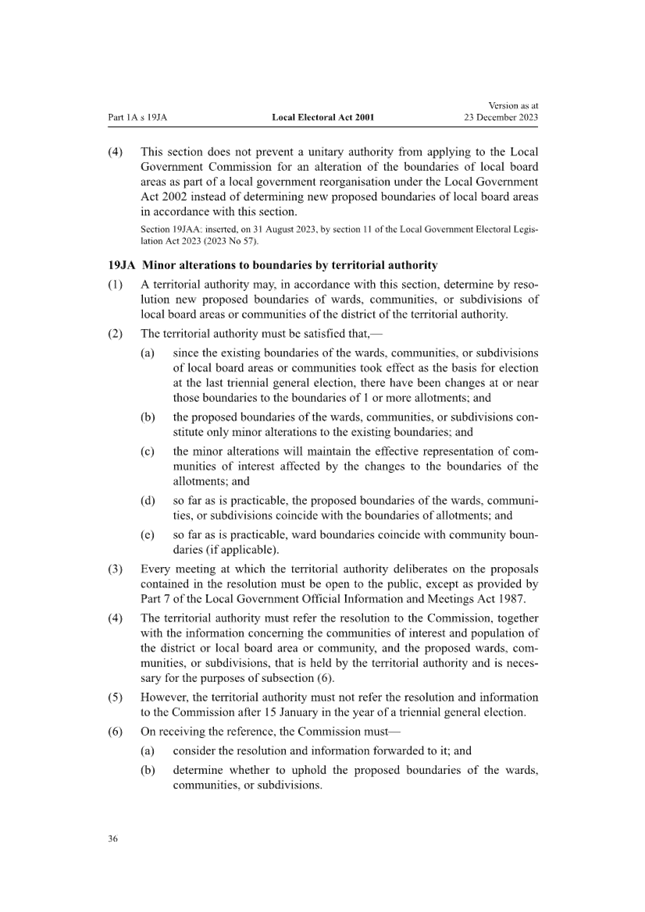
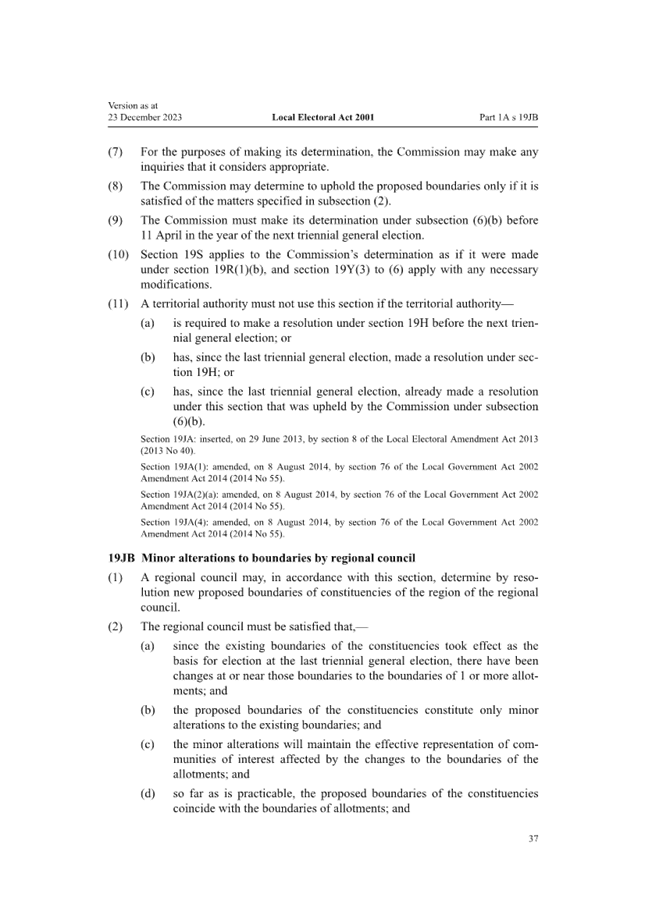

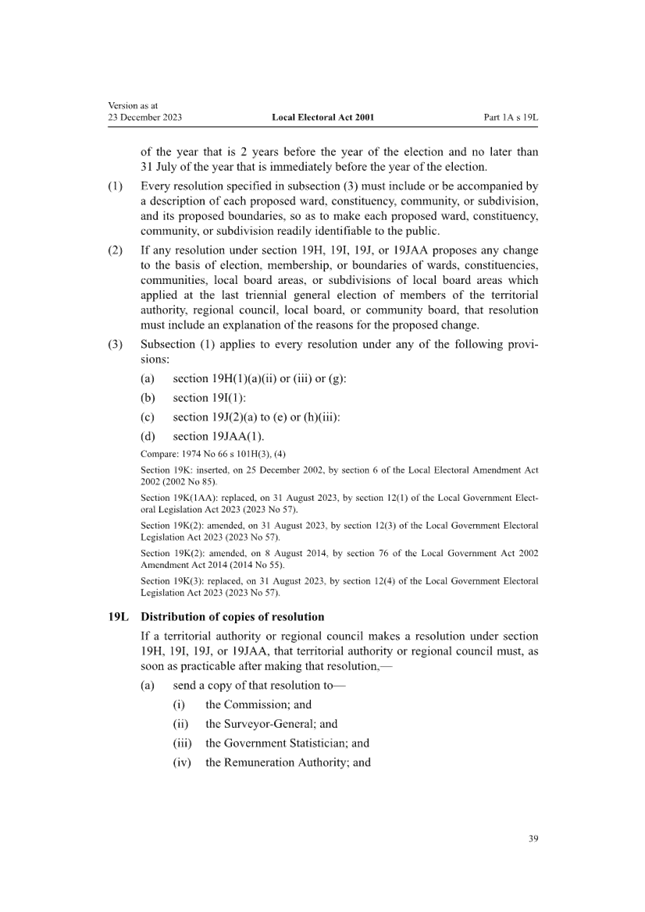
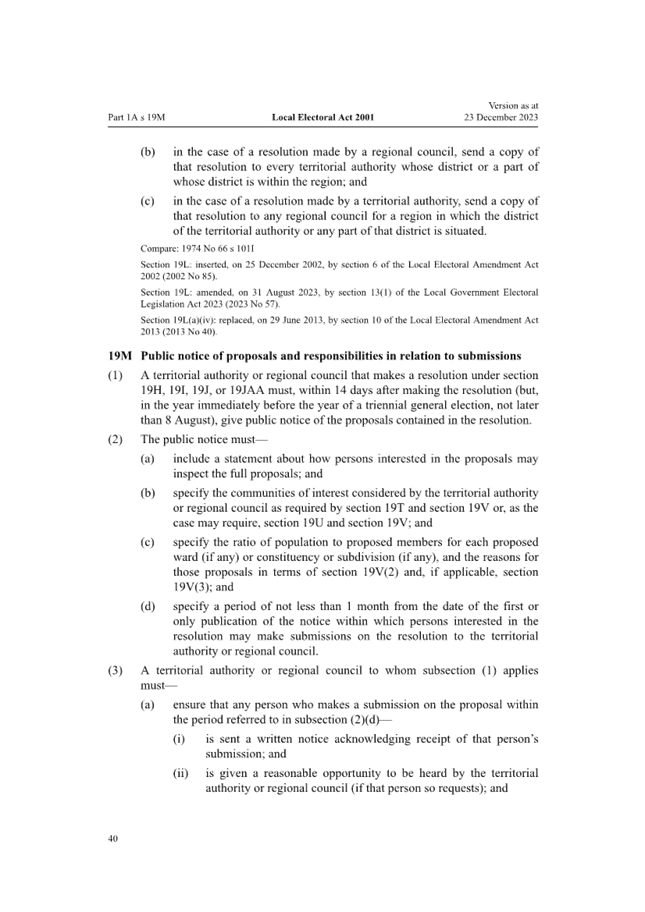
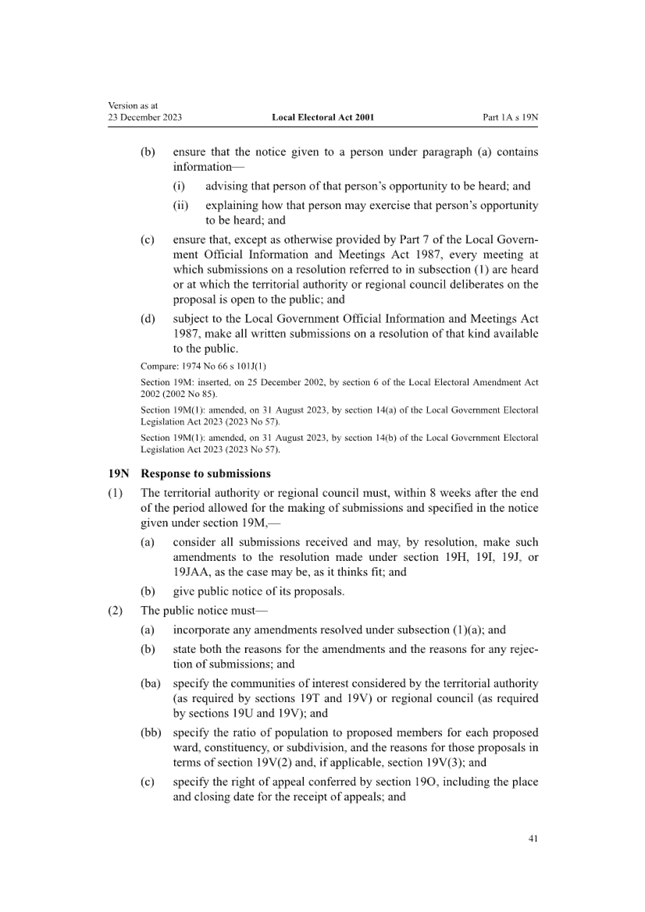
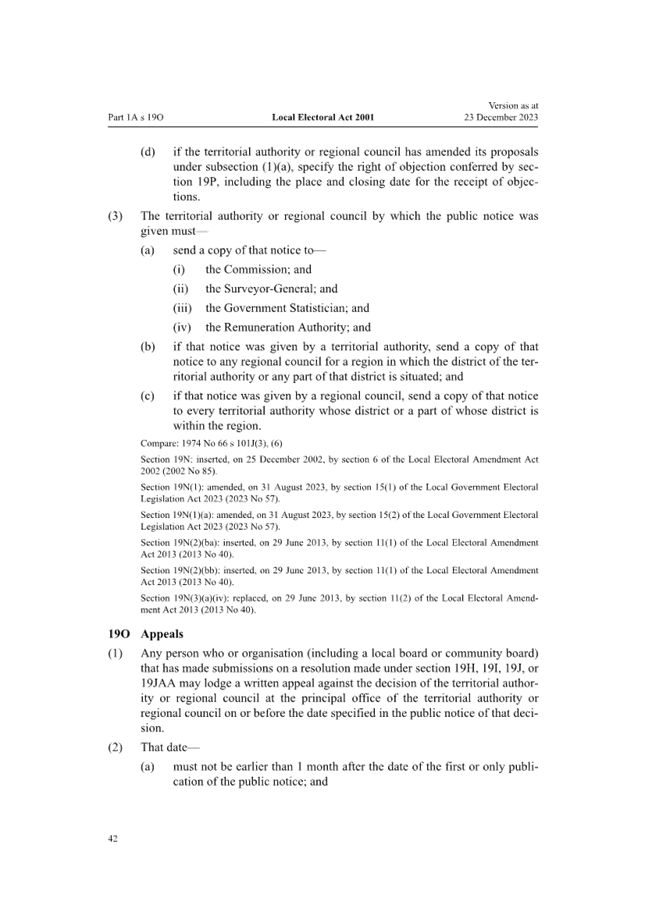
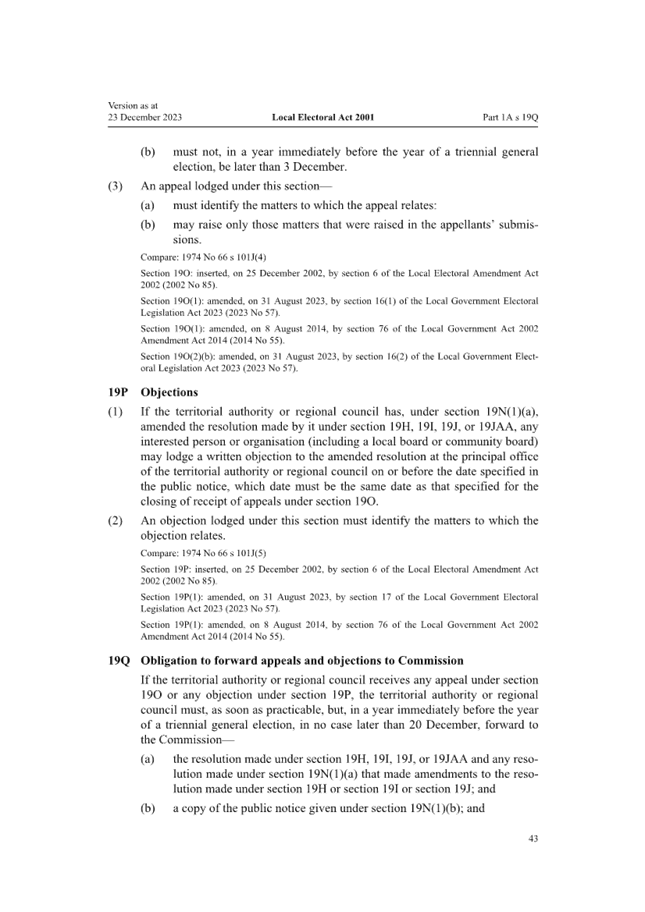
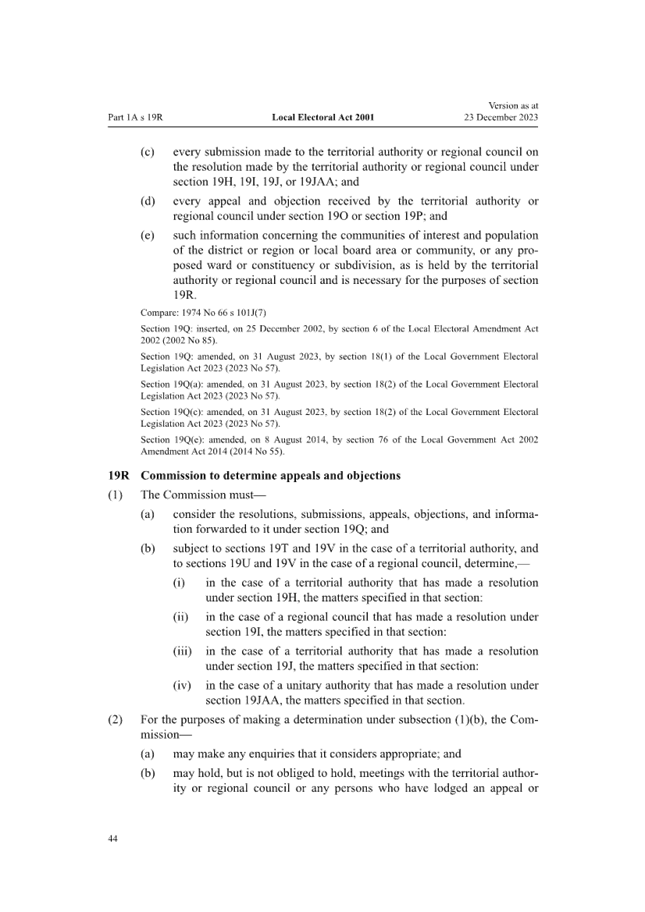
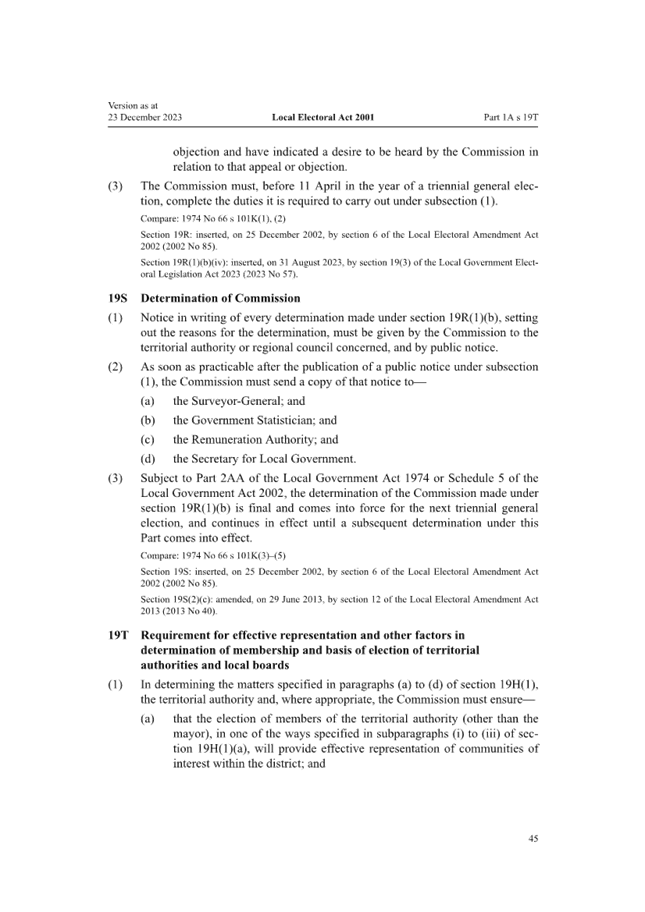
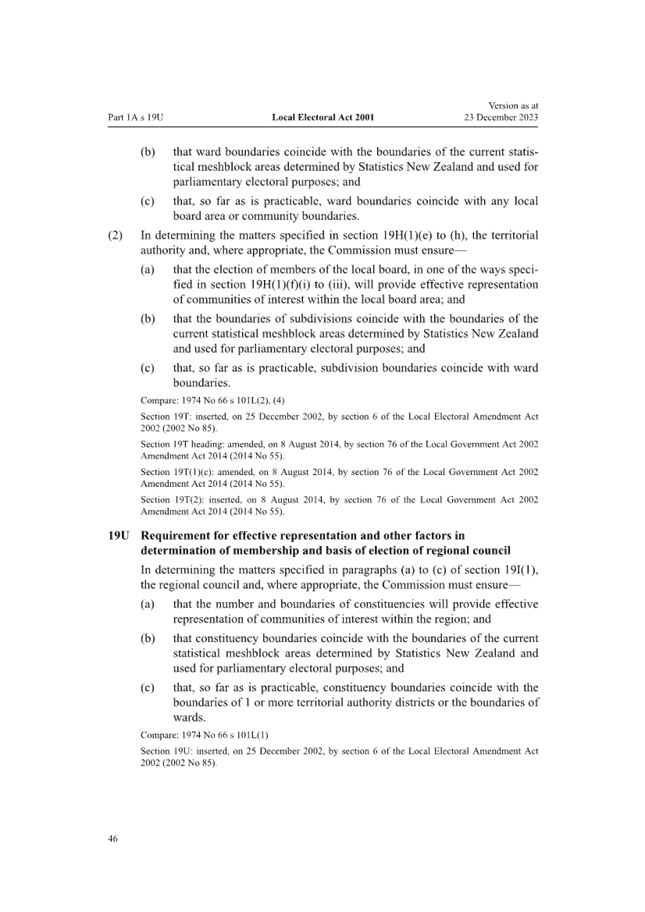
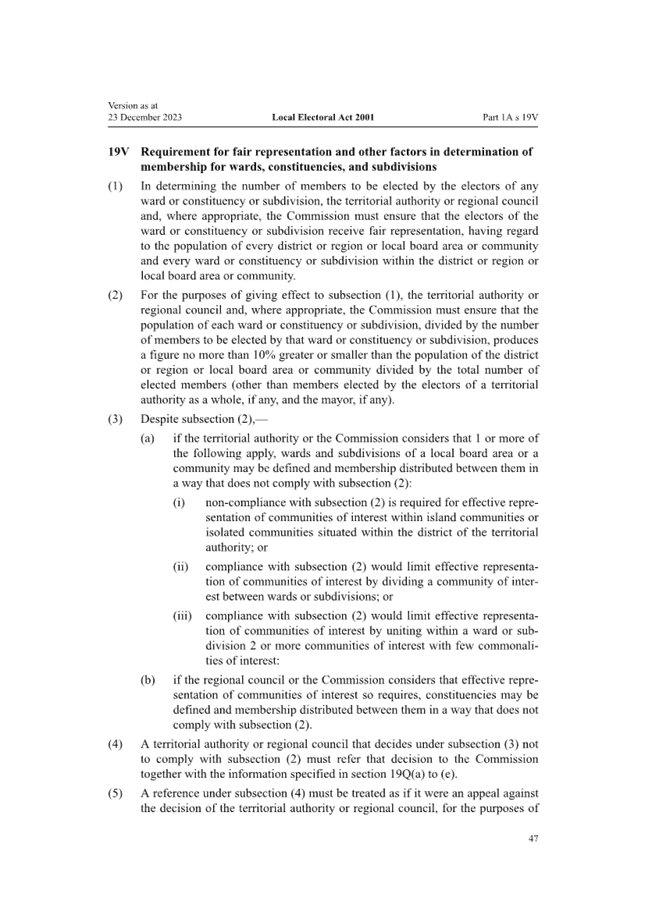
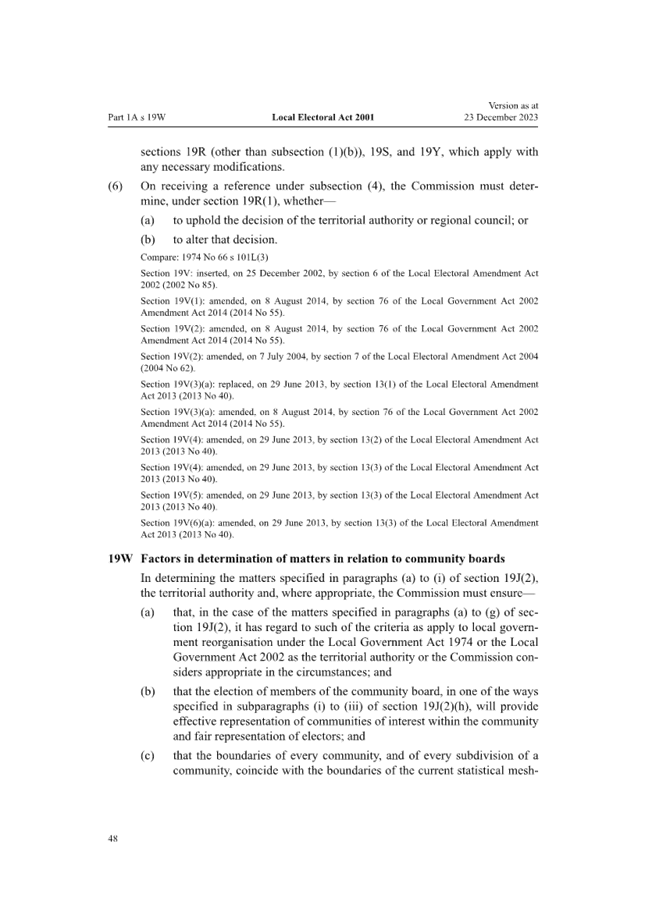
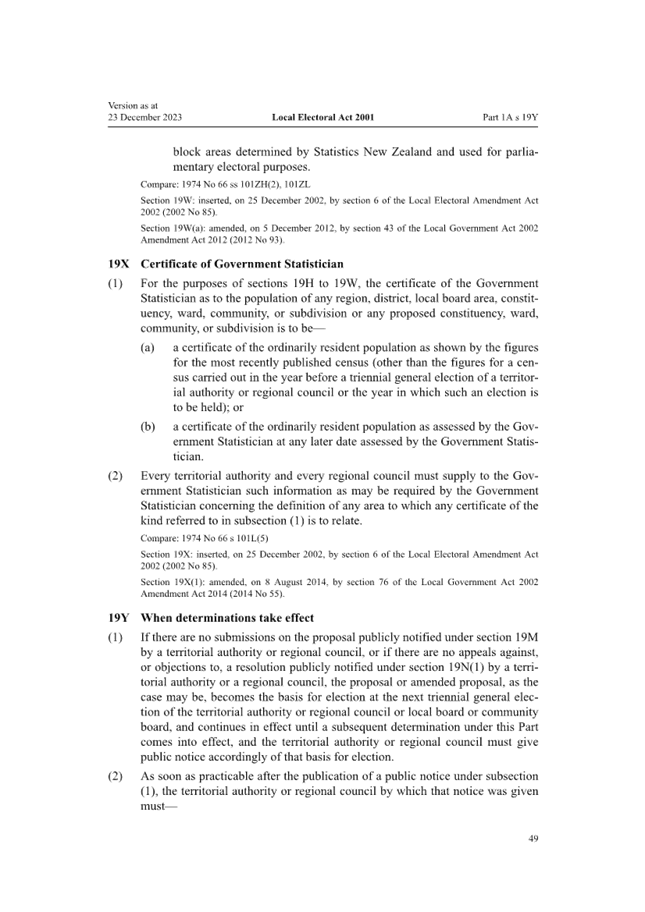
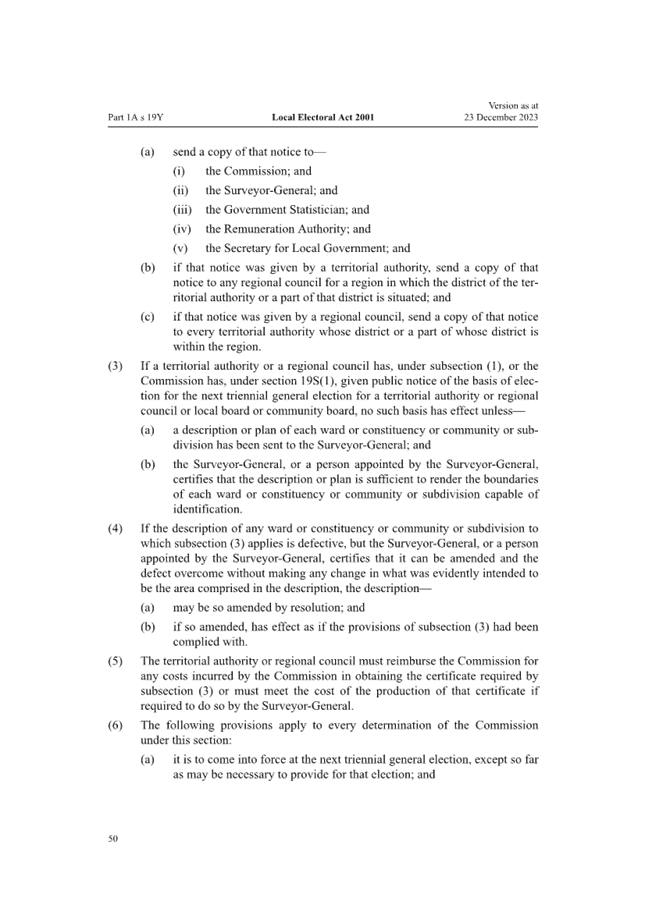
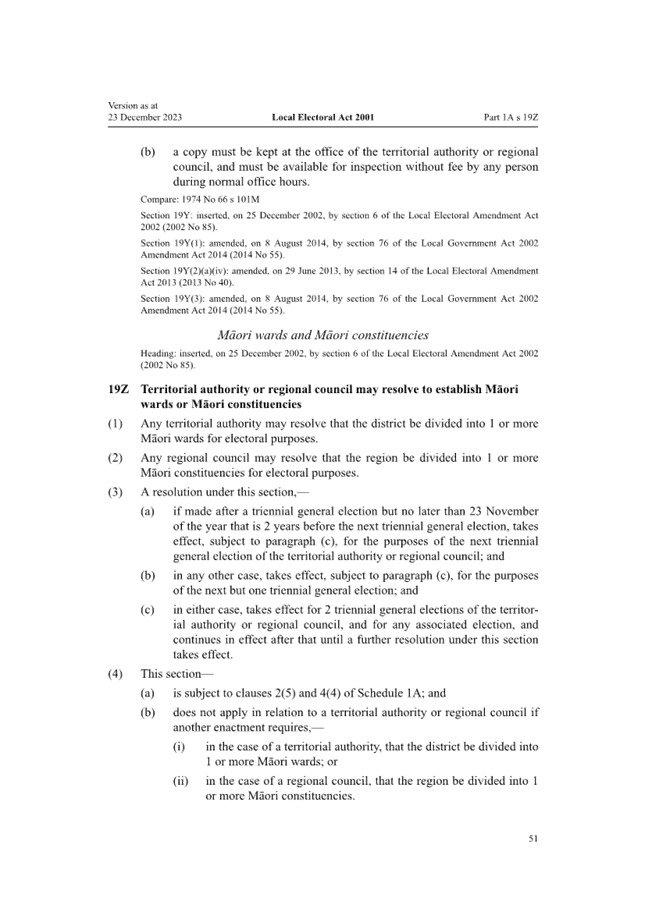
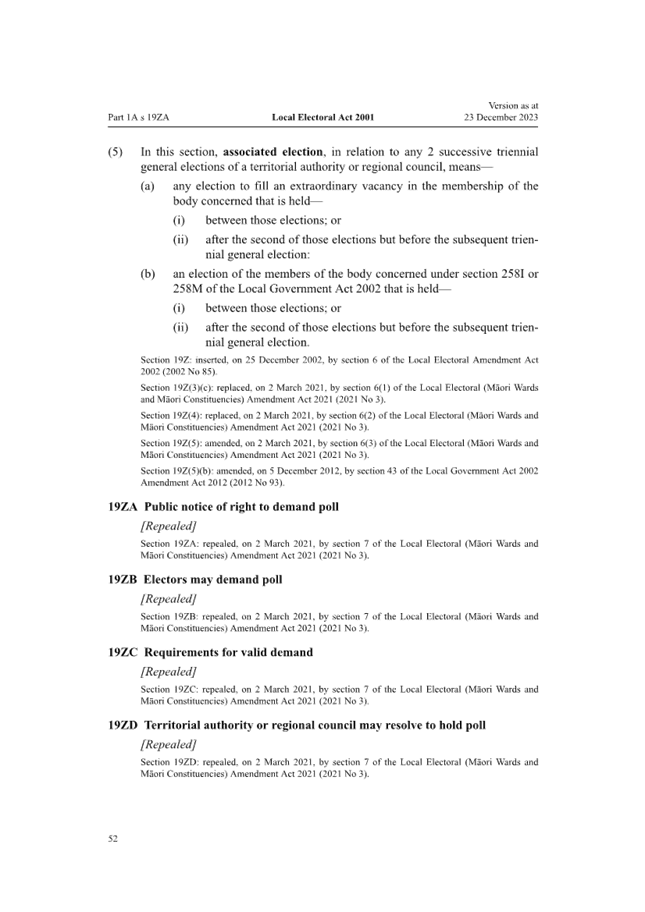
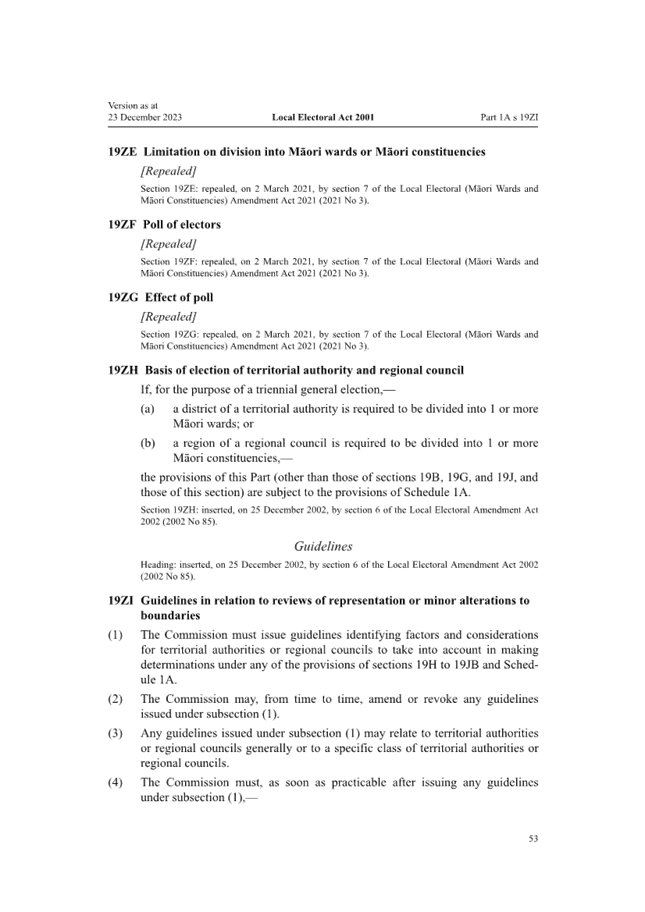
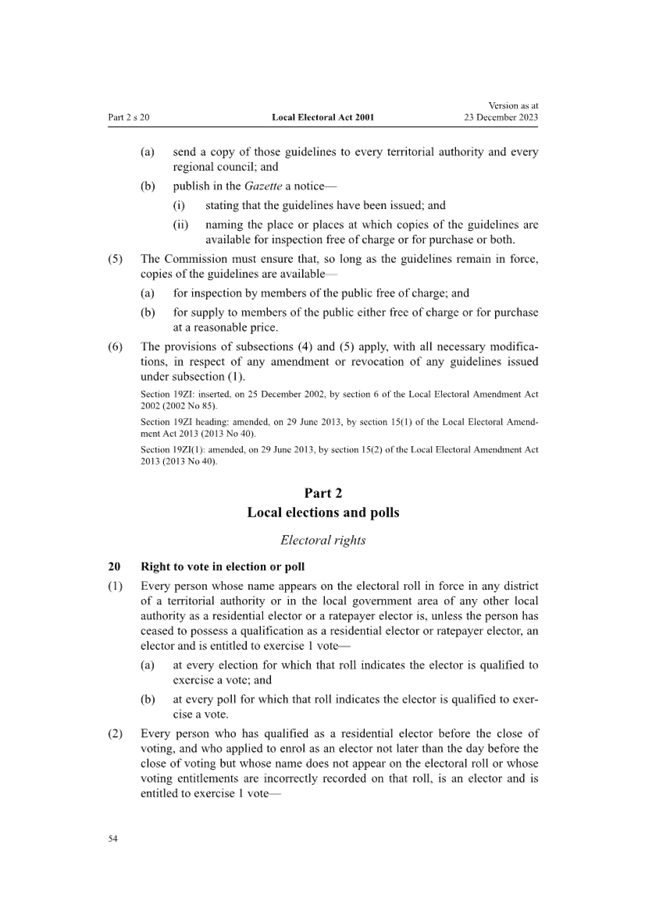
|
Council Meeting Agenda
|
31 October 2024
|

|
Council Meeting Agenda
|
31 October 2024
|
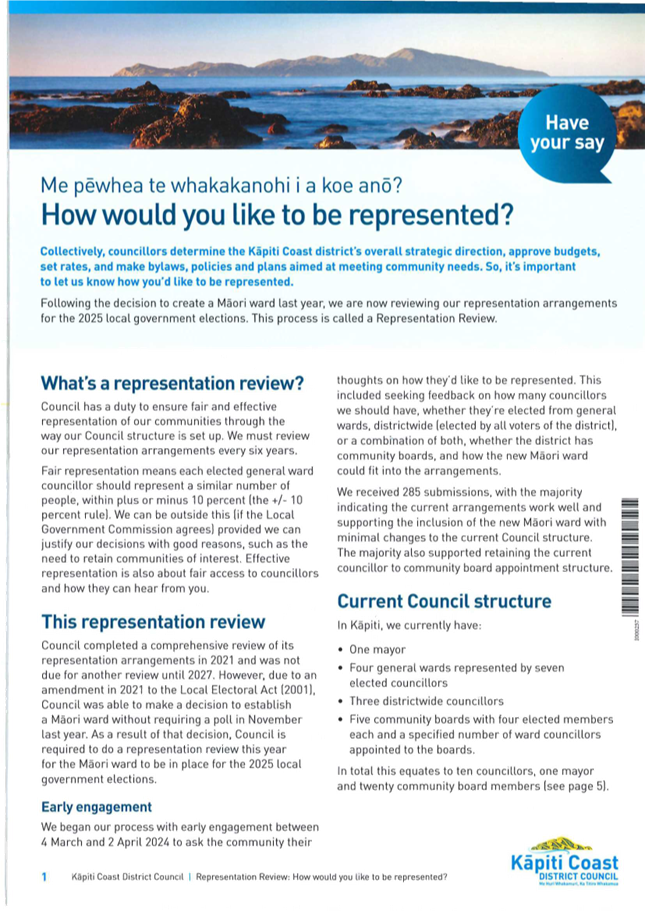
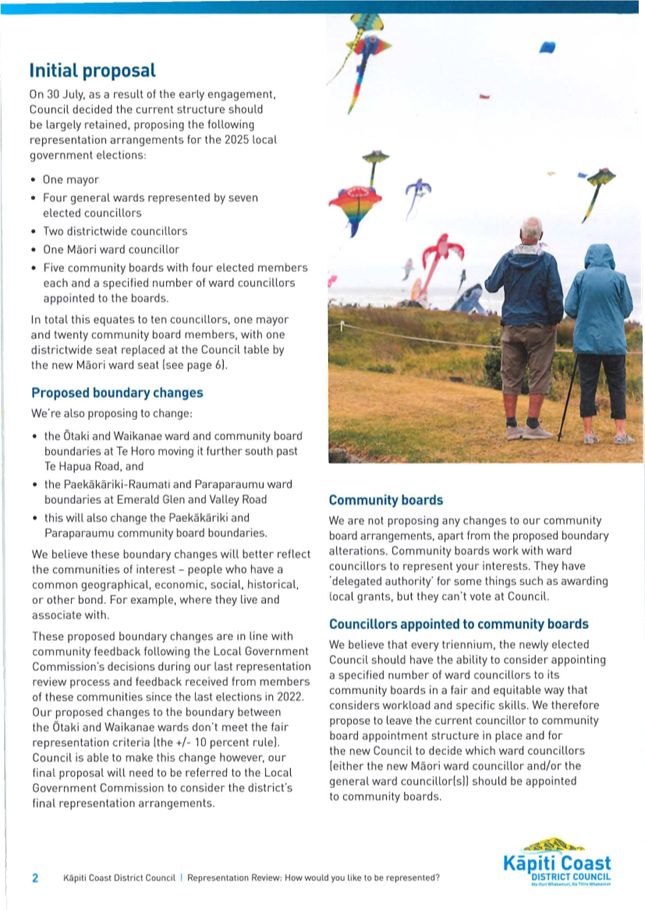
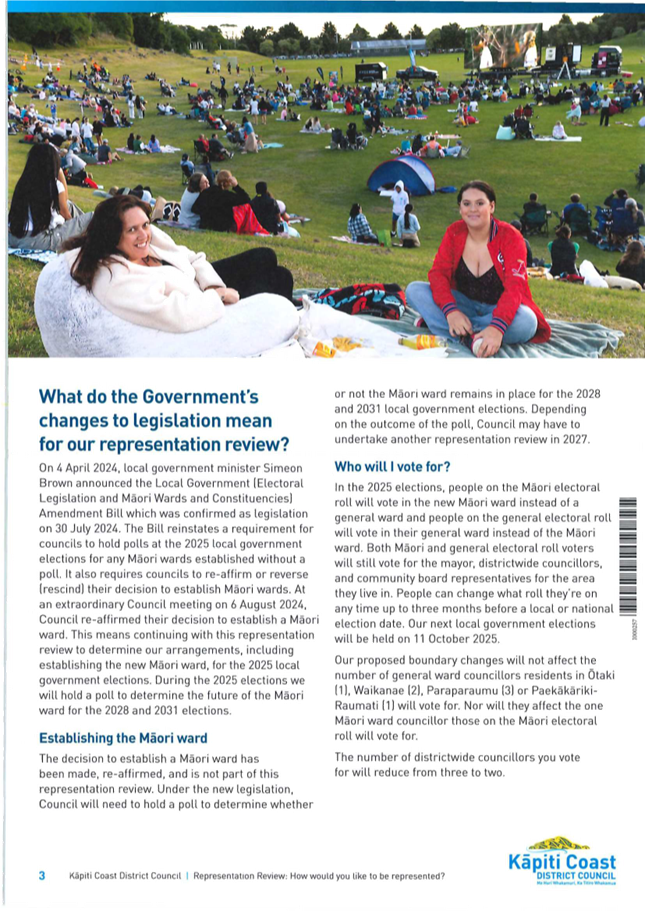
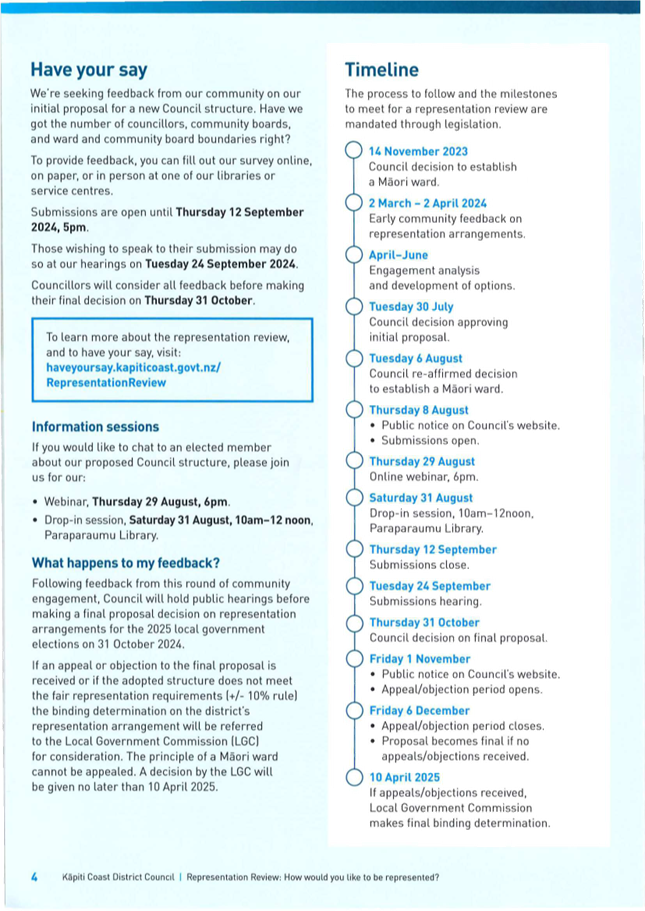
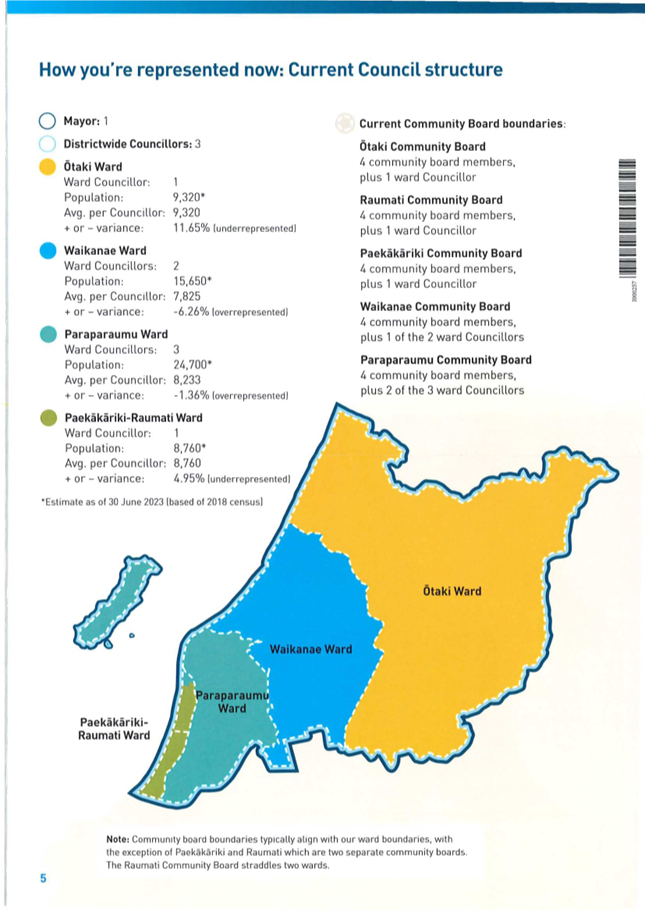
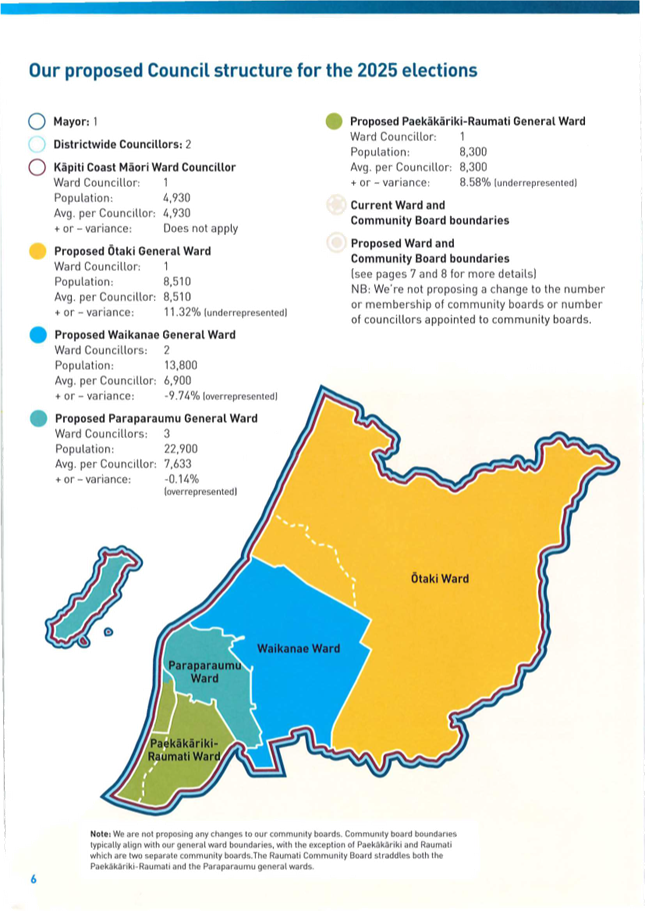
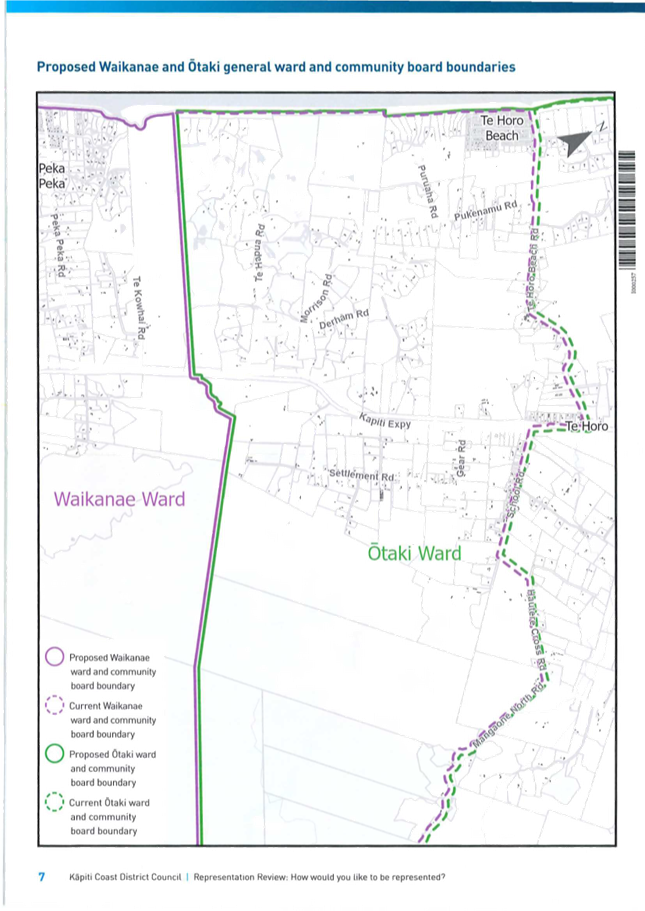
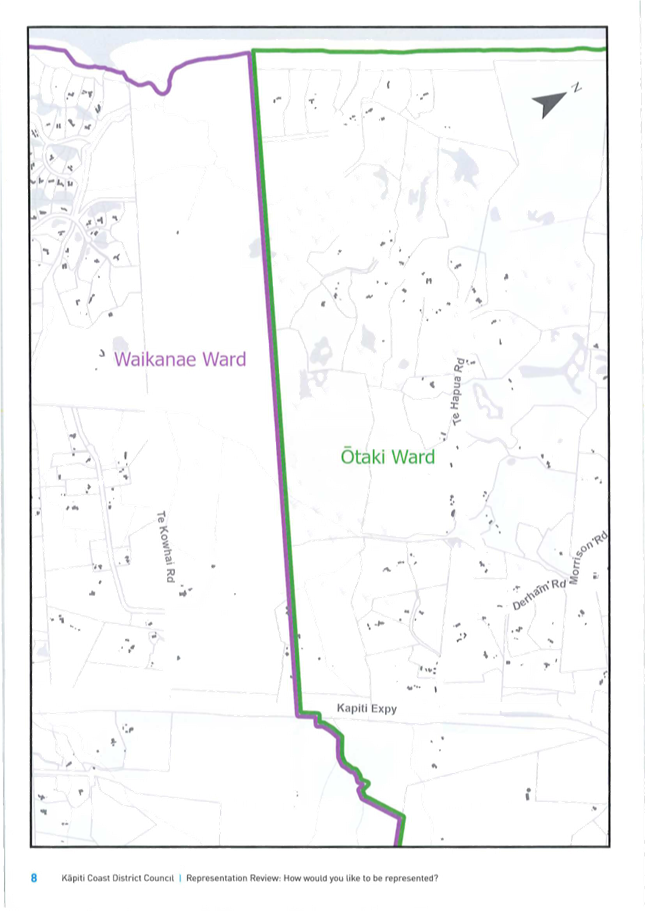

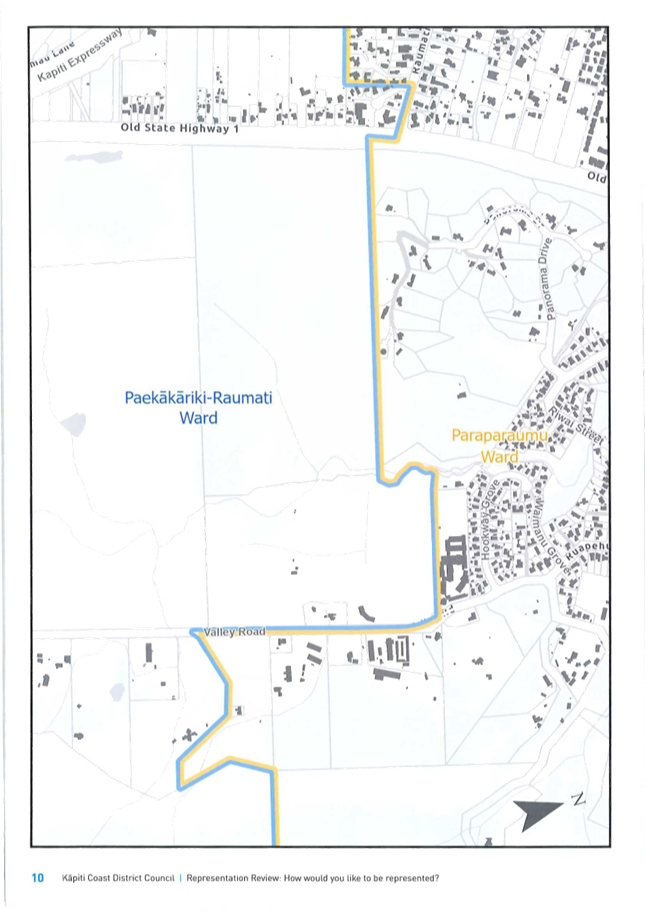
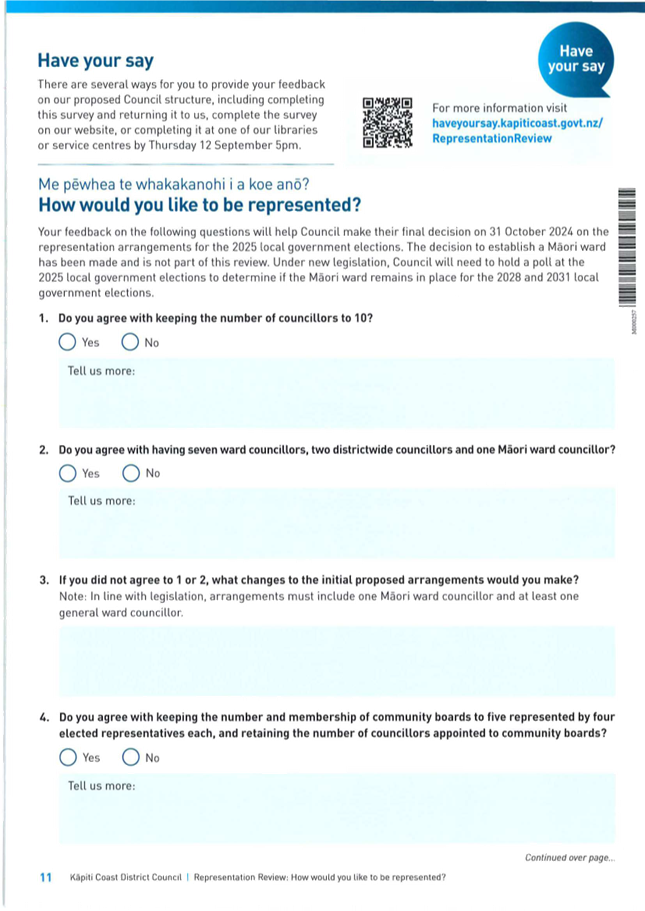
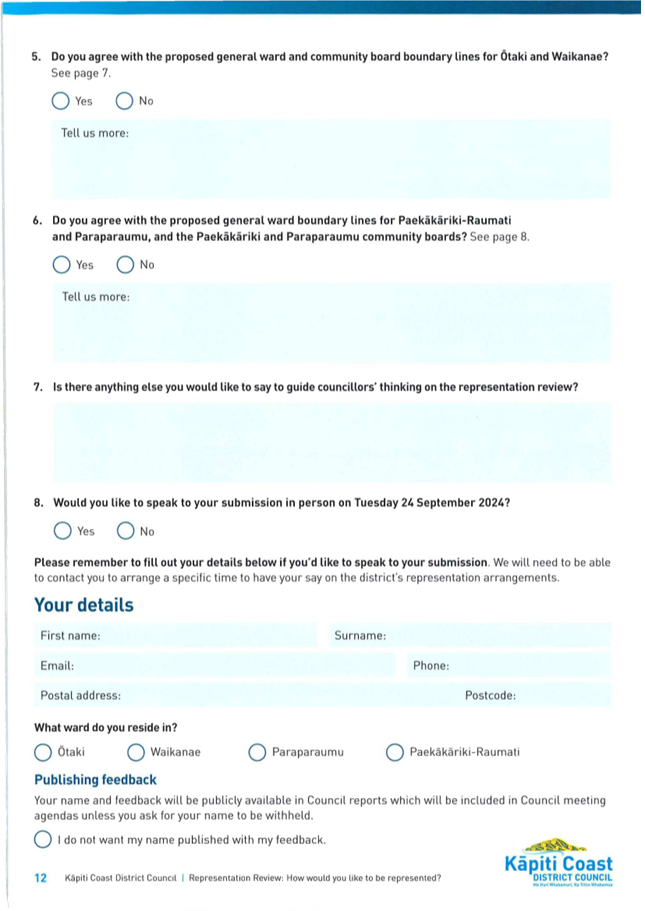
|
Council Meeting Agenda
|
31 October 2024
|
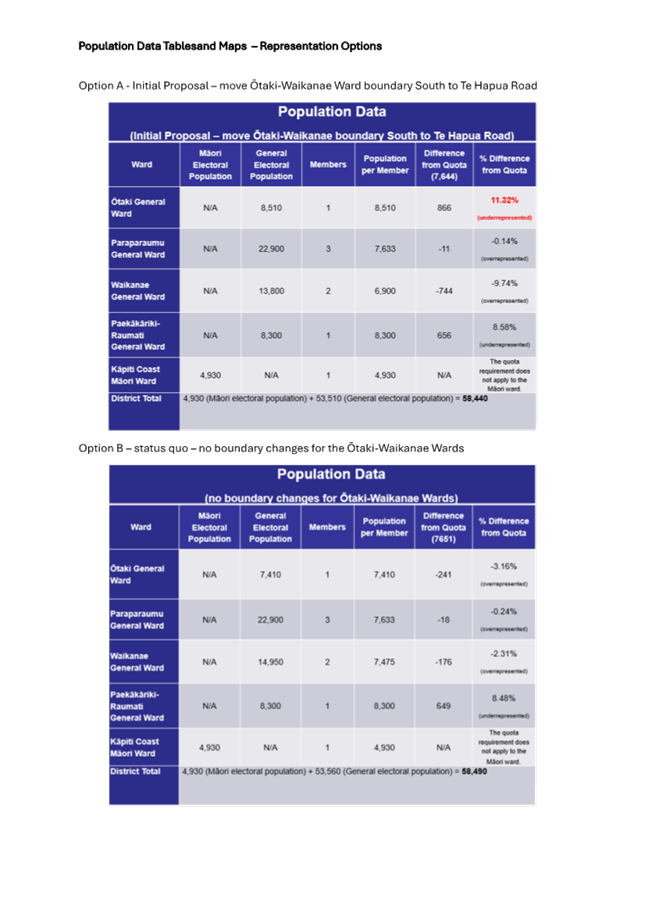
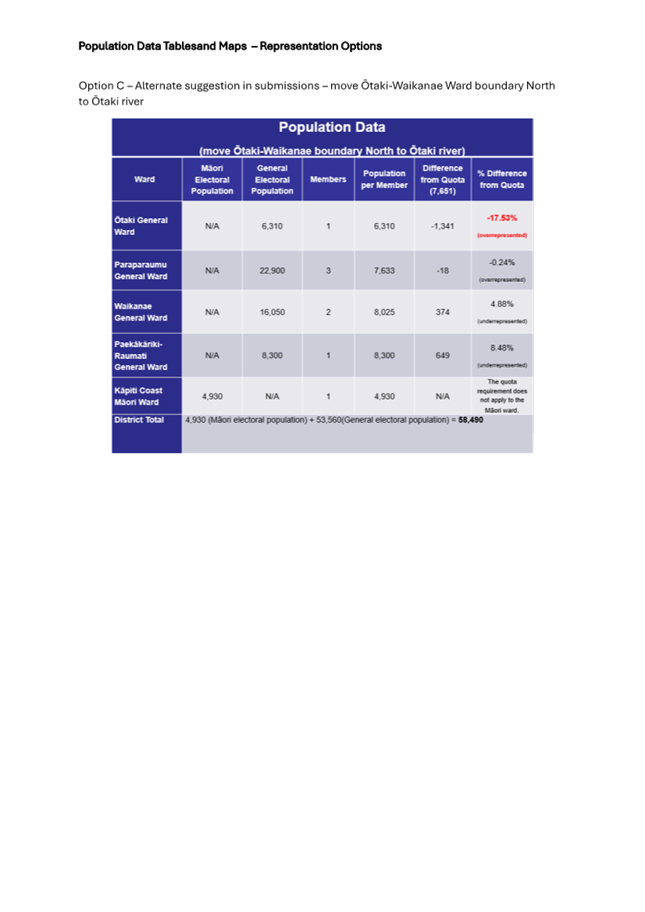


|
Council Meeting Agenda
|
31 October 2024
|
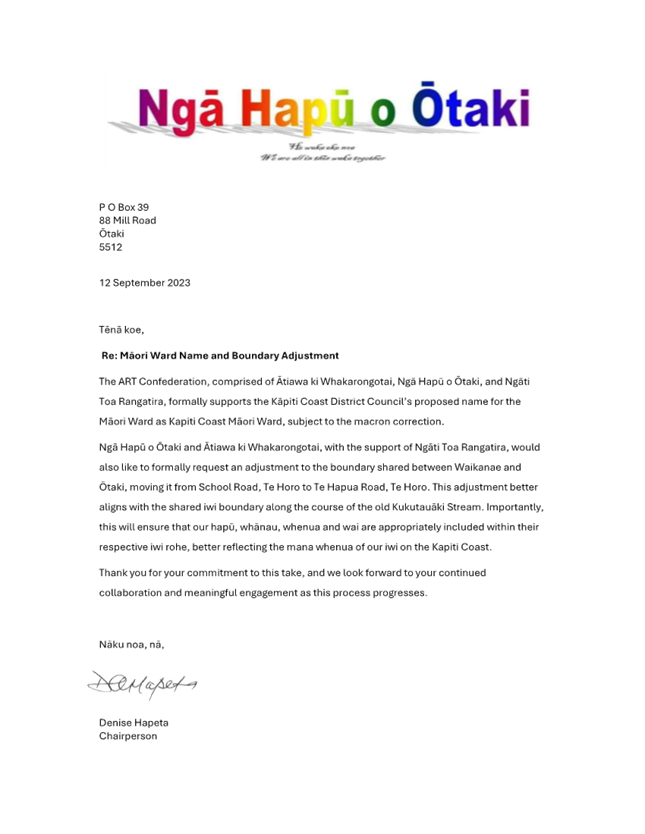
|
Council Meeting Agenda
|
31 October 2024
|
10.3 Waikanae Property Fund
Kaituhi |
Author: Morag
Taimalietane, Principal Advisor Customer and Community
Kaiwhakamana
| Authoriser: Brendan Owens, Group Manager Customer and
Community
Te pūtake |
Purpose
1 This
report provides options for projects the Waikanae Property Fund could be used
to fund in the 2024/25 financial year, ensuring these projects are based in the
Waikanae Ward and are occurring on Council-owned properties.
He
whakarāpopoto | EXecutive summary
2 The
Waikanae Property Fund (the Fund) is a restricted equity reserve created for
the purpose of funding improvements to Council-owned properties in Waikanae.
3 The
Fund is currently the only ward specific property fund and has not been used in
recent years.
4 There
is currently $154,000 capex remaining in the Fund, and this report focuses on
options for projects the Waikanae Property Fund could be used to fund in the
2024/25 financial year (FY 2024/25), with the intention of disestablishing the
Fund this financial year.
Te tuku haepapa
| Delegation
5 Council
has delegated authority to consider this under section A of the 2022-2025
Triennium Governance Structure and Delegations.
Taunakitanga | RECOMMENDATIONS
A. That
Council note the projects that are supported by the Waikanae Community Board
for use of funding from the Waikanae Property Fund.
B. That
Council approve the use of funding from the Waikanae Property Fund in
accordance with:
B.1 Option
A
B.2 Option
B
B.3 Option
C
B.4 Option
D
C. That
Council approve the disestablishment of the Waikanae Property Fund, following
the full utilisation of funding as agreed through recommendation B.
Tūāpapa | Background
6 The
Waikanae Property Fund is a restricted equity reserve created for the purpose
of funding improvements to Council-owned properties in Waikanae. The source of
the Fund is the proceeds from the sale of other Council property in the
Waikanae ward (excluding districtwide funded properties).
7 The
Fund, which totalled $189,000 capex for FY 2024/25, is currently the only ward
specific property fund and has not been used in recent years.
8 At
the Council hui on 27 June 2024, the ‘Reports and Recommendations from
Committees and Subcommittees’ paper included a recommendation from the
Waikanae Community Board to allocate $35,000 of the total $189,000 to assist
with the cost of installing a playground at the Reikorangi Hall.
9 A
recommendation was also included in the 27 June 2024 paper, that requested
Council officers investigate the possibility of delegating the authority to
administer and disburse the Waikanae Property Fund to the Waikanae Community
Board by providing the Mayor with advice on the options.
10 The
‘Reports and Recommendations from Committees and Subcommittees’
paper was left to lie on the table, with no further work undertaken by Council
staff on the report’s recommendations.
11 However,
while no further work was undertaken by Council staff on the report
recommendations, Council was provided with further contextual information about
the Waikanae Property Fund during a briefing on 23 July 2024.
12 This
briefing included background information about the Fund, thoughts about an
approach going forward for the use and proposed disestablishment of the Fund in
FY 2024/25, and potential projects in Waikanae which the Fund could be used to
support (additional to the playground at the Reikorangi Hall).
13 At
the Council hui on 25 July 2024 the ‘Reports and Recommendations from
Committees and Subcommittees’ paper consideration continued, resulting in
the Council approving a Waikanae Property Fund grant to the Reikorangi
Residents’ Association of $35,000 to assist with the cost of playground
equipment and installation at the Reikorangi Hall.
14 Therefore,
with $154,000 capex remaining in the fund, this report is focused on options
for projects the Waikanae Property Fund could be used to fund in FY 2024/25.
He
kōrerorero | Discussion
15 Council
owns many properties in the Waikanae ward, however to enable the utilisation of
the Fund in FY 2024/25, the scope was narrowed to only consider properties
where Council has projects / initiatives included in planning or underway and:
· the project /
initiative supports our top 10 priorities; and
· the project would
benefit from additional capex funding in FY 2024/25.
16 A
benefit, as noted above, included considerations such as (but not limited to):
· the project is
underway and currently overbudget.
· the project has
been approved by the Senior Leadership Team but is unable to progress due to a
lack of available funding in FY 2024/25.
· the projects
positive outcomes would be notably increased by additional funding.
Waikanae
Community Board
17 The
Fund has been discussed with the Waikanae Community Board (WCB) at two hui, on
20 August 2024 and 24 September 2024.
18 At
the 20 August hui, a report was presented to the WCB which outlined three
potential projects for consideration. These were:
18.1 Public
Toilets - Waikanae Boating Club: There is a requirement for new public toilets
to be installed this financial year. The installation was not planned, and
therefore was unbudgeted with a shortfall of funding totalling approximately
$180k.
18.2 Te
Ara Whetū: Te Ara Whetū is a key project within the Waikanae Town
Centre. Additional funding could be used to enable opportunities that
improve the integration of Te Ara Whetū to Mahara Place and support the
activation of Mahara Place.
18.3 Waikanae
Park – Stage Two: Council currently has a helicopter view of the future
Waikanae Park development. Additional funding would provide an
opportunity to bring forward stage two (feasibility and more detailed design
planning for the precinct).
19 After
considering the report, the Waikanae Community Board resolutions state:
19.1 That
the Waikanae Community Board does not support any of the three projects
noted in the report.
19.2 That
the Waikanae Community Board supports using the Waikanae Property Fund
for the Waikanae Beach Tennis and Basketball Court upgrade.
20 Using
the direction provided by the WCB, Council staff undertook a costing exercise
for the upgrade of the Waikanae Beach Tennis and Basketball Court, which was
estimated at $20,000. Therefore, if this was approved by Council, there would
still be $134,000 remaining in the Fund.
21 A
second report was presented to the WCB on 24 September 2024, which provided
additional options (including the Waikanae Beach Tennis and Basketball Court
resurfacing as noted above) for the WCB to consider with regard to the use of
the Fund. These were:
21.1 Court
Resurfacing - Two court areas within Waikanae would benefit from resurfacing,
total estimated cost $60,000
· Waikanae Beach
Tennis and Basketball Court – $20,000
· Waikanae Memorial
Tennis Court, which would include resurfacing plus additional markings to
include netball and pickleball courts – $40,000
21.2 Additional
funding for Reikorangi Playground - $25,000
· To support further
earthworks and supplying safety surface (bark) for the new playground (above
the $35,000 already allocated).
22 The
two options above totalled $85,000, with Council officers recommending that the
remaining $69,000 be used to support the completion of the new public toilets
by the Waikanae Boating Club.
23 After
considering the report, the Waikanae Community Board resolutions state:
23.1 That
the Waikanae Community Board support Option A – $60,000 to enable court
resurfacing of the Waikanae Beach Tennis and Basketball Court and the Waikanae
Memorial Hall Tennis Courts.
23.2 That
the Waikanae Community Board support Option B - $25,000 additional funding for
Reikorangi Playground to enable further earthworks and supplying safety
surface.
23.3 The
Waikanae Community Board support any remaining funds be used for improving
community amenities at both the Waimeha Domain, and the Waikanae township.
24 Therefore,
the projects stated in paragraph 23 above are the projects that are supported
by the Waikanae Community Board for use of the remaining $154,000 funding
through the Waikanae Property Fund.
25 The
Waikanae Community Board clearly re-stated during the hui that they did not
support the Fund being used for the completion of the new public toilets by the
Waikanae Boating Club, as per their resolution at the WCB 20 August 2024 hui.
He
take | Issues
26 While
discussions have been had with the Waikanae Community Board about their
preferences for how they would like the Fund to be utilised, the delegation for
decisions around the Waikanae Property Fund currently sits with Council, and
therefore this report to Council is required to enable approval of any grant
from the Fund.
Ngā
kōwhiringa | Options
27 The
table below provides several options for Council’s consideration with
regards to how the Waikanae Property Fund could be utilised to support funding
improvements to Council-owned properties in Waikanae.
Table 1: Table Name
|
Kōwhiringa |
Options
|
Hua | Benefits
|
Tūraru | Risks
|
|
Option A (recommended)
|
|
Supported by the Waikanae Community Board.
All projects able to be progressed in FY 2024/25.
Projects spread across three Waikanae communities (beach,
township and Reikorangi).
|
Opex and renewal costs for Reikorangi Playground not
included in future budgets.
|
|
Waikanae Court Resurfacing
|
$60,000
|
|
Additional Funding for Reikorangi Playground
|
$25,000
|
|
Improvement of community amenities at both the Waimeha
Domain, and the Waikanae township
|
$69,000
|
|
Total
|
$154,000
|
|
Option B
|
|
All projects able to be progressed in FY 2024/25.
Projects spread across three Waikanae communities (beach,
township and Reikorangi).
|
Opex and renewal costs for Reikorangi Playground not
included in future budgets.
Not all projects supported by the Waikanae Community
Board.
|
|
Waikanae Court Resurfacing
|
$60,000
|
|
Additional Funding for Reikorangi Playground
|
$25,000
|
|
Public Toilets - Waikanae Boating Club
|
$69,000
|
|
Total
|
$154,000
|
|
Option C
|
|
Total funding amount provided to any of the three projects
would enable progress in FY 2024/25.
|
Projects not supported by the Waikanae Community Board.
If funding spread across projects, amount of funding may
not be sufficient to allow significant progress in 2024/25.
Reikorangi Playground may not progress / pace of progress
may be impacted without additional funding support from Council.
|
|
Public Toilets - Waikanae Boating Club
|
|
|
Te Ara Whetū – integration with, and activation
of, Mahara Place
|
|
|
Waikanae Park – Stage two (feasibility and more
detailed design)
|
|
|
Total
Funding allocation for projects within this option to
be discussed and agreed at the Council hui, if this is Council’s
preferred option to progress.
|
$154,000
|
|
Option D
No projects are progressed, with further time taken to
consider the best utilisation of the Waikanae Property Fund.
|
|
No benefits provided to the Waikanae community through the
Waikanae Property Fund.
|
Mana whenua
28 Mana
whenua were not specifically consulted for this report.
Panonitanga Āhuarangi me te Taiao | Climate change
and Environment
29 There
are no specific climate change and environment considerations arising from this
report.
Ahumoni me ngā rawa | Financial
and resourcing
30 While
Council has previously provided financial support through the Waikanae Property
Fund to enable progress of the Reikorangi Playground, the ongoing operational
and renewal costs for Council acquiring an additional playground are not
included in future budgets. These will need to be included through an upcoming
annual or long-term plan.
31 All
other projects proposed can be undertaken within current resource and budget.
32 If
the Council fully utilises the funding available from the Waikanae Property
Fund, and agrees to disestablish the Fund, the council’s Finance team
will undertake the necessary steps to permanently disestablish the Waikanae
Property Fund.
Tūraru ā-Ture me te Whakahaere
| Legal and Organisational Risk
33 There
are no legal or risk considerations relevant to this report.
Ngā pānga ki ngā kaupapa here | Policy impact
34 There
are no policy considerations arising from this report.
TE whakawhiti kōrero me te
tūhono | Communications &
engagement
Te mahere tūhono | Engagement planning
35 An
engagement plan is not needed to implement this decision. Council will
communicate this decision through its established communication
channels.
Whakatairanga |
Publicity
36 Council will
use its established communications channels to inform the community of this
decision and to explain the rationale for why it made this decision.
Ngā āpitihanga | Attachments
Nil
|
Council Meeting Agenda
|
31 October 2024
|
10.4 Reports and
Recommendations from Community Boards
Kaituhi |
Author: Evan
Dubisky, Advisor Governance
Kaiwhakamana
| Authoriser: Mark de Haast, Group Manager Corporate Services
Te pūtake | Purpose
1 This
report presents items considered and recommendations made to Council by
community boards between 17 August 2024 and 24 September 2024.
He
whakarāpopoto | EXecutive summary
2 Council
has received three recommendations from the Waikanae Community Board to
consider:
2.1 working
with the Waimanu Lagoons Focus Group to resolve the issues with the Waimanu
Lagoon Weir.
2.2 reviewing
the categorisation of the Waikanae Gymnastics Club from Category A to Category
C for the calculation of room hire charges.
2.3 addressing the implementation of the
Pop-Up space by 1 December 2024.
Te tuku
haepapa | Delegation
3 In
line with Council’s Governance Structure and Delegations 2022-2025, Council
has the authority to consider recommendations made by community boards and
provide direction to Council officers to action these recommendations.
Taunakitanga | RECOMMENDATIONS
A. That
Council receives this report.
B. That
Council notes the three recommendations from the Waikanae
Community Board meeting of 20 August 2024:
B.1 That
the Waikanae Community Board recommends to Council to work with the Waimanu
Lagoons Focus Group to resolve the issues with the Waimanu Lagoon Weir.
B.2 That
the Waikanae Community Board recommend to Council to review the categorisation
of the Waikanae Gymnastics Club from Category A to Category C for the
calculation of room hire charges.
B.3 That the Waikanae Community
Board recommend to Council to address the implementation of the Pop-Up space by
1 December 2024.
C. That Council notes:
C.1 That
Council officers are progressing the recommendations relating to the
Waimanu Lagoon Weir and the pop-up space, and
C.1 That
the recommendation regarding the Waikanae Gymnastics Club does not align with
the current room hire framework, as it does not include categories for users,
and a review will not be conducted as a result.
Tūāpapa |
Background
4 During
the period of 17 August 2024 to 24 September 2024, the following community
board meetings took place:
|
Waikanae Community Board
|
Tuesday, 20 August 2024
|
|
Ōtaki Community Board
|
Tuesday, 27 August 2024
|
|
Paekākāriki Community
Board
|
Tuesday, 3 September 2024
|
|
Paraparaumu Community Board
|
Tuesday, 10 September 2024
|
|
Raumati Community Board
|
Tuesday, 17 September 2024
|
|
Waikanae Community Board
|
Tuesday, 24 September 2024
|
5 The
following items were discussed at each of the meetings:
5.1 On
Tuesday, 20 August 2024 the Waikanae Community Board met to
discuss:
· Update on 56-65 Main Road, Waikanae
· Waikanae Property Fund
· Consideration of Applications for Funding
· Amendment to Standing Orders for Meetings of the Waikanae Community
Board
· Matters Under Action
5.2 On
Tuesday, 27 August 2024 the Ōtaki Community Board
met to discuss:
· Amendment to Standing Orders for Meetings of the Ōtaki
Community Board
· Consideration of Applications for Funding
· Matters Under Action
5.3 On Tuesday, 3
September 2024 the Paekākāriki Community Board met to discuss:
· Consideration of Applications for Funding
· Matters Under Action
5.4 On Tuesday, 10
September 2024 the Paraparaumu Community Board met to discuss:
· Amendment to Standing Orders for Meetings of the Paraparaumu
Community Board
· Consideration of Applications for Funding
5.5 On Tuesday,
17 September 2024 the Raumati Community Board met to discuss:
· Deputation
from Ōtaki Community Board
· Emergency
Management Update – The Community Approach
· Consideration
of Applications for Funding
· Matters
Under Action
5.6 On Tuesday,
24 September 2024 the Waikanae Community Board met to discuss:
· Matters
of an Urgent Nature
· Emergency
Management Update – The Community Approach
· Waikanae
Property Fund
· Draft
Calendar of Meetings 2025
· Consideration
of Applications for Funding
· Matters
Under Action
He
kōrerorero | Discussion
He take |
Issues
6 The Waikanae
Community Board made three recommendations to Council at their meeting on 20
August 2024. The other four community boards made no recommendations between 17
August 2024 and 24 September 2024.
7 At
the Waikanae Community Board meeting on Tuesday, 20 August 2024, the board made
three recommendations to Council:
7.1 That the Waikanae Community
Board recommends to Council to work with the Waimanu Lagoons Focus Group to
resolve the issues with the Waimanu Lagoon Weir.
7.2 That the Waikanae Community
Board recommend to Council to review the categorisation of the Waikanae
Gymnastics Club from Category A to Category C for the calculation of room hire
charges.
7.3 That the Waikanae Community Board
recommend to Council to address the implementation of the Pop-Up space by 1
December 2024.
Waimanu Lagoon Weir
8 A
weir provides for the effective management of water levels within a lagoon.
Council officers have met with representatives of the Waimanu Lagoon Focus
Group and agreed on a course of action to return the weir to effectively
managing water levels. Further investigative work is required to determine the
extent of the repair works needed. At this stage an accurate timeframe for the
works cannot be provided but once the investigative work is completed, Council
officers will liaise with the focus group on an updated work program and
timeline.
Waikanae Gymnastics Club
9 When
considering the Long-term Plan earlier this year, Council decided against an
increase in charges of hall fees and the introduction of fees categories for
users. This means a review of the user category for the Waikanae Gymnastics
Club cannot be conducted.
Waikanae
Pop-up Space
10 On
5 September 2024, elected members were briefed on the exploratory work underway
in relation to the pop-up space in Waikanae. Elected members will be briefed on
next steps and to confirm implementation timeframes once further exploratory
work has taken place.
Ngā
kōwhiringa | Options
11 There
are no options in addition to those already discussed in this report.
Mana whenua
12 Mana whenua
have not been consulted in relation to this report.
Panonitanga āhuarangi | Climate change and Environment
13 There
are no direct climate change and environment considerations in relation to this
report. Some of the actions that will be taken as a result of the
recommendations concerning the weir will have environmental impacts, but this
has not been explored as part of this report.
Ahumoni me
ngā rawa | Financial and resourcing
14 There
are no direct financial considerations resulting from the recommendations in
this report.
Ture me
ngā Tūraru | Legal and risk
15 There
are no direct legal or risk considerations relevant to this report.
Ngā pānga ki ngā
kaupapa here | Policy impact
16 There
are no direct policy impacts relevant to this report. .
TE whakawhiti kōrero me te tūhono | Communications & engagement
Te mahere tūhono | Engagement planning
17 An engagement plan is not
required for this report.
Whakatairanga | Publicity
18 The
decision made in this report will be publicly available through Council’s
standard communications channel.
Ngā
āpitihanga | Attachments
Nil
|
Council Meeting Agenda
|
31 October 2024
|
10.5 Amendments to Council
Delegations to Staff
Kaituhi |
Author: Sarah
Wattie, General Counsel
Kaiwhakamana
| Authoriser: Mark de Haast, Group Manager Corporate Services
Te pūtake | Purpose
1 This
report seeks Council’s consideration and approval of amendments to
Council delegations to Staff, including changes to the Resource Management Act
1991 delegations.
He
whakarāpopoto | EXecutive summary
2 An
executive summary is not required.
Te tuku
haepapa | Delegation
3 Council
has the authority to consider this matter. Clause 32, Schedule 7 of the Local
Government Act 2002 empowers the Council to delegate its responsibilities,
duties and powers in accordance with the restrictions set out in this
provision.
Taunakitanga | RECOMMENDATIONS
A. That
Council Adopts the amended sections to ‘Council Delegations to
Chief Executive and Staff’ as shown in Attachment 1 to the report
‘Amendments to relevant sections of Council Delegations to Chief
Executive and Staff’.
B. That
Council Adopts the amended Resource Management Act 1991 delegations to staff
as shown in Attachment 2 to the report ‘Amendments to Council to Staff
RMA Delegations’.
Tūāpapa |
Background
4 The
purpose of local government under clause 10(1) of the Local Government Act 2002
is to enable democratic local decision-making and action by, and on behalf of,
communities; and to promote the social, economic, environmental, and cultural
well-being of communities in the present and for the future. Legislative
compliance with central Government’s legislative and regulatory programme
supports Council to do this in a fair and efficient manner.
5 Council
has a range of legislative functions, duties and powers. It is not always
efficient or practical for elected members to carry out all of these functions,
duties and powers, which is reflected in various statutes that provide Council
with the legal authority to delegate to Council staff. Delegated authority
allows for administrative efficiency and ensures timeliness in the conduct of
Council’s daily business.
6 In
particular, Council has the authority to delegate to officers under clause 32
of Schedule 7 of the Local Government Act 2002. Clause 32 of the Local
Government Act 2002 also sets out certain powers that cannot be
delegated as follows:
“32.
Delegations‒ (1) Unless expressly provided otherwise in this Act, or in
any other Act, for the purposes of efficiency and effectiveness in the conduct
of a local authority's business, a local authority may delegate to a committee
or other subordinate decision-making body, community board, or member or
officer of the local authority any of its responsibilities, duties, or powers
except‒
(a) the
power to make a rate; or
(b) the
power to make a bylaw; or
(c) the
power to borrow money, or purchase or dispose of assets, other than in
accordance with the long-term plan; or
(d) the
power to adopt a long-term plan, annual plan, or annual report; or
(e) the
power to appoint a chief executive; or
(f) the power to
adopt policies required to be adopted and consulted on under this Act in
association with the long-term plan or developed for the purpose of the local
governance statement.
(h the power to adopt a remuneration and
employment policy.”
7 Most
legislation provides the Chief Executive with the discretion to sub-delegate to
Council staff. However, some Acts prescribe the way delegations must be made. For
example, section 34A of the Resource Management Act 1991 (RMA) provides local
authorities with the power to delegate to an employee any functions, powers, or
duties under these Acts however, they prohibit the power to sub-delegate and
therefore these delegations must be approved by Council.
8 The
Council’s delegations to Chief Executive and staff are monitored on a
regular basis and reported back to Council for amendment as required, in
response to changes in either staff or legislation.
He
kōrerorero | Discussion
9 This
report proposes amendments to Council delegations to the Chief Executive and
Staff and Resource Management Act 1991 delegations to give effect to
recommendations from staff.
He take | Issues
organisational Structure Change
Process
10 As
of 29 October 2024, certain staff roles and titles have changed as part of an
organisational structure change process. As such, amendments are required to
the COVID-19 Recovery (Fast-track Consenting) Act 2020 delegations in the Council
Delegations to Chief Executive to Staff.
11 These changes are highlighted in Council Delegations to
Chief Executive to Staff in Attachment 1.
Resource Management Act 1991 (RMA) Delegations
12 Amendments
are also required to Council’s delegations to staff under the RMA as part
of the change process referred to in paragraph 10. These amendments are set out
in the table overleaf and highlighted in detail in Council to Staff RMA
Delegations in Attachment 2.
|
Recommended amendments to Council delegations
to staff under
the Resource Management Act 1991
|
|
Roles affected as
part of the organisational structure
process change
|
|
Affected Positions
|
Amendments to RMA
delegations
|
|
Group Managers
|
|
Group Manager Customer and Community
|
Position requires additional RMA for
managing the Environmental Standards and Customer Experience teams.
|
|
Group Manager Infrastructure and Asset Management
|
Position requires additional RMA for
managing the Development Management team.
|
|
Group Manager Regulatory and Environment
|
Position has been disestablished.
|
|
Group Manager Strategy and Growth
|
Position requires additional RMA for
managing the Resource Consents team.
|
|
Other roles
|
|
Chief Advisor Strategy and Growth and Principal Advisor
Strategy and Growth
|
Positions require additional RMA to
support the Group Manager Strategy and Growth.
|
|
Investigations, Monitoring and Compliance Officer
|
Position requires RMA to support the Compliance and
Compliance and Monitoring Officers.
|
|
Manager Emergency Management
|
Position requires RMA to align with
Infrastructure and Asset Management group.
|
|
Manager Environmental Standards
|
Position requires additional RMA for
managing the Compliance and Monitoring Officers.
|
|
Manager Resource Consents
|
Replacement title for Manager Resource Consents and
Compliance. The RMA delegations remain the same
for this role.
|
|
Principal Advisor Customer and Community
|
Position requires additional RMA to
support the Group Manager Customer and Community.
|
|
Principal Advisor Infrastructure and Asset Management
|
Position requires RMA to support the Group
Manager Infrastructure and Asset Management.
|
|
Principal Advisor Regulatory and Environment
|
Position has been disestablished.
|
|
Team Leader Compliance
|
Position requires RMA to support the Compliance and
Compliance and Monitoring Officers.
|
|
Team Leader Environmental Health and Licensing
|
Replacement title for Team Leader Environmental Health,
Licensing and Compliance. The RMA delegations remain
the same for this role.
|
13 Further
RMA amendments relate to changes in roles or titles outside the organisational
structure change as clarified in the table below and highlighted in detail in Council
to Staff RMA Delegations in Attachment 2.
|
Recommended amendments to Council delegations
to staff under
the Resource Management Act 1991
|
|
Advisor Legal Compliance and Complaints
|
Replacement title for Advisor Legal
Support Services and Official Information. The RMA delegations remain
the same for this role.
|
|
General Counsel
|
Replacement title for Manager
Governance and Legal Services. The RMA delegations remain the same
for this role.
|
|
Manager Customer Experience
|
Position requires RMA to support team
members with RMA.
|
|
Manager Legal Compliance and Complaints
|
Replacement title for Team Leader Legal
Support Services and Official Information. The RMA delegations remain
the same for this role.
|
|
Manager Iwi Partnerships
|
Position requires RMA under the
Enforcement and Compliance Policy to support the Enforcement Decision Group
decision-making.
|
|
Manager Utilities Infrastructure
|
Position no longer requires RMA.
|
|
Principal Advisor Iwi Partnerships
|
Position requires RMA under the
Enforcement and Compliance Policy to support the Enforcement Decision Group
decision-making.
|
|
Principal Advisor Recovery Lead
|
Position requires RMA to support the
Strategy and Growth group.
|
|
Project Manager Stormwater and Coastal Assets
|
Replacement title for Projects
Manager Stormwater and Coastal Assets. The RMA delegations
remain the same for this role.
|
|
Senior Advisor Legal Compliance and Complaints
|
Replacement title for Senior Advisor
Legal Support Services and Official Information. The RMA delegations
remain the same for this role.
|
|
Senior Advisor Stormwater and Coastal Assets
|
New position requires RMA.
|
|
Stormwater and Coastal Asset Engineer
|
Replacement title for Stormwater and
Coastal Assets Engineer. The RMA delegations remain the same for
this role.
|
Local government (Rating) Act 2002
14 Staff
have recommended amendments to the Local Government (Rating) Act 2002
delegations as a result of an internal review of these delegations.
Plumbers, Gasfitters, and Drainlayers Act 2006
15 Staff
require access to the Register of Self-Contained Vehicles to obtain information
relating to the status of specific motor vehicles in regards to
self-containment and in order to update the Register if a motor vehicle has
been used in the commission of an offence under the Freedom Camping Act 2011.
Statutory Land Charges Registration Act 1928
16 The
Statutory Land Charges Registration Act 1928 was repealed, on 12 November 2018,
by section 248(2) of the Land Transfer Act 2017.
17 The changes outlined in paragraphs 14 to 16 are highlighted in the Council
Delegations to Chief Executive to Staff in Attachment
1.
18 The
above amendments are effective immediately, noting that titles and their
associated delegations that are listed as amended or replaced will stay in
effect until contracts have been signed for the amended or replacement positions.
Delegations for positions that have been ‘disestablished’ will
remain in place until affected contracts come to an end.
Ngā
kōwhiringa | Options
19 The
proposed options are set in paragraphs 10 through 18 of this paper.
Mana whenua
20 Where
responsibilities and powers are delegated to staff, staff will be required to
seek early input from Council’s Iwi Partnerships Group on matters that
are likely to impact on mana whenua or mana whenua interests. What is
appropriate in view of Council’s partnership with mana whenua and
legislative provisions will depend on the nature of the delegated
responsibility, duty or power. This report does not have direct implications on
Council’s partnership with mana whenua.
Panonitanga
Āhuarangi me te Taiao | Climate
change and Environment
21 There
are no climate change considerations triggered by this report.
Ahumoni me
ngā rawa | Financial and resourcing
22 There
is no direct financial impact from these changes to delegations.
Tūraru
ā-Ture me te Whakahaere |
Legal and Organisational Risk
23 This
paper has been reviewed by the Council’s General Counsel.
24 The
exercise of powers and functions by staff must adhere to legislative
requirements. Managers are responsible for ensuring legislative compliance in
the exercise of statutory powers in their area and are able to seek legal
advice where required.
Ngā pānga ki ngā
kaupapa here | Policy impact
25 Appropriate
delegations facilitate efficiency and effectiveness in the conduct of Council
business and assist staff to deliver on Council outcomes.
TE whakawhiti kōrero me te tūhono | Communications & engagement
26 This
decision has a low level of significance under the Council’s Significance
and Engagement policy.
Te mahere tūhono | Engagement planning
27 No
consultation or engagement is required relating to the process of making these
amendments.
Whakatairanga | Publicity
28 No
publicity is required for these minor amendments.
Ngā
āpitihanga | Attachments
1. Amendments
to relevant sections of Council Delegations to Chief Executive and Staff’
⇩ 
2. Amendments
to Council to Staff RMA Delegations ⇩ 
|
Council Meeting Agenda
|
31 October 2024
|
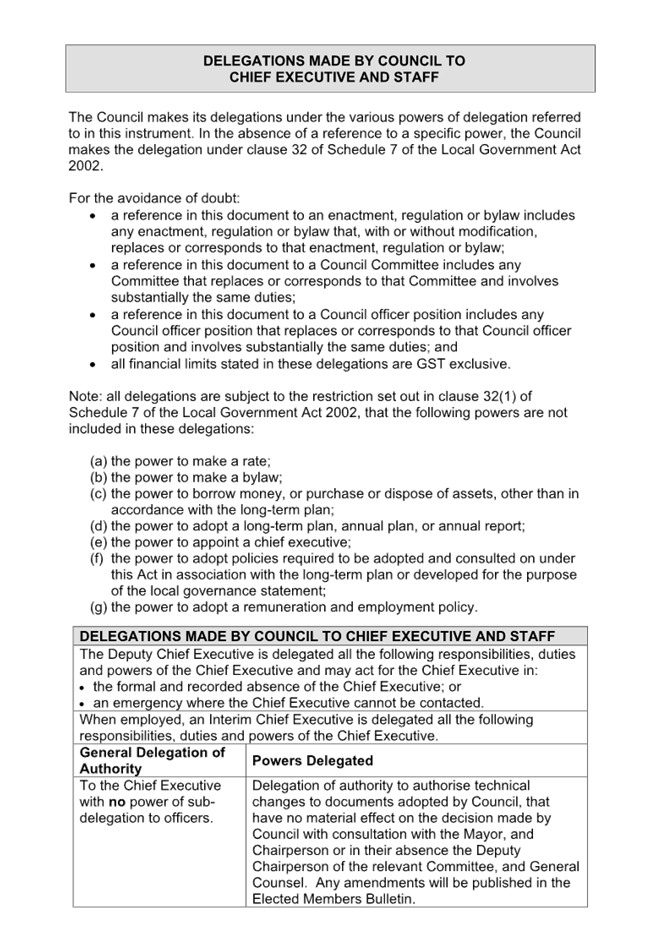
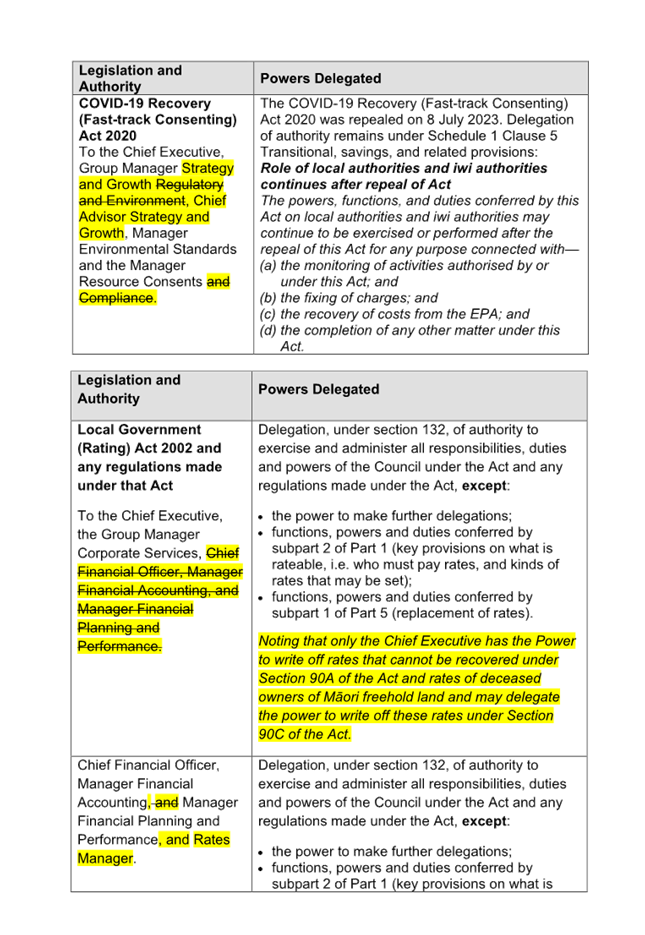
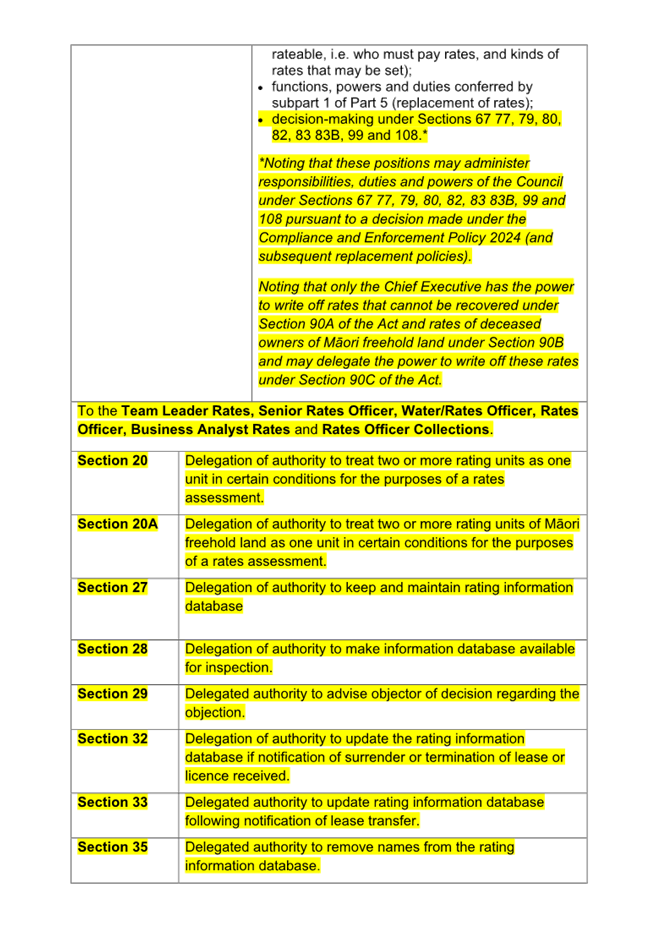
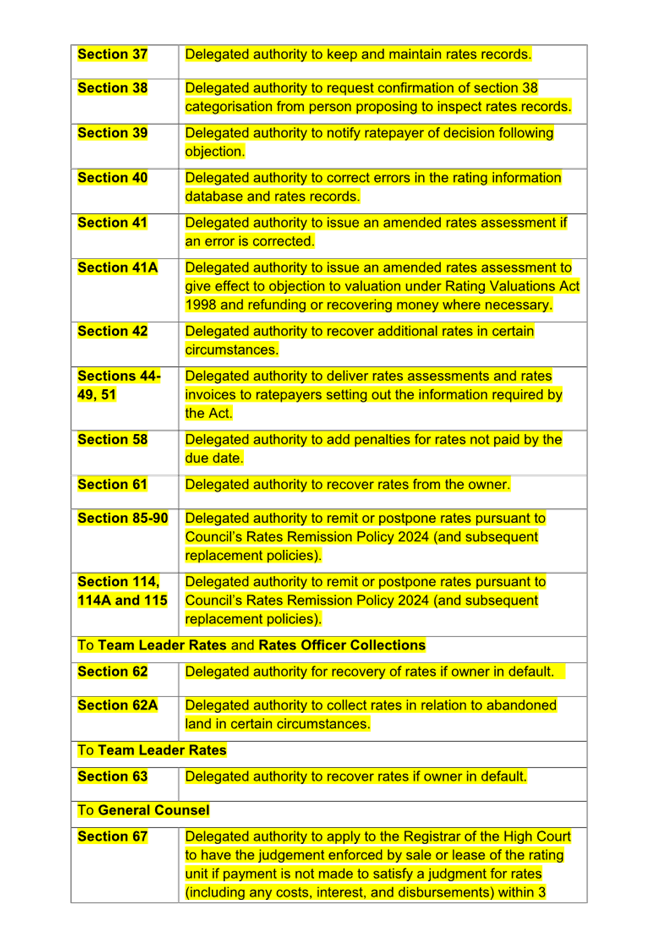

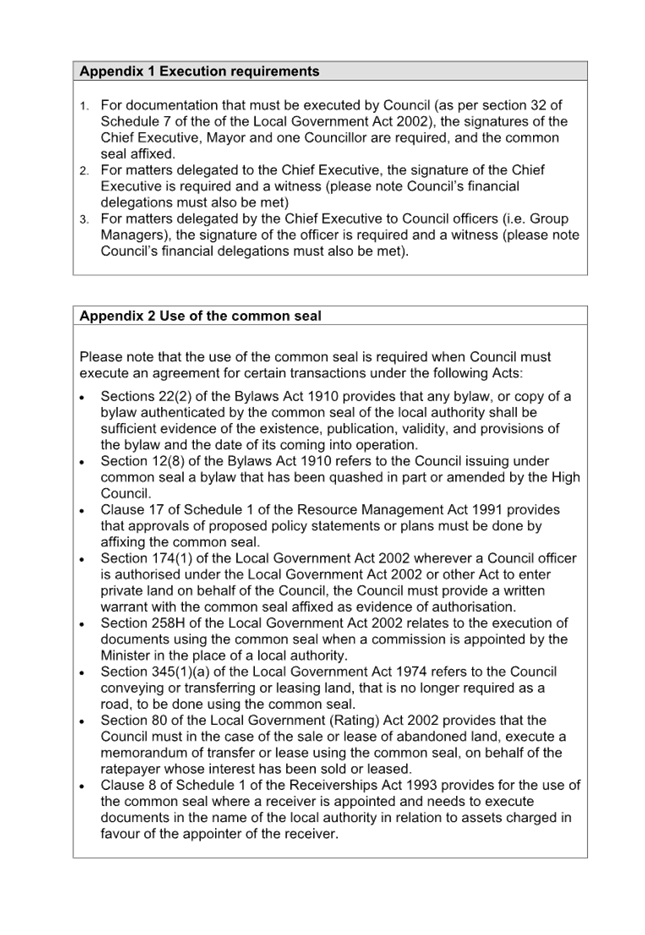
|
Council Meeting Agenda
|
31 October 2024
|
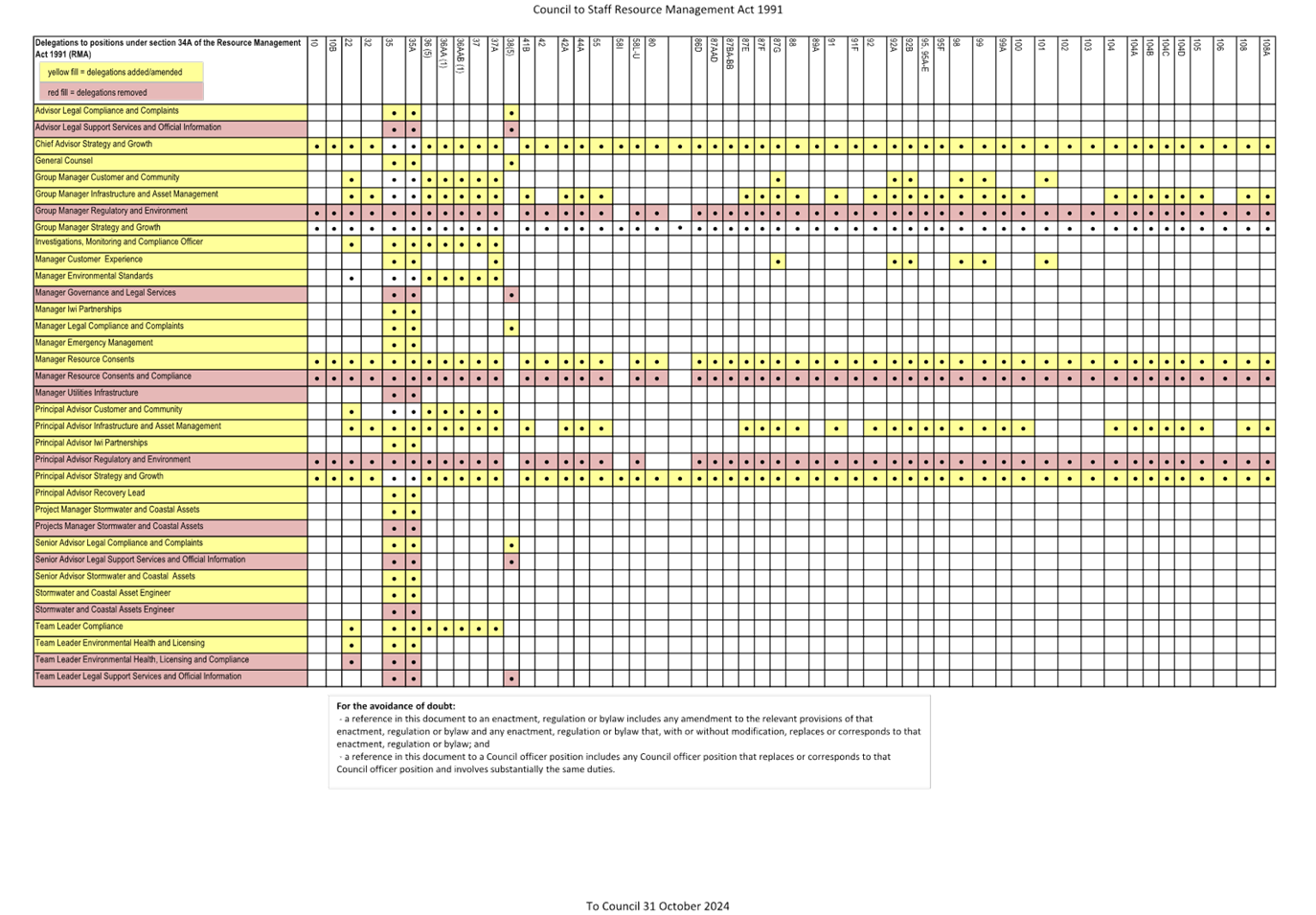
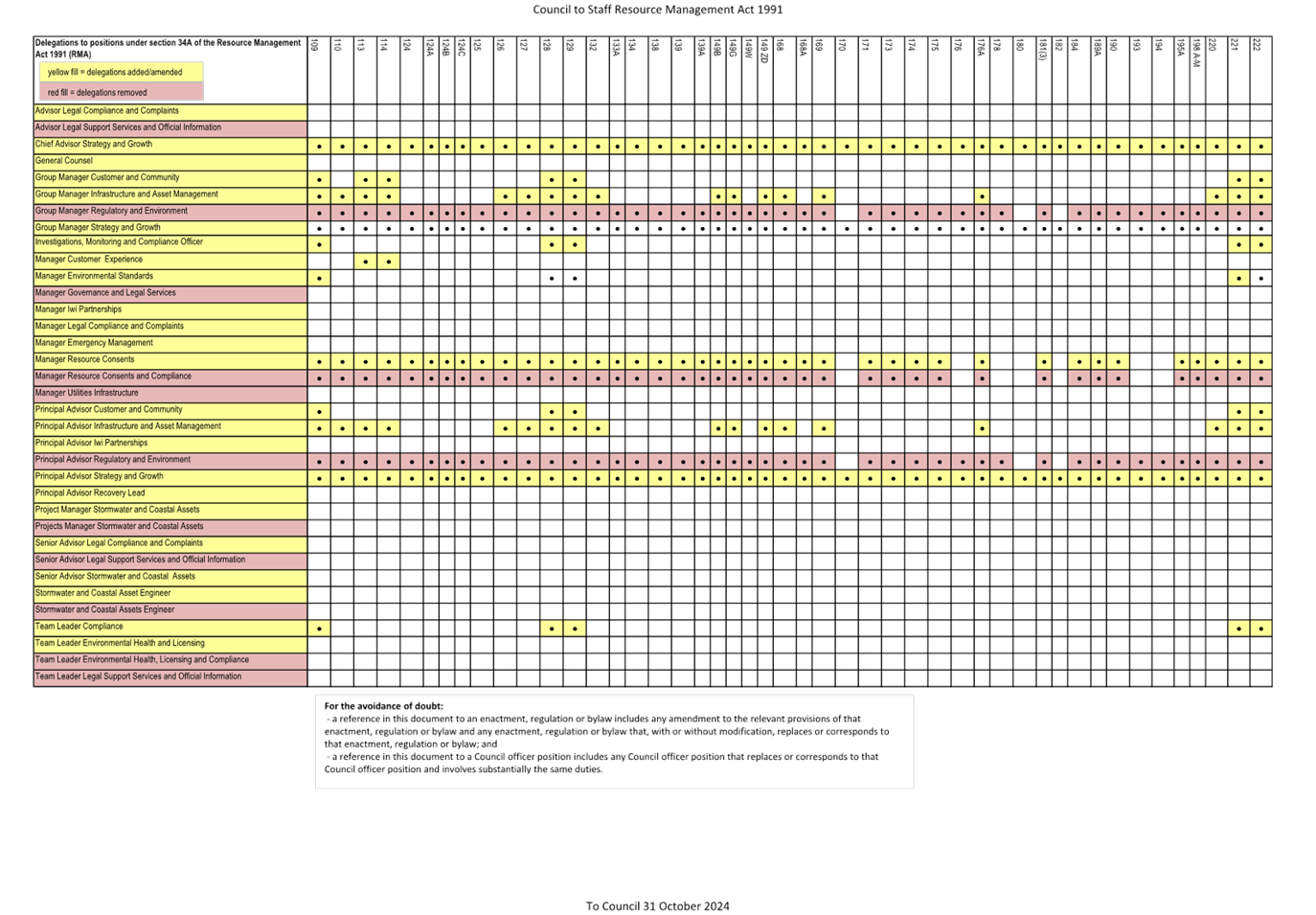
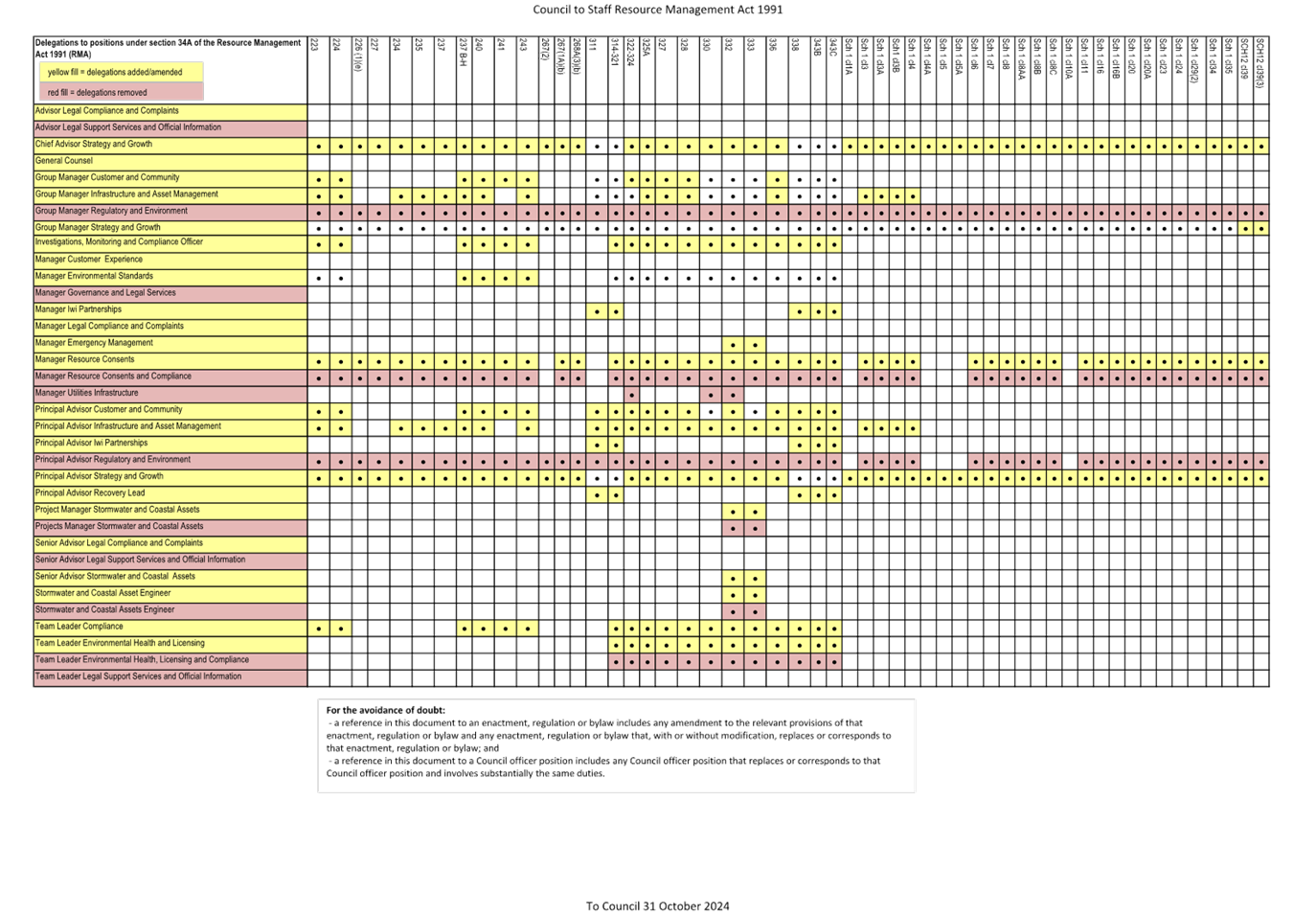
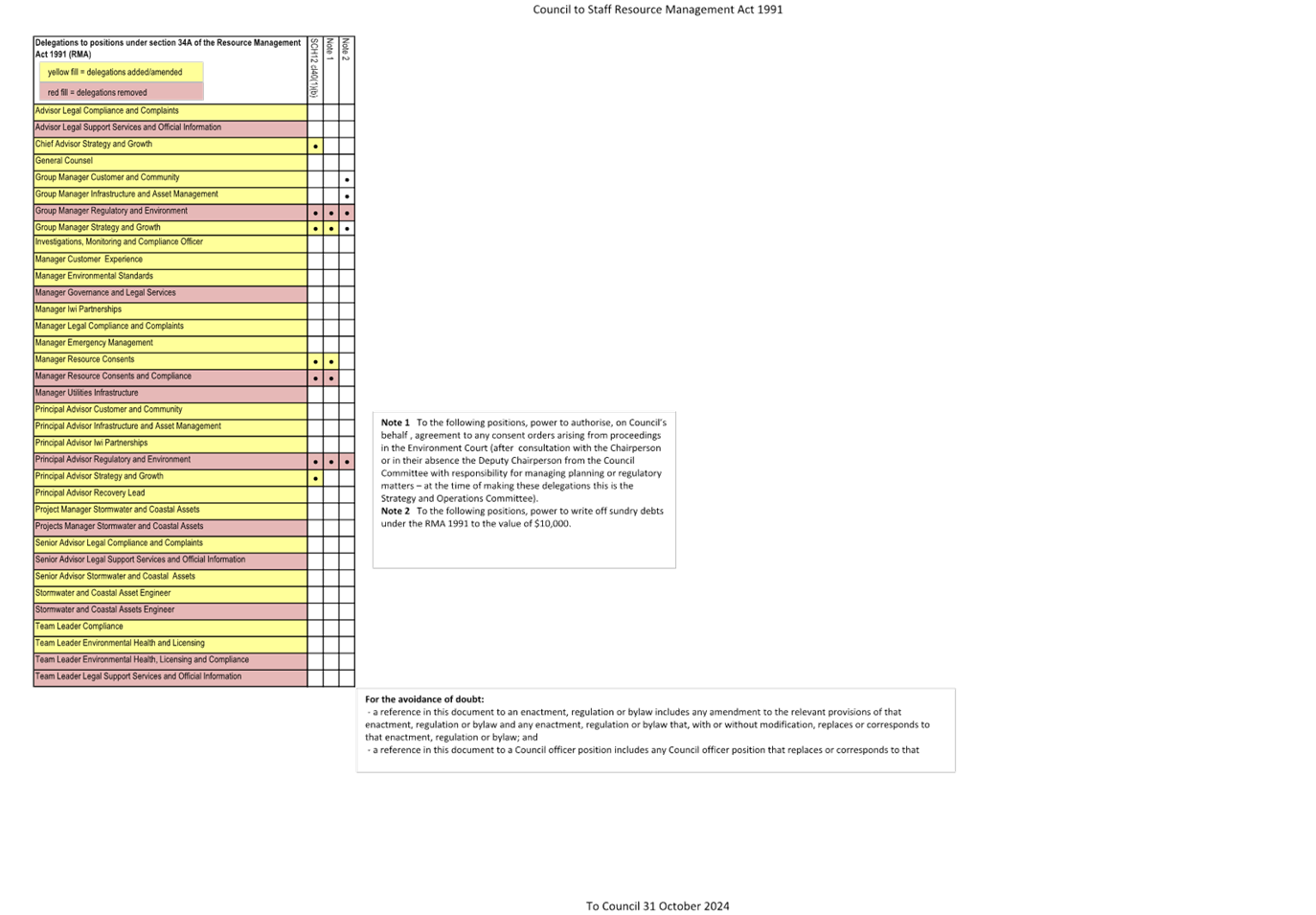
|
Council Meeting Agenda
|
31 October 2024
|
10.6 Proposed
Road Stopping and Taking Plan - Waterfall Road, Paraparaumu
Kaituhi | Author: Kieran
Lamberton, Senior Advisor Property
Kaiwhakamana | Authoriser: Kris Pervan, Group Manager Strategy & Growth
Te
pūtake | Purpose
1 To seek Council approval:
1.1 To commence road stopping procedures
under the Public Works Act 1981 for an area of redundant road in Waterfall
Road, Paraparaumu; or the Local Government Act 1974.
1.2 The exchange of
the road stopping land with land for (existing) formed
road to resolve road
encroachment.
He
whakarāpopoto | EXecutive
summary
2 An executive summary is not required for this paper.
Te
tuku haepapa | Delegation
3 The Council has the delegation to consider, approve and authorise
this matter under Section A2 of the Governance Structure and Delegations -
2022-2025 Triennium.
Taunakitanga | RECOMMENDATIONS
That Council:
A. Approve the:
A.1 Stopping
of a section of Waterfall Road, Paraparaumu, being approximately 0.2600 hectares (subject to survey) adjoining 23
Waterfall Road (shown as Road to Stop, highlighted green, in Attachment 1).
A.2 Commencement of road stopping
procedures under the Public Works Act 1981 (PWA).
B. Note that road stopping under the PWA
requires consent by the Minister for Land Information (LINZ).
C. Agree in principle
that should the Minister for LINZ not agree to stop the section of Waterfall
Road (Road Stopping Land) under the PWA that:
C.1 Council and the applicant
proceed with the road stopping under section 342 of the Local Government Act
1974 (LGA 1974).
C.2 Council staff initiate
the road stopping procedures under the LGA 1974, should both Council and the
applicant agree to proceed under that Act, including a full public consultation
process.
D. Approve the
exchange of the Road Stopping Land described in Recommendation A with land on
the adjoining landowner’s property (the applicant) at 23 Waterfall Road,
being 0.2400 ha (subject to survey), as per agreement with the landowner. The exchange will be subject
to the successful road stopping process, under either mechanism as noted above.
E. Delegate to
the Chief Executive the power to:
E.1 Formally approve the public
notice to declare the section of Waterfall Road stopped, under the PWA or LGA
1974, subject to all statutory requirements being met and no objections by the
adjoining owner or public being received (if completed
under the LGA 1974).
E.2 Negotiate the terms of sale, impose any reasonable
covenants and easements, and enter into an appropriate exchange agreement in
respect of the Road Stopping Land and Land to be taken for Road. Any such
agreement is conditional upon the Road Stopping Land being stopped.
Tūāpapa | Background
4 The intersection at Waterfall Road was closed as part of the
double-tracking of the railway to Waikanae. In conjunction with KiwiRail and
their Regional Rail Programme in Kāpiti, the New Zealand Transport Agency,
Waka Kotahiclosed the Waterfall Road (Lynch’s Crossing) connection with
State Highway 1 (SH1) on Monday 10 January 2011. A new route to/from SH1 via
Emerald Glen Road now provides safer access for all road users.
Application regarding redundant road at 23 Waterfall Road
5 An application has been received from the landowners of 23 Waterfall
Road, Paraparaumu to stop a section of road which adjoins their property
(Waterfall Road Land). Of note:
5.1 The Waterfall Road Land is
shown coloured green on the Proposed Road Stopping and Taking Plan in Attachment
1. As the Waterfall Road Land no longer provides access to any
properties, it is no longer required for transport purposes.
5.2 The applicant noted that a
section of Waterfall Road is located outside of the legal boundaries and is
encroaching on their private land (23 Waterfall Road). This land is coloured
yellow in Attachment 1, and is the ‘land to be acquired for and
declared road’ for the purposes of this process.
6 For clarity, we have outlined the definitions for road stopping and
road encroachment below:
Road stopping
6.1 Road
stopping is the process of changing land with the legal status of road to fee
simple land so that it can then be sold.
6.2 The road stopping and land
to be acquired for and declared road is a statutory process managed by Council.
In processing applications to stop a section of legal road, consideration is
given to the impact on road users’ immediate needs or future outcomes.
6.3 Before any road land can
be stopped, confirmation is required that the road is no longer needed for
transport purposes before carrying out the necessary road-stopping processes,
including removing the road status of the land so that it is no longer subject
to laws relating to roads, such as public access. Service authorities are also
approached to advise if there are any assets that need protecting within the
section of road proposed to be stopped.
6.4 The road-stopping process
is governed by either the Local Government Act 1974 (LGA 1974) or the Public
Works Act 1981 (PWA). Information in Attachment 2
provides guidance on the different mechanisms for stopping roads.
6.5 Under
the PWA, Council must grant consent (under
delegation to the Chief Executive) to stop the road, obtain the consent
of adjoining owner(s) to stop the road, and
seek the agreement of the Minister for Land information (Minister) as part of the process.
6.6 If
the Minister grants consent, a road stopping process progresses in accordance
with the PWA. If the Minister declines the request to stop the road under
the PWA, the proposal to stop and take the road is revised and, if not
withdrawn by the applicant, will be progressed under the LGA 1974.
Road Encroachment
6.7 Road encroachment occurs
when public access to a legal road is restricted, where an area of legal road
has been occupied for private use or, where an area of legal road has been
inadvertently located
outside of the legal boundaries and encroaches on private land.
HE
KŌRERORERO | DISCUSSION
7 Council officers propose to progress the road stopping application
in accordance with the PWA, including:
7.1 Decision
by Council to grant consent (under delegation to the Chief Executive) to stop
the road:
· Multiple service requests have been received by Council since the
Waterfall Road Land was severed requesting the removal of illegally dumped
rubbish, green waste and abandoned cars. Council, as road owner currently bears
responsibility and cost for clearing this.
· The desired outcome is to stop the road which is redundant to
Council’s requirements due to the removal of the level crossing and
connection from Waterfall Road and SH1 (Kāpiti Expressway), while that
part of Waterfall Road which is encroaching on the applicant’s land can
be taken for and declared as legal road.
· Given this, the road stopping
application is proposed to be progressed under the provisions of the PWA.
7.2 Obtaining
the consent of adjoining owner(s) to stop the
road:
· To progress this application under the
provisions of the PWA, the applicant will need to obtain the consent of the
adjoining landowner. The section of road proposed to be stopped along Waterfall
Road has one adjoining landowner.
· Preliminary investigation also indicates that service authorities,
including KiwiRail, have provided their agreement in principle to the stopping
of that part of Waterfall Road described as the Waterfall Road Land, subject to
appropriate easements for any purposes/access that may be required. This will
be confirmed in the process to stop the road, should Council agree to proceed
with the stopping.
7.3 Agreement
of the Minister for Land information (Minister):
· Following Council decision, if approved, the Minister for Land
Information will need to agree, and action the road stopping by notice in the
New Zealand Gazette.
· Should the Minister for Land Information decline
to progress the road stopping, Council proposes that the next step would
include taking action to progress it under the provisions of the Local
Government Act, 1974 (note guidance in Attachment 2). This paper asks Council
to approve progressing the road stopping under either mechanism, to cover the
possibility that the Minister does not progress it.
He
take | Issues
8 No issues have been identified as part of this process.
9 Of note, public notification will not be
required under the PWA. However, if an adjoining owner does not provide their
consent, then proceeding under the provisions of the LGA 1974 will require public
notification to be undertaken.
Ngā
kōwhiringa | Options
10 Three options are outlined in Table 1 below, with the preferred
Option (A) seeking Council agreement to progress the application for road
stopping through two-steps:
10.1 Firstly, to progress Road stopping of
the Waterfall Road land under the PWA, and to amalgamate with the adjoining
owner’s title; and
10.2 Secondly, to then take part of the
applicant’s land and declare it as road under the PWA.
Table 1: Options
for decision
|
Kōwhiringa
| Options
|
Hua |
Benefits
|
Tūraru
| Risks
|
|
Option A (recommended):
· Road
stopping the Waterfall Road land under the PWA and amalgamate with the
adjoining owner’s title.
· Take
part of the applicant’s land and declare it as road under the PWA.
|
· All costs
associated with the road stopping of the Waterfall Road land to be met by the
applicant.
· The costs
to Council to take the applicant’s land for road can be offset and
deducted from the road stopping costs.
· Council
will not be responsible for maintenance of the redundant area of Waterfall
Road; and will also be able to remedy the encroachment on the
applicant’s land.
|
· The road
stopping under the PWA requires the consent of the Minister for Land
Information and written consent of any adjoining owner.
|
|
Option B (as
alternative to Option A)
· Road
stopping the Waterfall Road land under the LGA 1974 and amalgamate with the
adjoining owner’s title.
· Take
part of the applicant’s land and declare it as road under the LGA 1974.
|
· All costs
associated with the road stopping of the Waterfall Road land to be met by the
applicant.
· The costs
to Council to take the applicant’s land for road can be offset and
deducted from the road stopping costs.
· Council
will not be responsible for maintenance of the redundant area of Waterfall
Road; and will also be able to remedy the encroachment on the
applicant’s land.
|
· Potential
for objections to be received through public notification.
· If
objections cannot be resolved, a hearing in front of the appropriate Council
Committee will be scheduled.
· If the objections are not upheld, and both the applicant and
objector wish to continue, the case would need to be put to the Environment
Court to rule on the validity of the objections and whether or not Council
can stop the road.
|
|
Option C
(continuing with the status Quo):
· The redundant section of Waterfall Road will remain under
Council’s control and management.
· A formed section of Waterfall Road will be encroaching onto the
neighbouring properties land.
|
· Council and
other service authorities have use of the land without the need for
easements.
|
· Financial risk as Council will be responsible for maintenance of a
portion of road surplus to requirements.
· Risk of property rights dispute as the Council formed Road is
encroaching on private property.
|
Mana whenua
11 Council staff have not specifically engaged mana whenua on this
matter. The road to be stopped is not within an area
marked as Waahi Tapu in the Operative District Plan 2021 overlay. The land
to be taken for road is located on private land owned by the applicant.
Panonitanga
Āhuarangi me te Taiao | Climate change and
Environment
12 There will be no impact on climate change by undertaking the road
stopping and creation of easements sought in this report.
Ahumoni
me ngā rawa |
Financial and resourcing
13 If approved, the Chief Executive will have the delegated authority
to approve financial considerations in this matter. Of note:
13.1 All costs associated with the
stopping of roads, including Council staff time are to be met by the applicant.
13.2 The financial considerations for the
section of road to be stopped will be in accordance with provisions and
disposal requirement of the PWA or the LGA.
13.3 Council and the
applicant will work collaboratively to determine costs each party needs to pay
with respect to the stopping of road and taking of land for road.
Tūraru
ā-Ture me te Whakahaere | Legal and
Organisational Risk
14 The road stopping and acquisition of land for road will be
undertaken in accordance with legislative and Council requirements. Legal
advice, from Council’s legal team and solicitors, will be sought where
required.
Ngā pānga
ki ngā kaupapa here | Policy impact
15 There are no policy impacts.
TE whakawhiti kōrero me te tūhono | Communications &
engagement
16 Consultation as required under the relevant
legislation will take place. For the preferred process under the Public Works
Act 1981, this will include obtaining consent from the Minister for Land
Information for the road stopping and acquisition and declaration of land for
road, and consultation and consent from the adjoining landowners and utility
providers.
17 In the event that the Public Works Act process is unsuccessful for
the road stopping, it would then be undertaken under the Local Government Act
1974 where full public consultation will be required.
Te mahere
tūhono | Engagement planning
18 An engagement plan is not needed to implement this
decision.
Whakatairanga | Publicity
19 No publicity is required.
Ngā āpitihanga | Attachments
1. Proposed
Road Stopping and Taking Plan ⇩ 
2. Guidance on mechanisms for
Stopping Roads ⇩ 
|
Council Meeting Agenda
|
31 October 2024
|
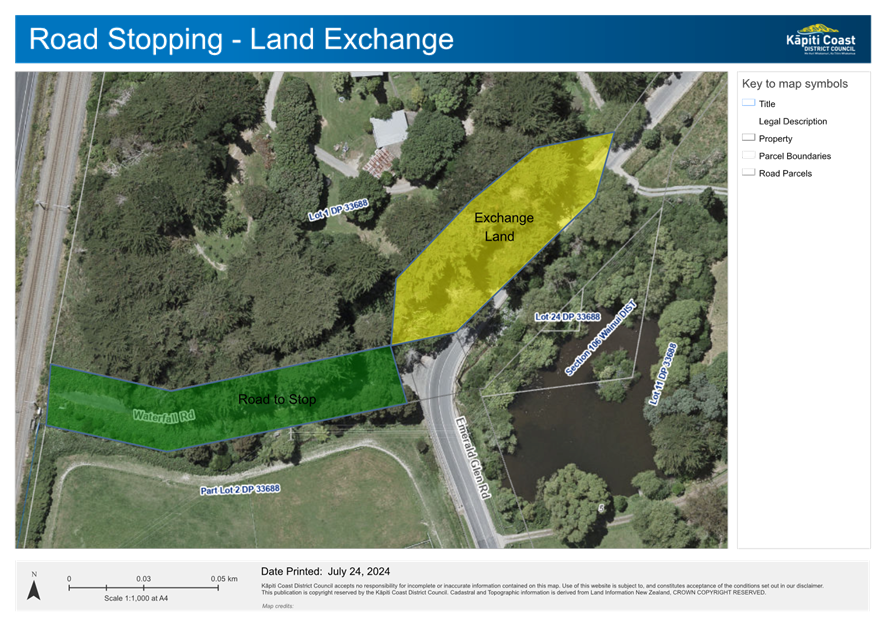
|
Council Meeting Agenda
|
31 October 2024
|
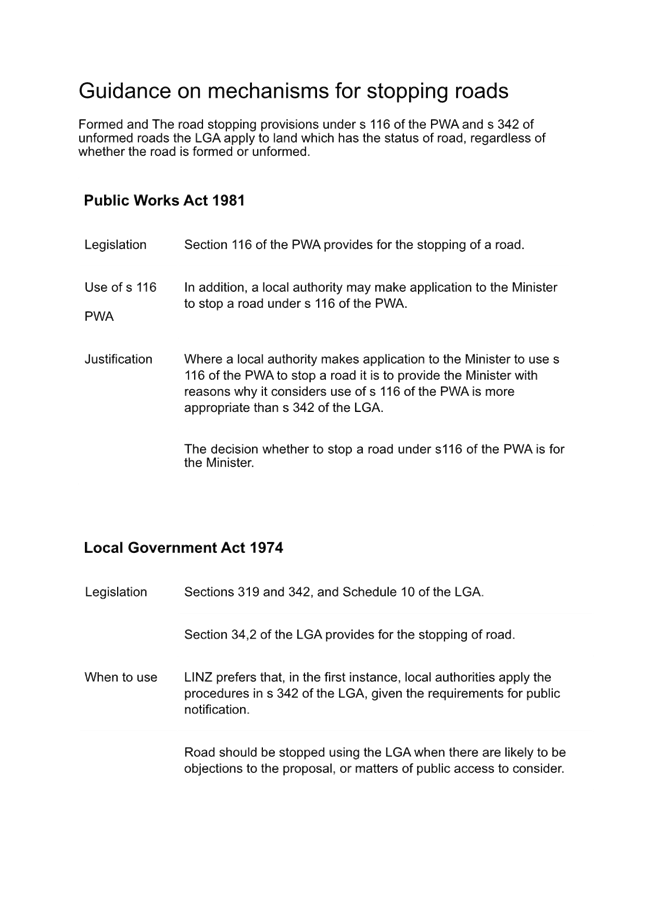
|
Council Meeting Agenda
|
31 October 2024
|
10.7 Notice of Motion -
Coastal Hazard Risk Assessment for the Kapiti Coast Report
I, Councillor Glen Cooper, give notice that at the next
Meeting of Council to be held on 31 October 2024, I intend to move the
following motion:
Rationale
I commend this Notice of Motion to Council.
The Coastal Hazard Risk Assessment for Kapiti Coast Report
can be found via this link: Coastal
Hazard Risk Assessment for the Kapiti Coast Report.
|
Motion
That the Kapiti Coast District Council:
A. Receives
the Coastal Hazard Risk Assessment for the Kapiti Coast Report, submitted by
the Coastal Rate Payers’ Union.

|
|
|
|
|
|
|
Cr Glen Cooper
|
Ngā
āpitihanga | Attachments
Nil
|
Council Meeting Agenda
|
31 October 2024
|
11 Te
Whakaū i ngā Āmiki | Confirmation of Minutes
11.1 Confirmation
of Minutes
Author: Kate
Coutts, Advisor Governance
Authoriser: Mark
de Haast, Group Manager Corporate Services
|
Taunakitanga | Recommendations
That the minutes of the
Council meeting of 24 September 2024 be accepted as a true and correct
record.
That the minutes of the
Council meeting of 26 September 2024 be accepted as a true and correct
record.
|
Ngā
āpitihanga | Attachments
1. Council
Meeting Minutes - 24 September 2024 ⇩ 
2. Council
Meeting Minutes - 26 September 2024 ⇩ 
|
Council Meeting Agenda
|
31 October 2024
|
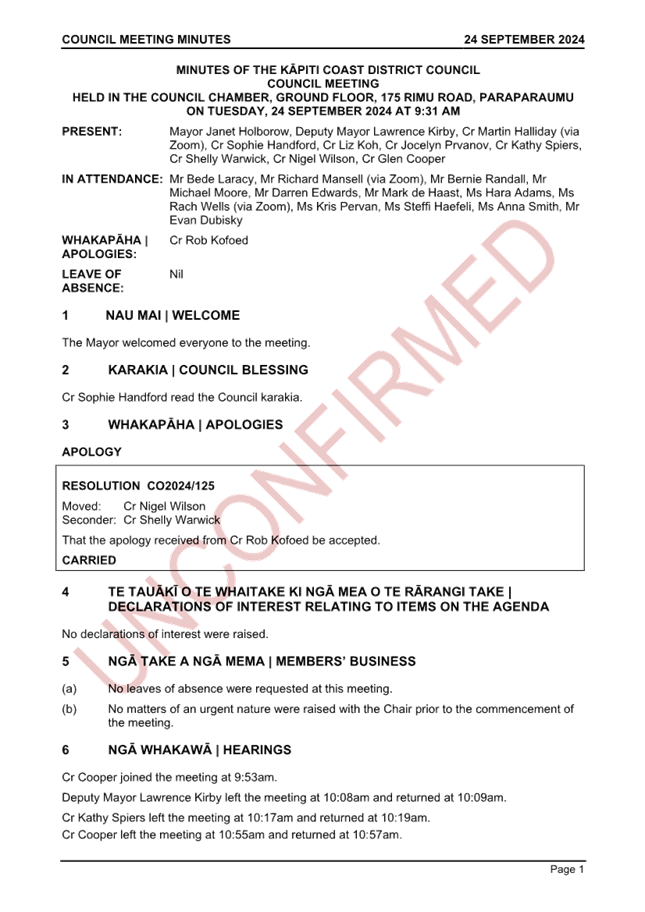
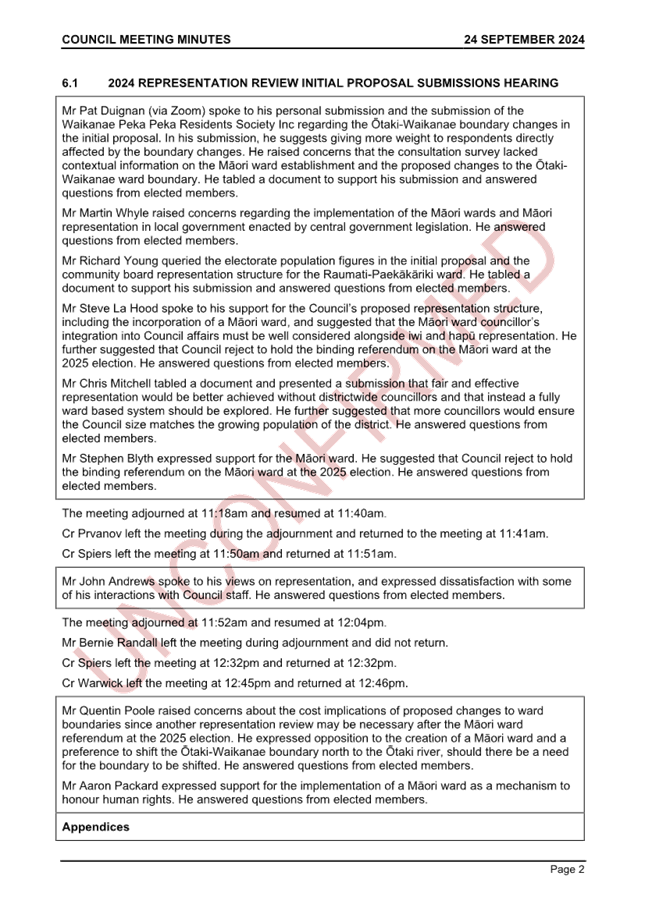
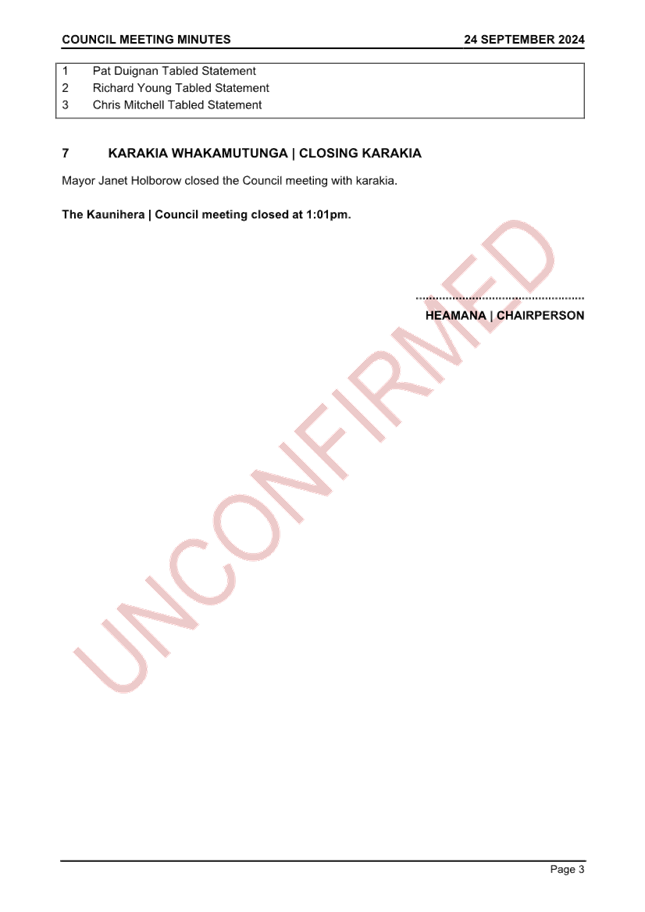
|
Council Meeting Agenda
|
31 October 2024
|
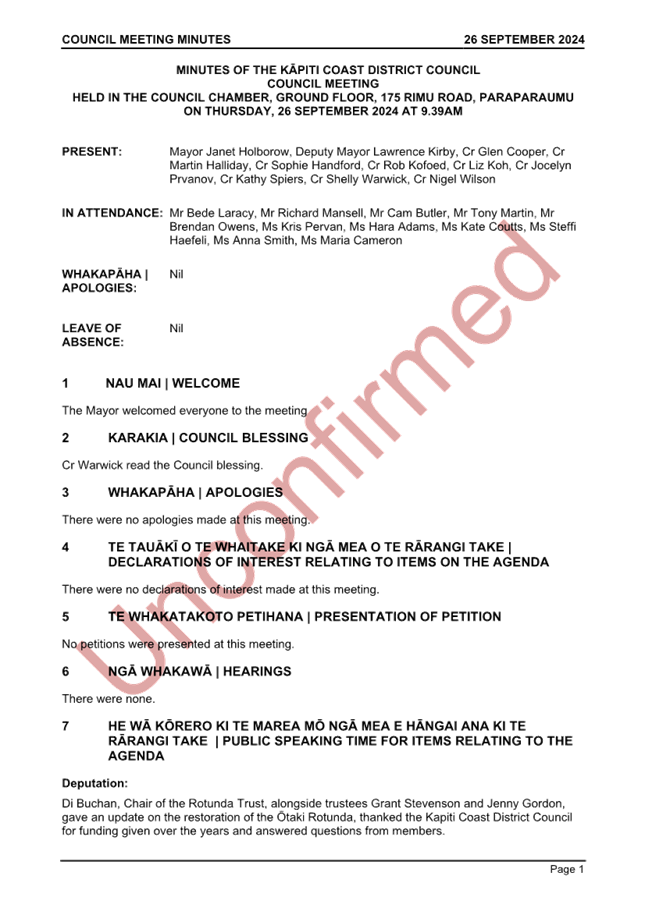
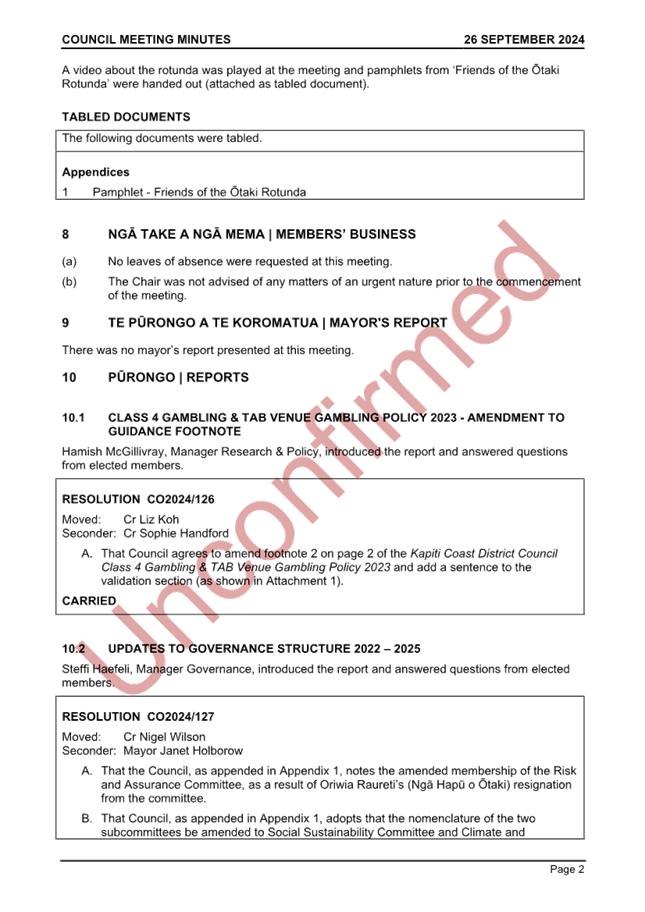
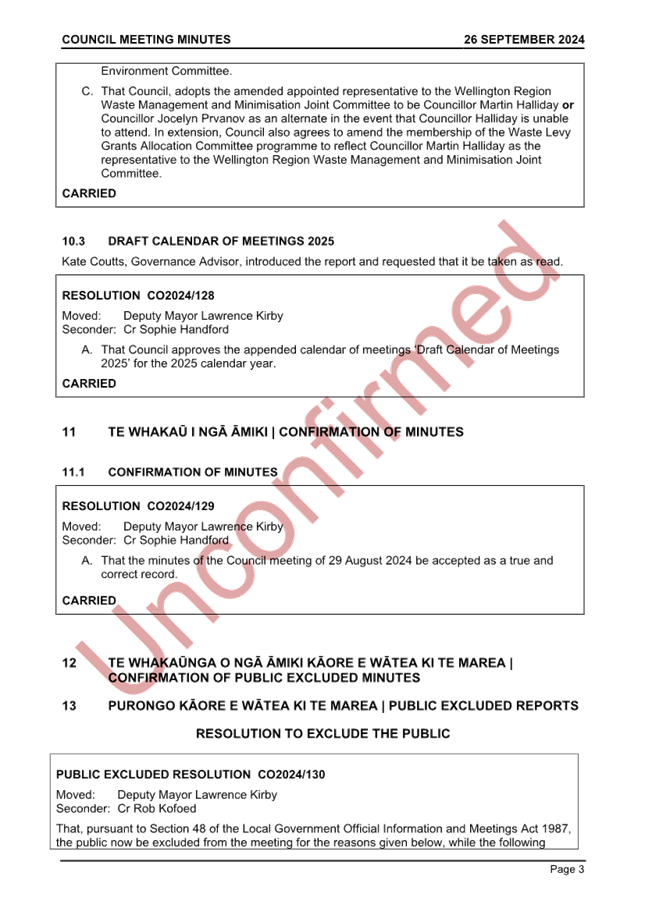
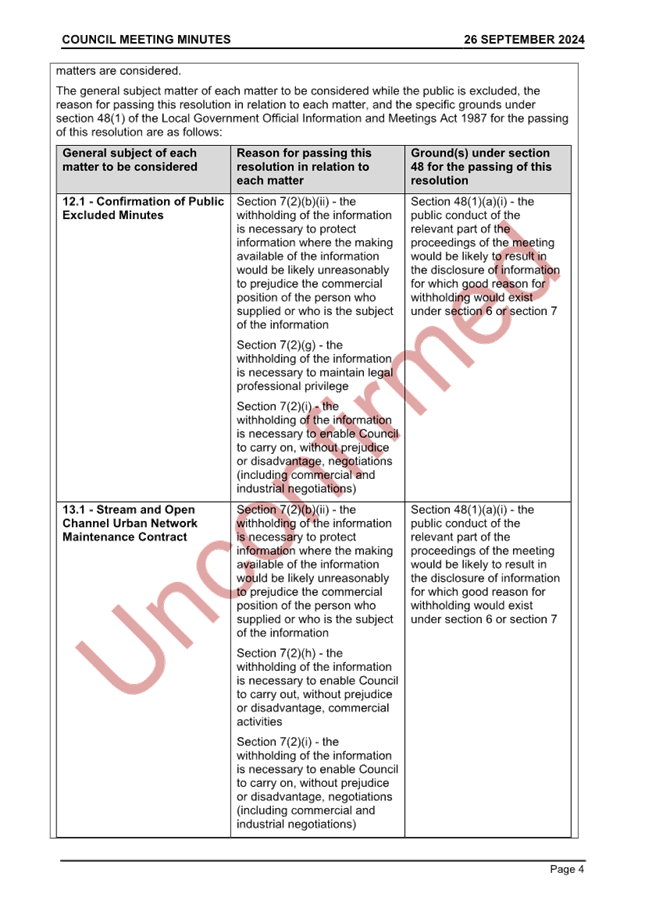
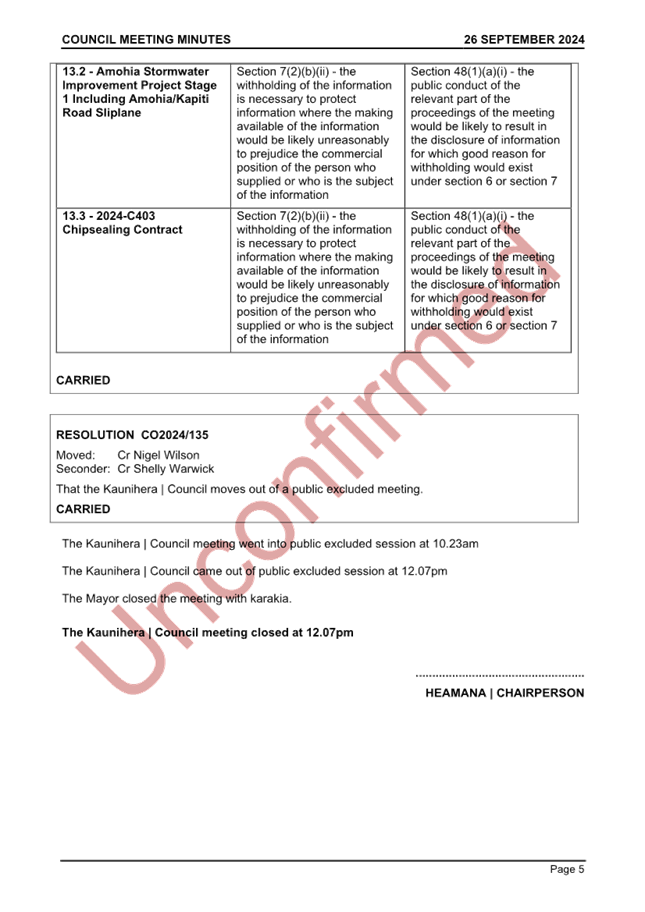
12 Te
Whakaūnga o Ngā Āmiki Kāore e Wātea ki te Marea | Confirmation
of Public Excluded Minutes
13 Purongo
Kāore e Wātea ki te Marea | Public Excluded Reports
Resolution
to Exclude the Public
|
PUBLIC EXCLUDED ReSOLUtion
That, pursuant to Section 48 of the Local Government
Official Information and Meetings Act 1987, the public now be excluded from
the meeting for the reasons given below, while the following matters are
considered.
The general subject matter of each matter to be considered
while the public is excluded, the reason for passing this resolution in
relation to each matter, and the specific grounds under section 48(1) of the
Local Government Official Information and Meetings Act 1987 for the passing
of this resolution are as follows:
|
General subject of each
matter to be considered
|
Reason for passing this
resolution in relation to each matter
|
Ground(s) under section 48
for the passing of this resolution
|
|
12.1 - Confirmation of Minutes
|
Section 7(2)(b)(ii) - the withholding of the information
is necessary to protect information where the making available of the
information would be likely unreasonably to prejudice the commercial
position of the person who supplied or who is the subject of the
information
Section 7(2)(h) - the withholding of the information is
necessary to enable Council to carry out, without prejudice or
disadvantage, commercial activities
Section 7(2)(i) - the withholding of the information is
necessary to enable Council to carry on, without prejudice or disadvantage,
negotiations (including commercial and industrial negotiations)
|
Section 48(1)(a)(i) - the public conduct of the relevant
part of the proceedings of the meeting would be likely to result in the
disclosure of information for which good reason for withholding would exist
under section 6 or section 7
|
|
14 Karakia
Whakamutunga | Closing Karakia
|
Kia tau ngā manaakitanga
ki runga i a tātou katoa,
Kia hua ai te
mākihikihi, e kī ana
Kia toi te kupu
Kia toi te reo
Kia toi te wairua
Kia tau te mauri
Ki roto i a
mātou mahi katoa i tēnei rā
Haumi e! Hui e! Taiki
e!
|
May blessings be upon us all,
And our business be
successful.
So that our words endure,
And our language endures,
May the spirit be strong,
May mauri be settled and in
balance,
Among the activities we will
do today
Join, gather, and unite! Forward
together!
|









































